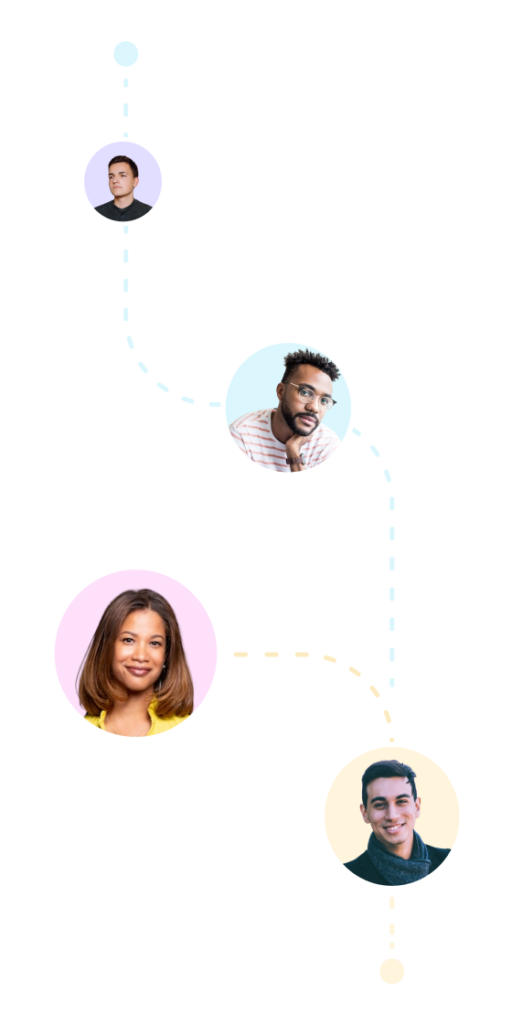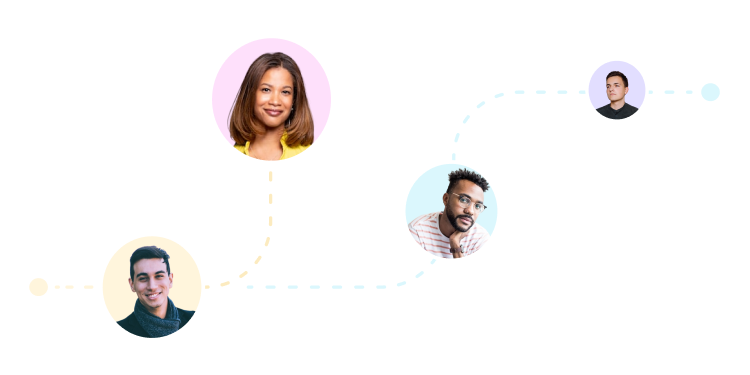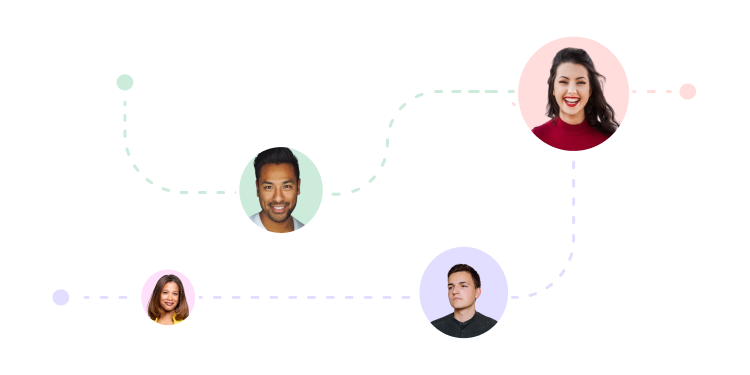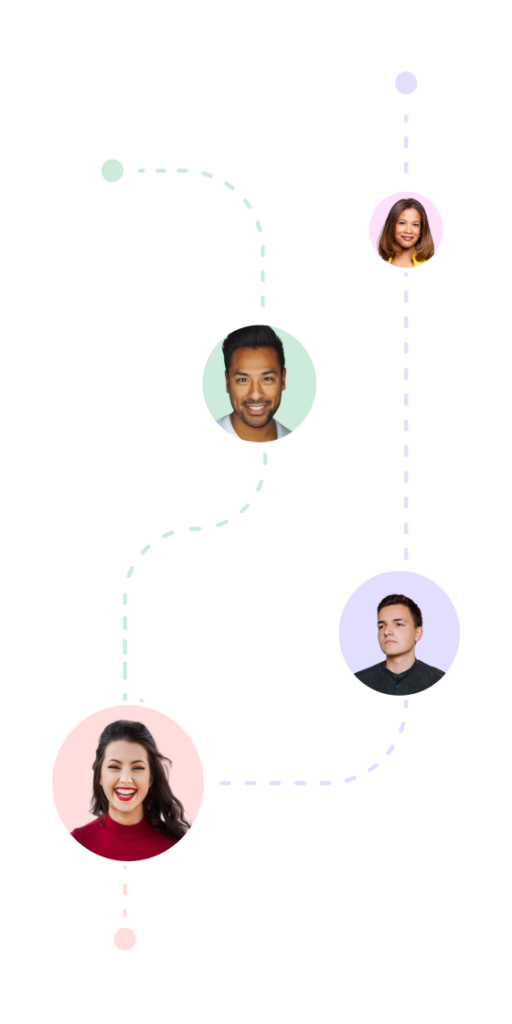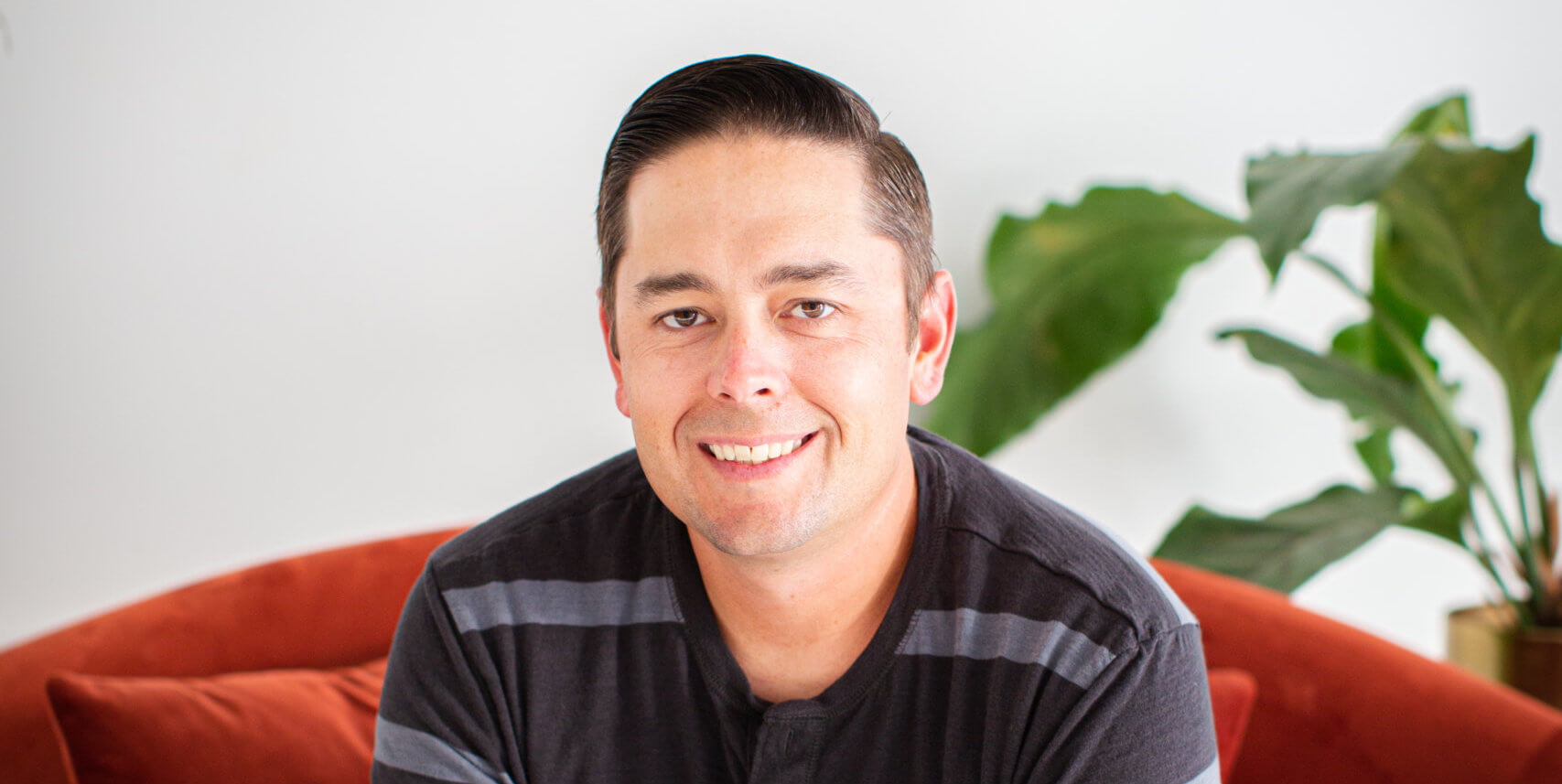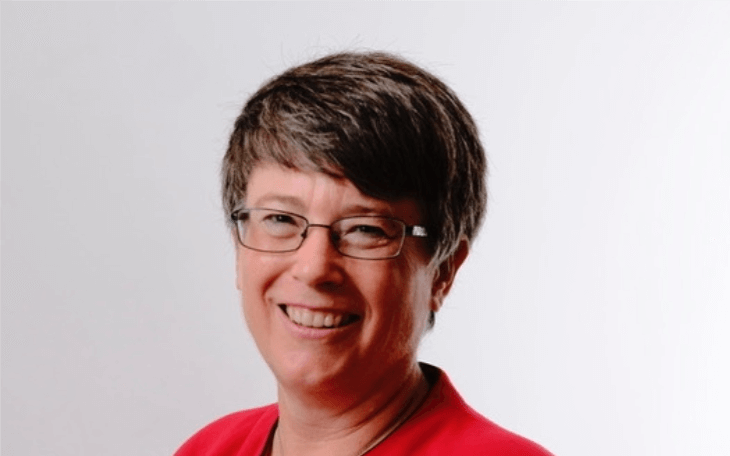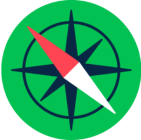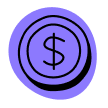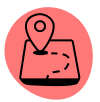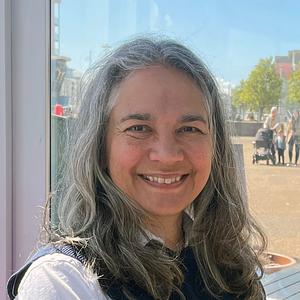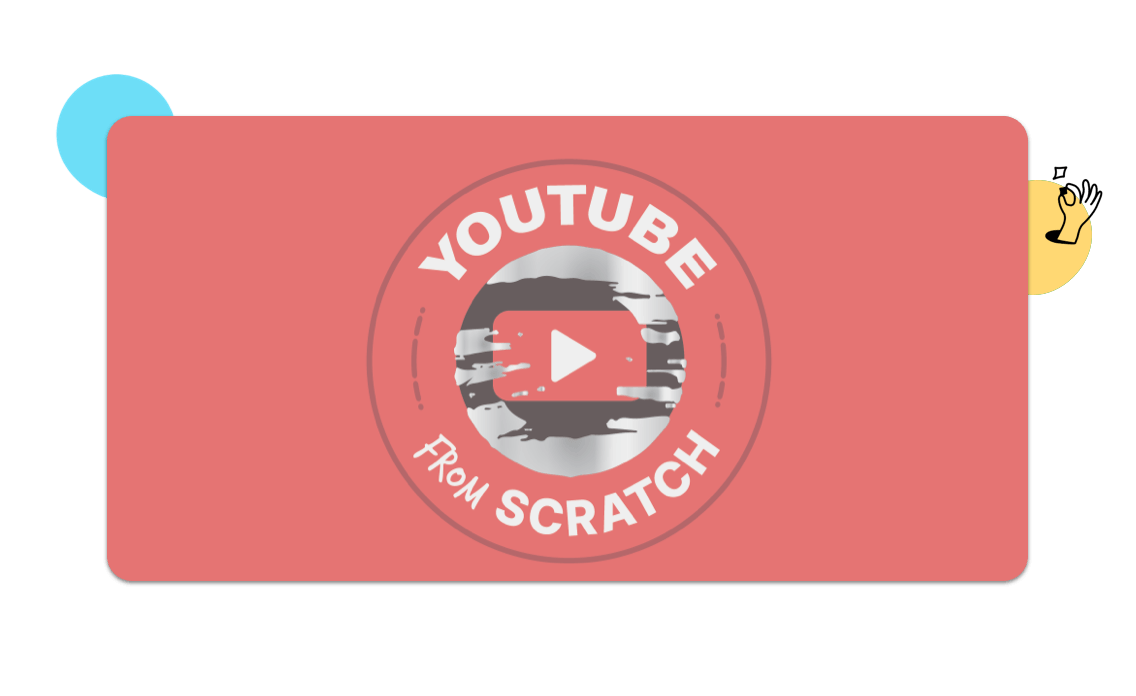Next-level growth for next-level entrepreneurs Connect with established entrepreneurs for support, inspiration, and collaboration 10k+ Posts & Comments 450+ Active Members 5 Experts in Residence 100+ Private Events About SPI Pro The journey is hard… it doesn’t have to be harder. Don’t do it alone. Loneliness. Doubt. Knowledge gaps. Distraction. Overwhelm. Entrepreneurs battle these struggles […]
The post SPI Pro Community appeared first on Smart Passive Income.
]]>Next-level growth for next-level entrepreneurs
Connect with established entrepreneurs for support, inspiration, and collaboration
10k+
Posts & Comments
450+
Active Members
5
Experts in Residence
100+
Private Events
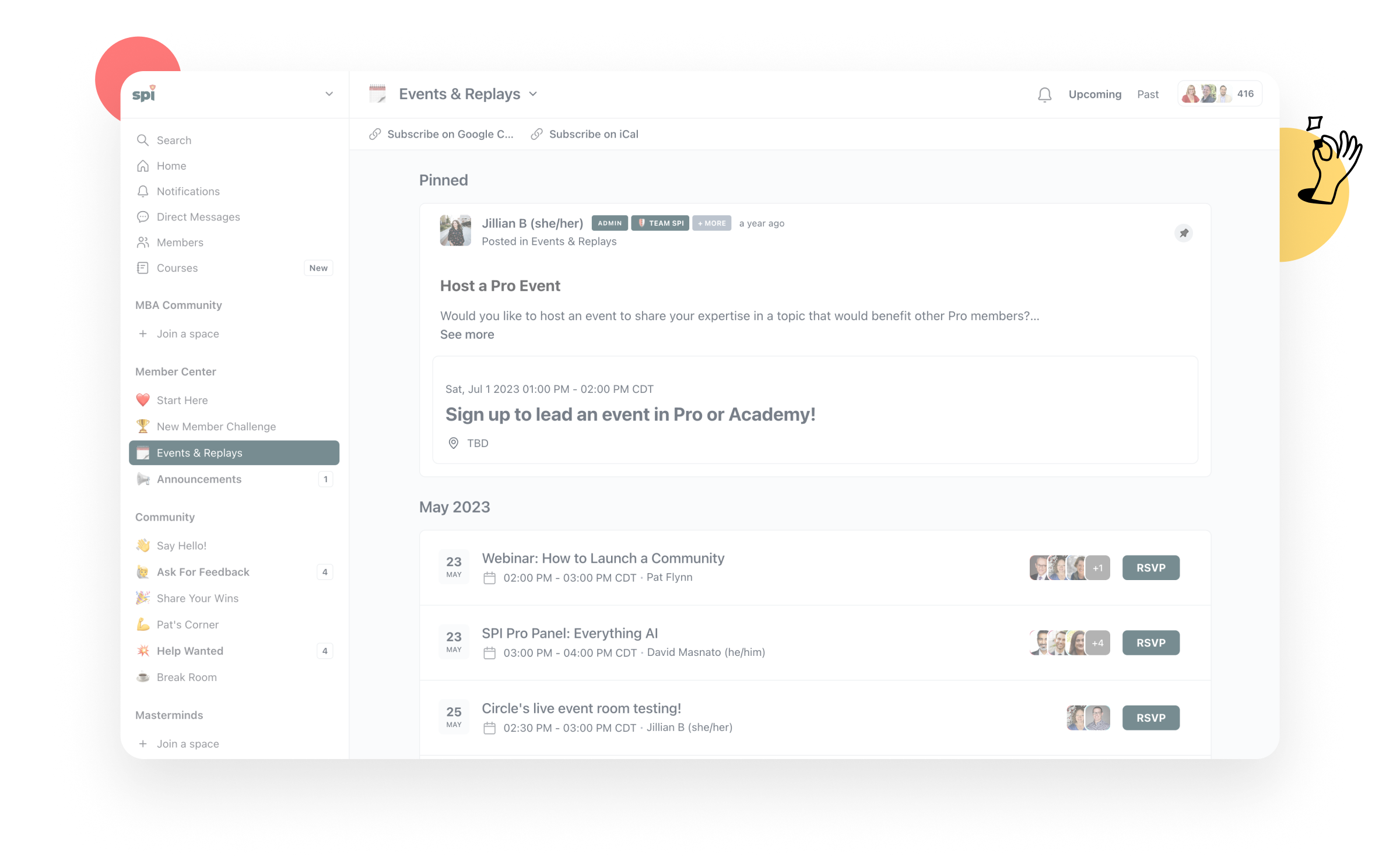
The journey is hard… it doesn’t have to be harder. Don’t do it alone.
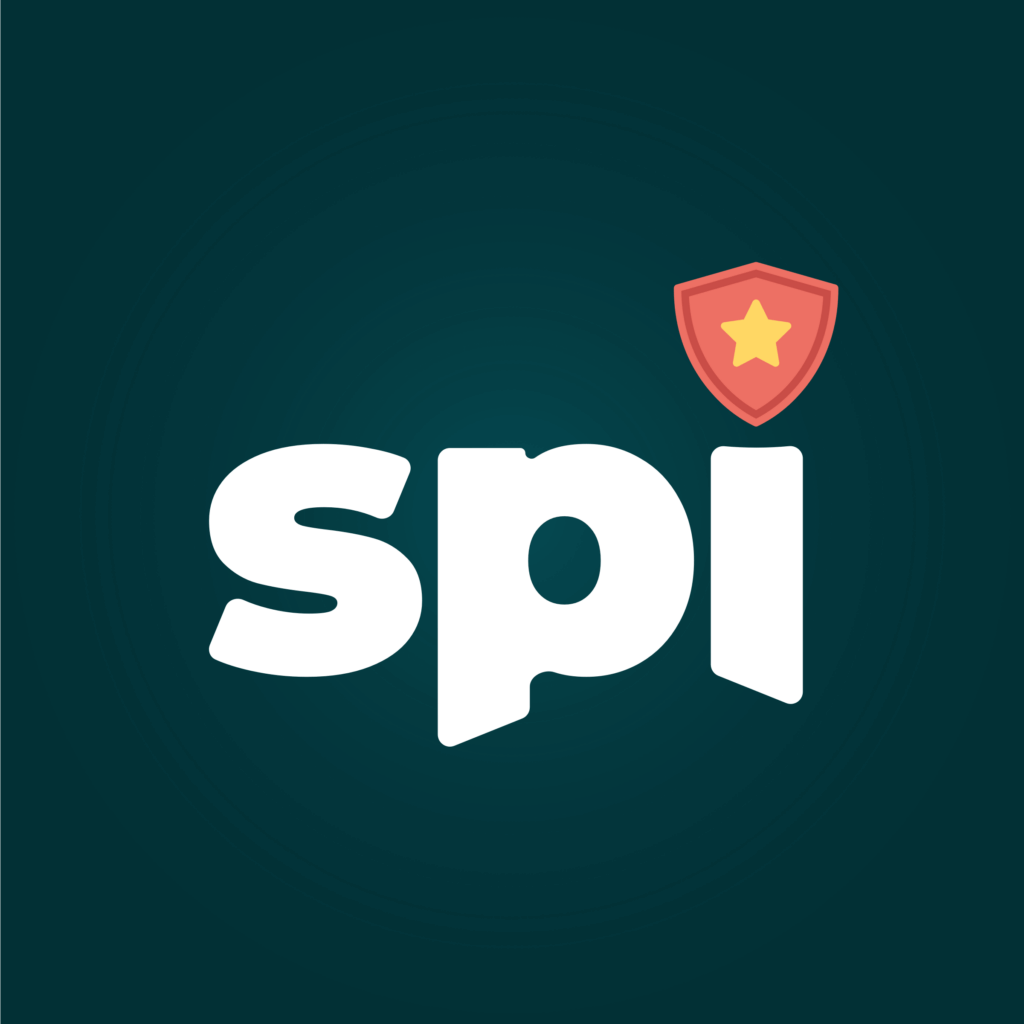
Loneliness. Doubt. Knowledge gaps. Distraction. Overwhelm.
Entrepreneurs battle these struggles every day, leading to unfocused action, wasted resources, poor decision-making, and overwhelm. Without the right support and resources, it's no wonder so many entrepreneurs burn out before achieving their dreams.
This difficult terrain is all part of the entrepreneurial journey, but the probability of success — building a profitable business on your own terms — is dramatically improved when you have a supportive, informed community behind you. When you have a cohort of experts you can lean on. When you have a place to get your questions answered. When you belong to a group of peers going through the same struggle alongside you.
Enter SPI Pro.
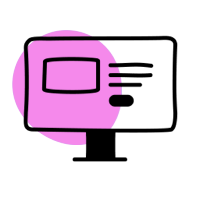
Cutting-edge education
Full access to SPI’s entire library of online courses, as well as accelerators — cohort-based course learning led by members of Team SPI.

SPI Pro is a membership community for entrepreneurs who are ready to take what they’ve already built and 10, 20, or 100x its success and impact.
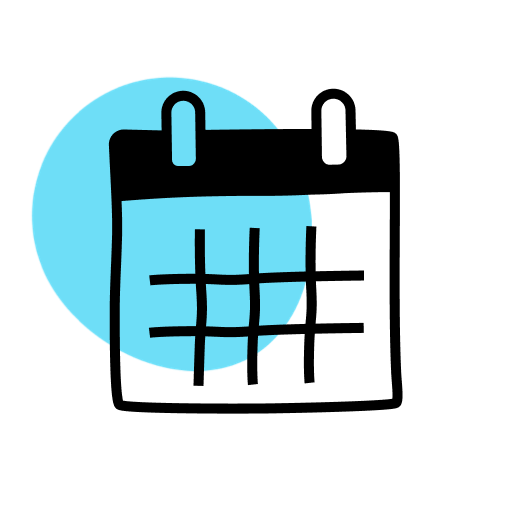
Immersive training
Monthly AMAs, workshops, expert-led events, and other inspiring, live opportunities for enhanced mastery of key skill sets.

Professional networking
We’re the best community for online entrepreneurs because we have the best people. Our Pros care deeply and are unwaveringly passionate about helping each other succeed.
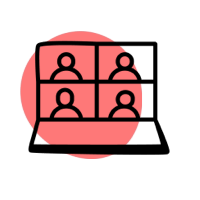
Interactive collaborations
One of the many perks of Pro includes access to masterminds: irreplaceable opportunities for accountability, direct feedback, and support for your next big move.
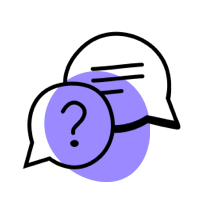
Proven, expert advice
Have questions? Pro has answers. Not only that, our expanding roster of Experts in Residence (see below) offers unparalleled opportunities to get answers from folks who have been in your shoes.
Best-in-class community programming — by design
The experts will see you now
Want some real talk? Our Experts in Residence (EIRs) have you covered. They’ve done the hard work. They’ve learned the ropes. And, lucky for you, they’re your exclusive in-house guides.
When you’re an entrepreneur, you’re responsible for everything. That’s why we’ve built our expert network to cover, well, everything:
Our Experts in Residence network covers the bases so you can focus on what matters most — your business.
Mastermind groups — opportunities for connection that are a cut above the rest
Exclusive only to our Pro community, you can join or even start a mastermind group.
These peer-to-peer mentoring opportunities help members solve their problems with input and advice from a tight-knit group. SPI Pro offers both peer-led and expert-led masterminds. Search for existing groups in the Mastermind Directory or form a new group with entrepreneurs in the Mastermind Connections space. Or, ask our team to hand-match you with the right group to push you forward.
Comprehensive education — access the entire SPI course library
Full access to SPI’s entire course library is included with a Pro membership, a value exceeding $199/quarter.
And we don’t just offer our courses without guidance — included with your Pro membership is the All-Access Pass, SPI’s educational membership community. Inside, you’ll find:
Ready to grow your online business?
Complete the application and we'll reply to your submission within a week.
We would never recommend a tool, product, or resource that we don’t truly believe will benefit you. If you’re not yet ready for Pro, not to worry! The All-Access Pass might be a better fit for the current stage of your business.
Inside SPI Pro
SPI Pro was created to meet the needs of entrepreneurs who want to take their businesses to the next level. We understand those needs because we’ve been there.
SPI Pro is made up of three pillars:

Connect & Grow
Connect with other entrepreneurs who “get it” and are truly invested in supporting each other on the same mission to grow their businesses. Allow our community managers to hand-match you to a mastermind group aligned to push you forward.
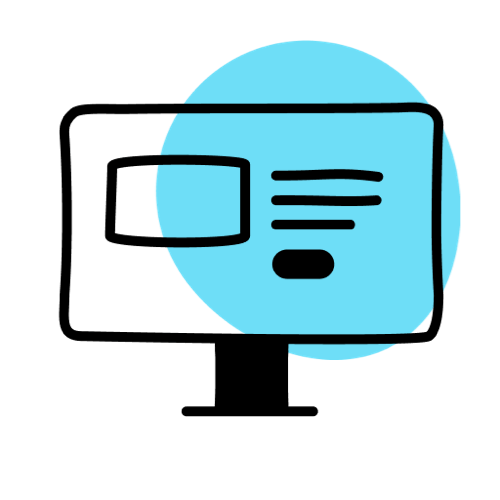
Learning
Access ongoing events exclusive to Pro members that address relevant needs for business growth. SPI's All-Access Pass is also included in your membership, which gives you access to our entire catalog of business courses and workshops.

Team SPI Support
SPI's team of experts are regular participants within Pro, whether it's an Ask Me Anything (AMA) hosted by Pat Flynn, a Social Media Strategy webinar hosted by SPI's Marketing team, or giving advice and answering questions within the community.
A safe place to learn and explore
SPI Pro is a nurturing ecosystem in a professional community void of hate, hype, distractions, tire-kickers, and non-starters. This is where serious entrepreneurs jumpstart their ventures, and it’s where they return time and again to stay sharp, make new discoveries, expand their networks, and elevate their potential.
“The riches are in the niches of the SPI Pro community. My most powerful interactions are definitely within masterminds! SPI did the heavy lifting of bringing the right people together so I could build community around business growth.”

Jette Stubbs
JetteStubbs.com
“The people are what I love most about the community! Everyone is willing to jump in and help and, most importantly, in a nice and caring way. In some other communities I’m a part of, the members talk down to those asking questions. The SPI community is welcoming which promotes more questions and collaboration.”
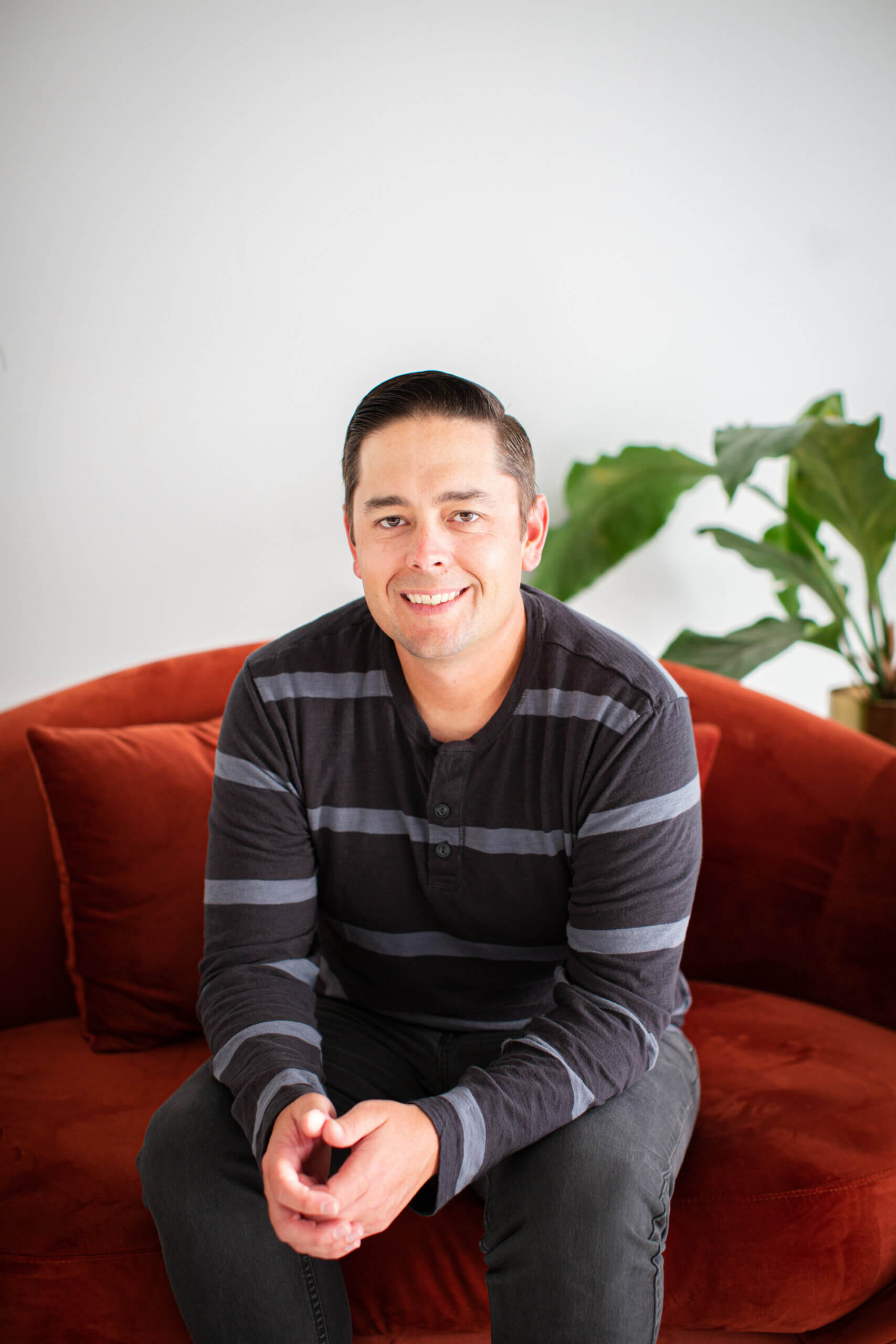
Jeremy Launder
JeremyLaunder.com
“I like the wide variety of businesses that SPI Pro members run and the depth of experience/breadth of knowledge they have on relevant topics. Other communities tend to focus on building a particular skill set, whereas SPI Pro takes a more rounded approach to the world of starting and scaling a business.”
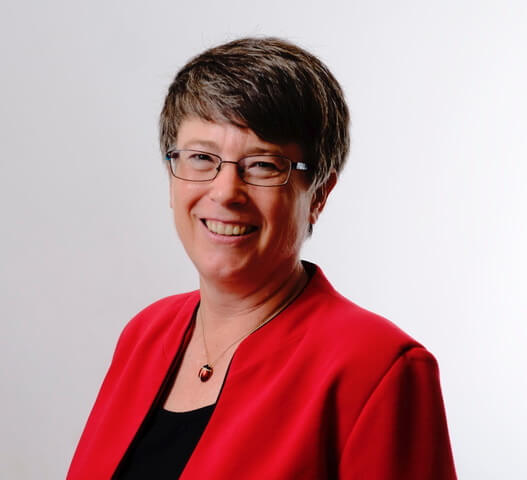
Trudy Rankin
OnlineBusinessLiftoff.com
“I love logging into Pro because I don’t feel like I’m alone anymore. To see so many other people out there working towards the same thing and supporting each other is amazing. And the community administration is amazing — the checking-in, the answers, the connecting — it’s brilliant. I hope that my community has some of the genie in the bottle that Pro has.”
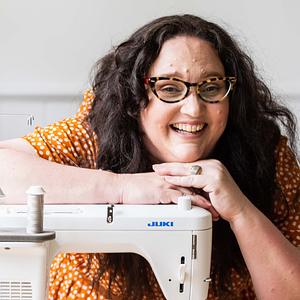
Ange Wilson
GnomeAngel.com
“The community is a really great group of people. I appreciate everything the team has done to create this space for us.”
—Margaret Campbell
Just a few of our incredible Pros (yes, we are bragging) 
Your professional network is waiting for you.
Save 16% with Annual billing


For established entrepreneurs
SPI Pro
$299
/ quarter
$999
/ year
You have an online business that’s up, running, and generating revenue. You’ve figured out a lot but are unsure where to focus next. And the growing pains are real.
Everything in the All-Access Pass community, plus:
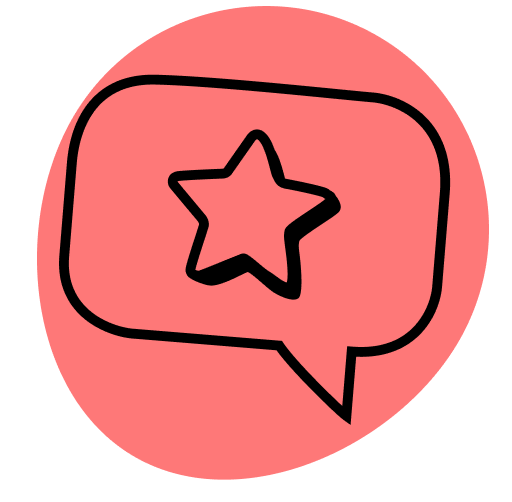
Vetted network of serious pros
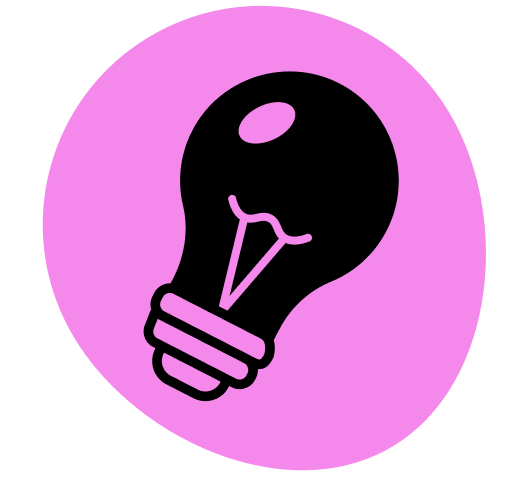
Curated member masterminds

Exclusive access to in-house experts
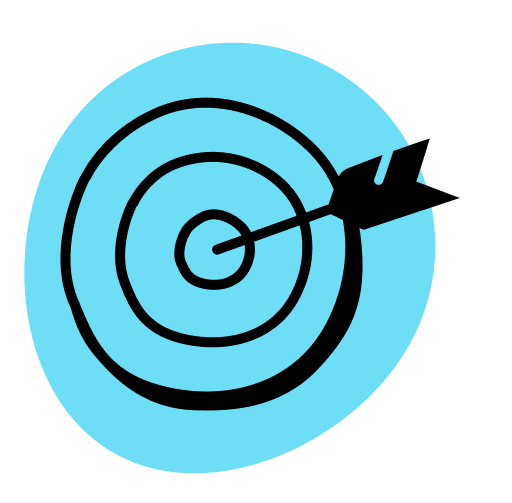
Strategic guidance & tools
“I love logging into Pro because I don’t feel like I’m alone anymore. To see so many other people out there working towards the same thing and supporting each other is amazing. And the community administration is amazing — the checking-in, the answers, the connecting — it’s brilliant. I hope that my community has some of the genie in the bottle that Pro has.”


Ange Wilson
Ready to take your business to the next level?
Complete the application and we'll reply to your submission within a week.
If you're not ready yet for Pro, the All-Access Pass community may be a great fit.
Important FAQs
That's a lot of information, but if you have questions, here are some important and common ones to know about as you consider applying:
Is there a cost to join SPI Pro?
Yes. Our member pricing is $299/quarter or $999/year (16 percent off — equal to 2 months free). Members can cancel their subscriptions at any time.
Am I obligated to join if I apply and receive an invite?
Nope! Your invite will be valid for a period of time once you receive it. If you don't wish to join, just ignore it. But we ask that you please only apply if you're very serious about it. Our team spends time reviewing each application.
I applied but did not receive an invite. What does that mean?
We send an immediate email confirmation to let you know we've received your application. You will receive a follow-up email indicating whether or not your application was accepted. If you didn’t, please check your Spam folder. Your acceptance email will include the invite and all the information you need to join. If you are not yet ready for Pro, we encourage you to check out the All-Access Pass.
What system is used for SPI Pro?
We did a ton of research on various membership platforms before making our choice. In the end, we selected an exciting up-and-comer in the market*: Circle. Think of Circle as a cross between Slack, Facebook Groups, and LinkedIn — which is to say, it's awesome!
* Circle was an up-and-comer at the time — they’ve now grown to be one of the most widely used and trusted community platforms out there.
How is SPI Pro different from SPI courses such as Power-Up Podcasting®?
SPI Pro is a bonafide private community with interactive discussions, exclusive content and events, direct access to Pat and other members of the SPI team, etc., and requires an application to join. In contrast, our courses like Power-Up Podcasting® are available exclusively through the All-Access Pass.
Will SPI courses ever be incorporated into SPI Pro?
Yes! The All-Access Pass is included with your SPI Pro membership. This gives you access to all of SPI's courses, like Power-Up Podcasting®, and all of our workshops, like Cash Flow Fundamentals.
What is the refund policy for SPI Pro?
We offer a 30-day money-back guarantee. If you are unhappy with your membership for any reason, let us know within the first 30 days of membership and we will refund your payment.
Still have questions? Contact us here.
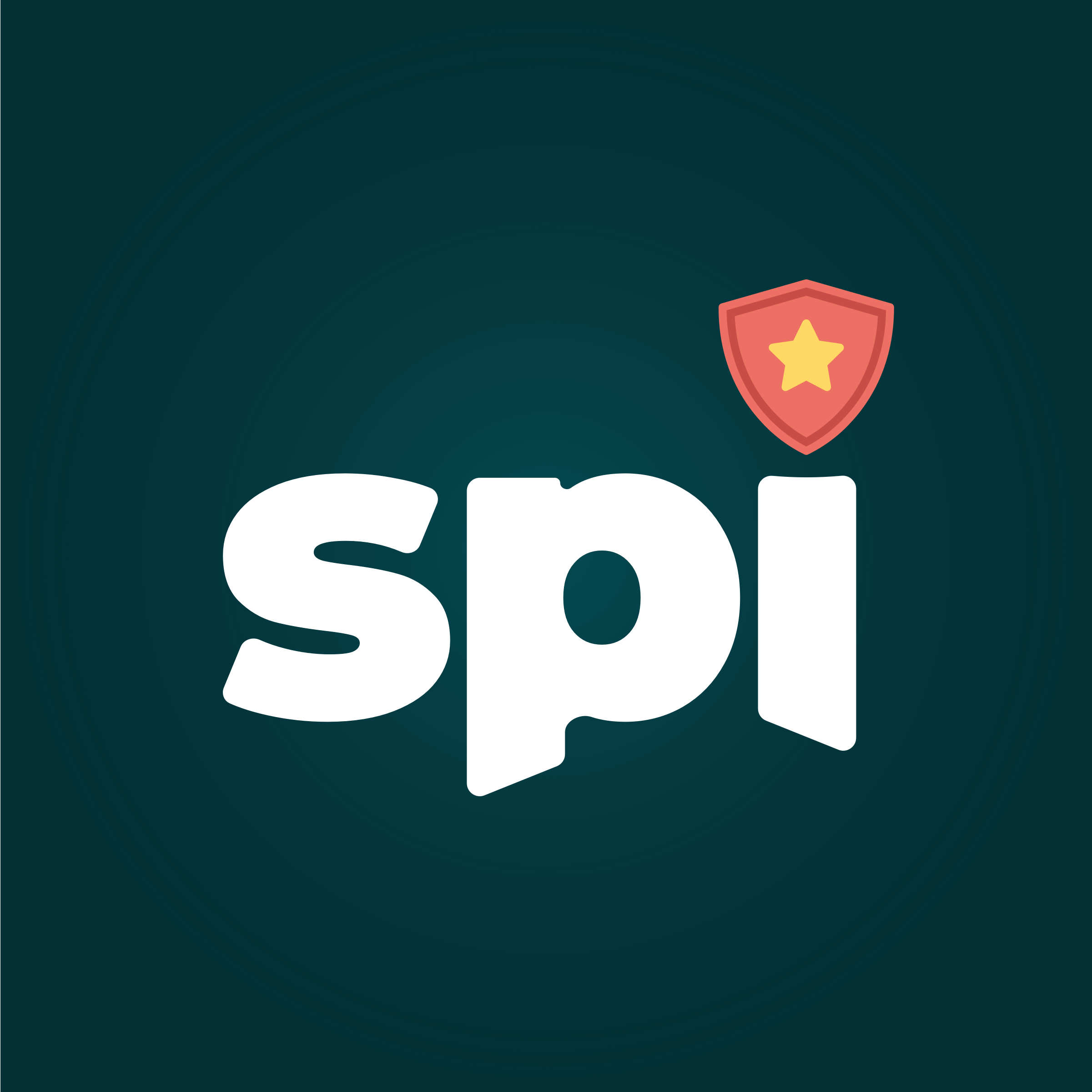
Accelerated growth is on the horizon. Apply now.
Applications are open.
Is your business still in the building phase? Join the All-Access Pass instead.
The post SPI Pro Community appeared first on Smart Passive Income.
]]>Level Up: Email Marketing Pathway Part of the All-Access Pass course library. Optimize your email marketing practices, accelerate your business. Learn about the Pathway Level up your email marketing game Is your email marketing strategy causing excess stress, taking a ton of time, and honestly, not performing as you had planned? Let’s change that. This […]
The post Level Up: Email Marketing Pathway appeared first on Smart Passive Income.
]]>Level Up: Email Marketing Pathway
Part of the All-Access Pass course library. Optimize your email marketing practices, accelerate your business.
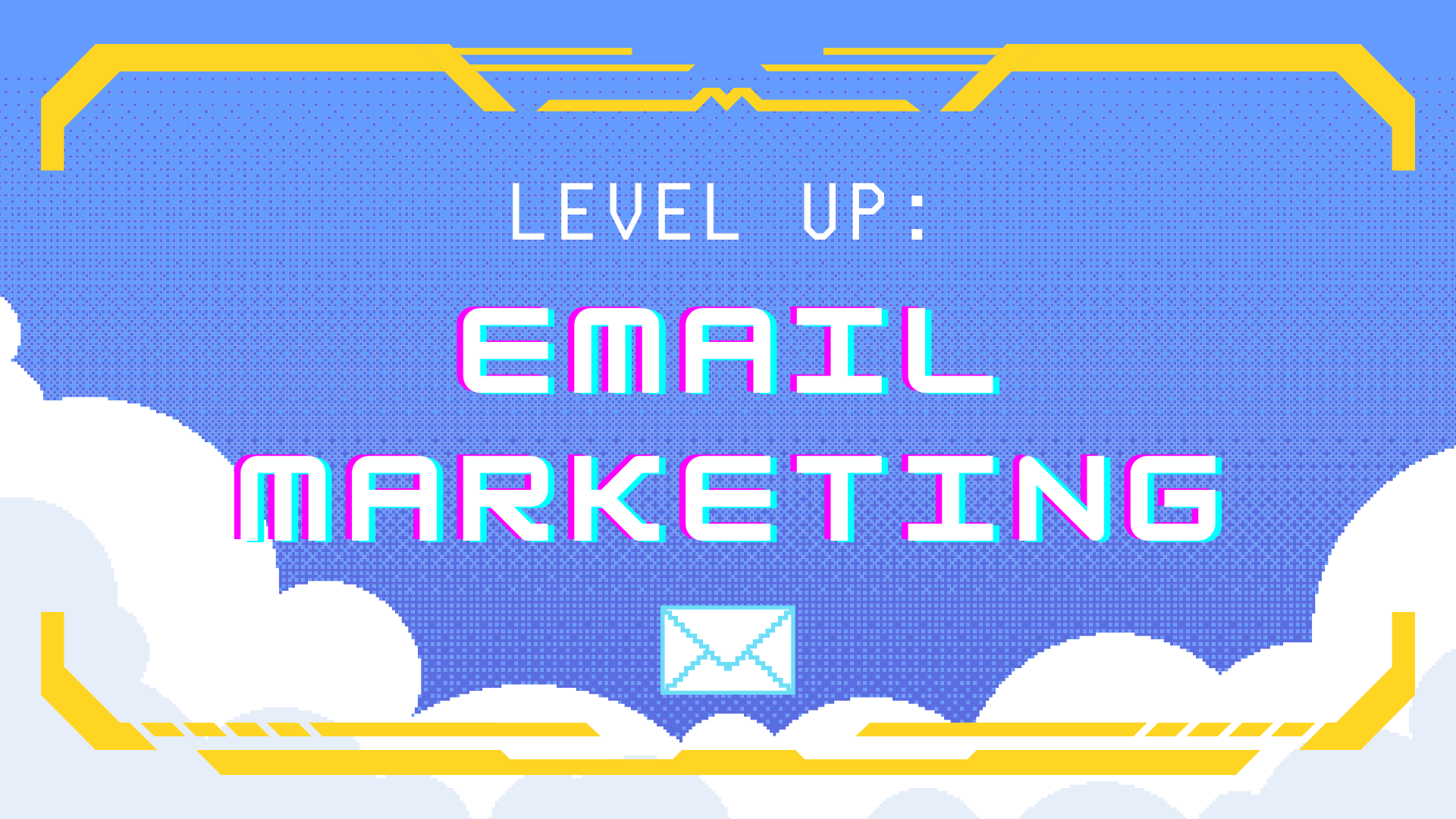
Level up your email marketing game
Is your email marketing strategy causing excess stress, taking a ton of time, and honestly, not performing as you had planned? Let’s change that.
This exclusive All-Access Pass pathway is a curated collection of lessons and workshop snippets that will help you optimize the performance of your email campaigns and focus on building and auditing your email funnels.
By the end of this pathway you will be able to:
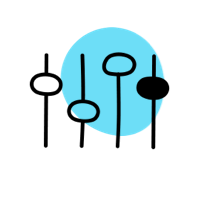
Optimize your email titles
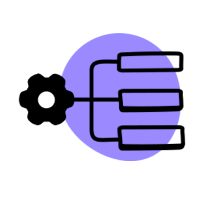
Build or audit your primary email funnel

Understand what an email funnel actually entails
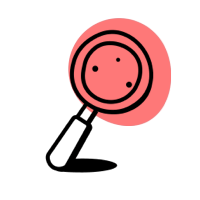
Identify how to increase your open rates, click-through rates, and deliverability
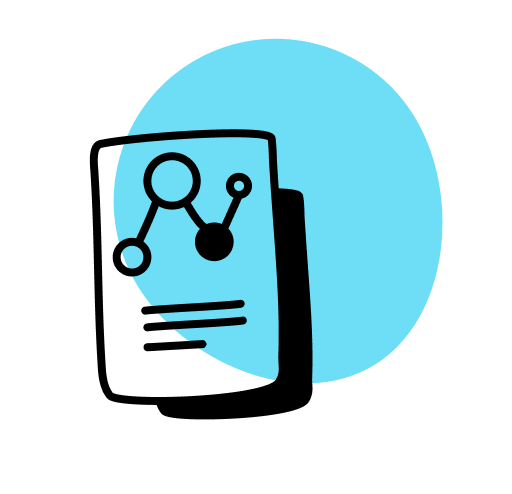
Design a roadmap to track progress toward monthly goals and bridge gaps
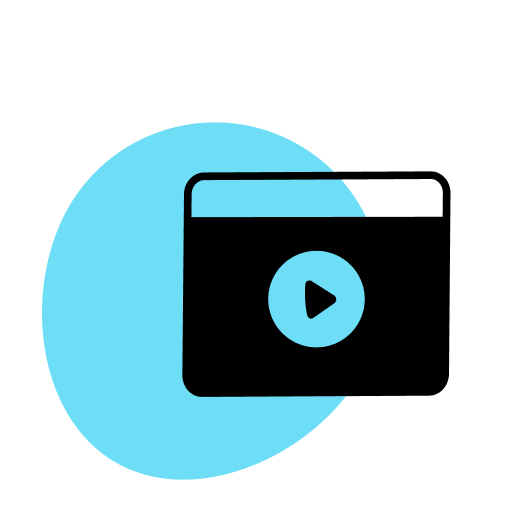
Make a plan to repurpose content you have already created
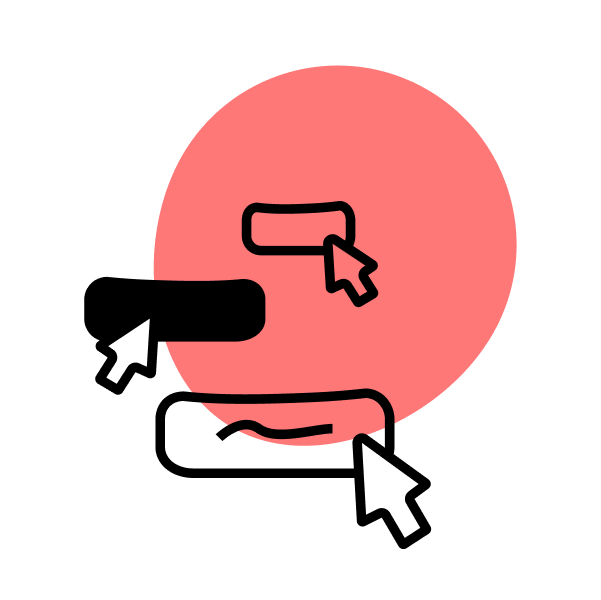
Score leads and build action plans that make sense to your business
Become a Member Today
Like you, we're online entrepreneurs who crave connection, direction, and support from people like us.
Must-haves before taking this pathway:
Learn to use ConvertKit
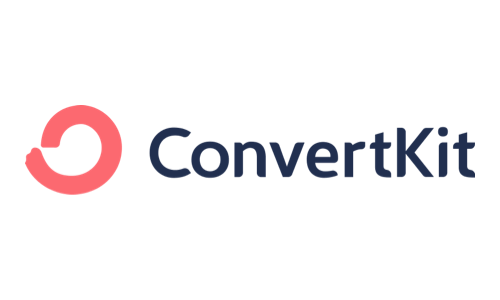
ConvertKit is our favorite email service provider—it strikes a balance between intuitive usability and powerful automation. All step-by-step videos in the course use ConvertKit. You don't have to use ConvertKit to succeed with this course, but we highly recommend it.
[Full disclosure: SPI founder Pat Flynn is a compensated advisor and SPI Media is an affiliate for ConvertKit.]
Take it from these members who are already feeling the pathway's impact firsthand
“I have learned a ton over the last few years, and Pat's new Email Marketing Pathway course is a great example. He packages things so well in courses and outlines everything in an easy-to-follow manner. Progressing after completion is a matter of putting the lessons into action. You will surely grow from a small email list and be amazed by how simple it was to do with this guidance. Pat Flynn and the team at SPI are a great bunch of people who care about your success. You won’t regret joining the community! Come join us!!!
#TeamFlynnForTheWin”
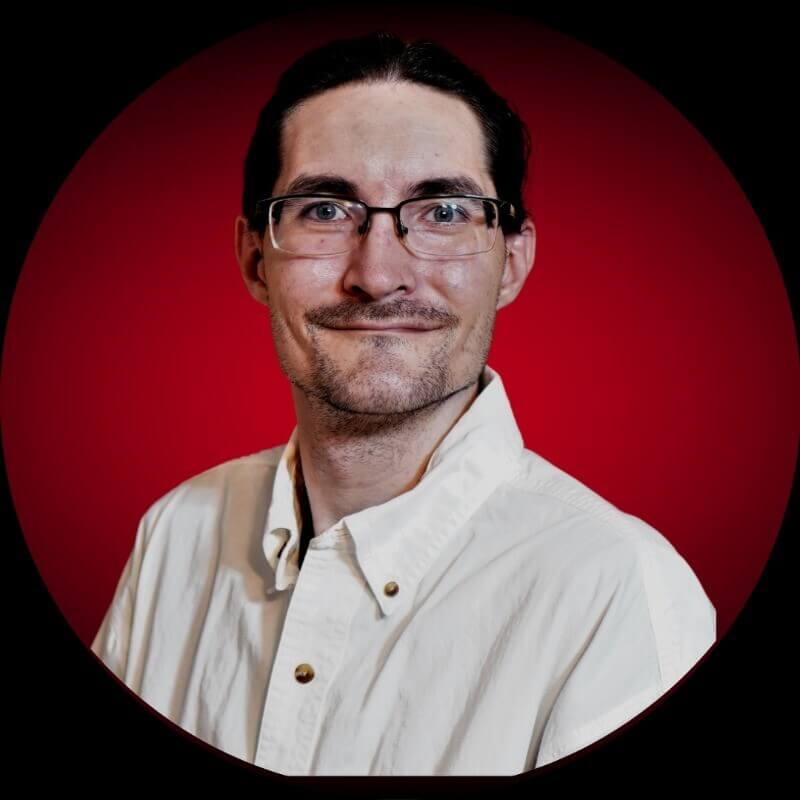
Andrew Borst
Raven Pontiac Media LLC
“Level Up: Email Marketing was really helpful in giving me a high-level overview of marketing funnels and how to manage a journey for potential clients. This will be useful in my full-time job and for any future entrepreneurial endeavors. It also gave me a respect for those who would be on any email lists I oversee to make sure they are the right people to be on the list and not to take advantage of it by spamming them or anyone who shouldn't be on the list.”
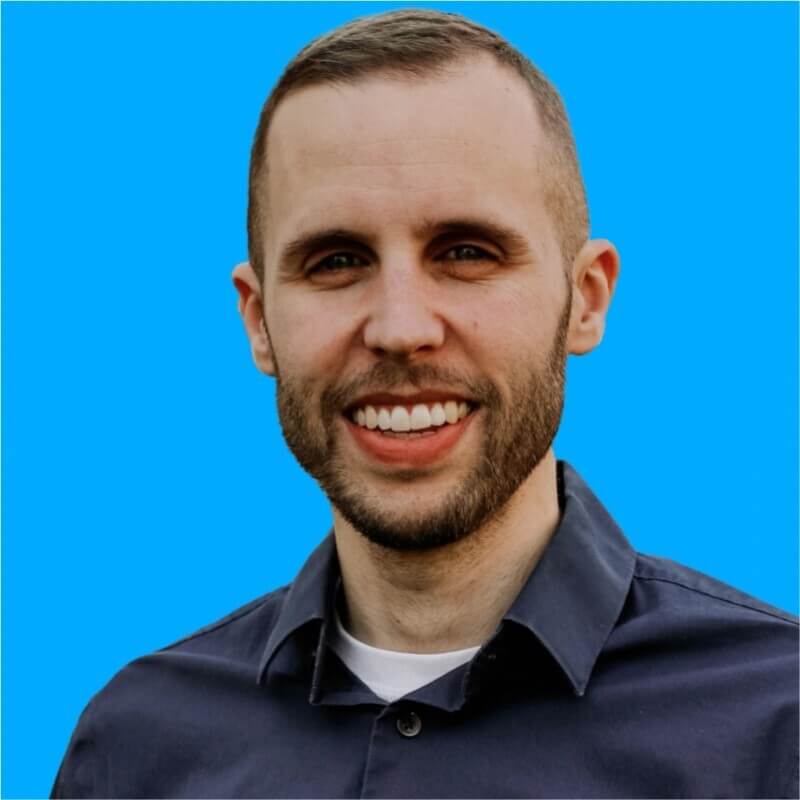
Greg Lees
Level Up: Email Marketing Pathway Outline
Introduction
- Welcome to Level Up: Email Marketing!
Level 1: Optimizing Your Emails
- 1.1: Increasing Open Rates
- 1.2: Subject Line Considerations
- 1.3: Increasing Click-Tthrough Rates
- 1.4: Increasing Deliverability
- 1.5: Purge & Clean Your List
Level 2: Email Funnel Basics
- 2.1: What is a Funnel?
- 2.2: 6 Parts of an Email Funnel
Level 3: Fixing Your Funnel(s)
- 3.1: Funnel Vocabulary
- 3.2: MOFU is the Magic
- 3.3: Create Once, Use Again
- 3.4: Expressed Interest? Follow Up
- 3.5: Lead Scoring
- 3.6: Weekly Snapshots
- 3.7: Don't Just Automate
What Now?
- Recommended Further Learning
- Feedback & Digital Credential Application
We believe in community-driven courses
Save 16% with Annual billing

The post Level Up: Email Marketing Pathway appeared first on Smart Passive Income.
]]>An elevated online education experience for entrepreneurs Master vital skill sets to accelerate your business in less time with trailblazing resources and a motivating community. 10k+ Posts & Comments 1.2k+ Active Members 18 Premium Courses 100+ Private Events About the All-Access Pass We begin with the best of intentions… …to learn a new skill, to […]
The post All-Access Pass appeared first on Smart Passive Income.
]]>An elevated online education experience for entrepreneurs
Master vital skill sets to accelerate your business in less time with trailblazing resources and a motivating community.
10k+
Posts & Comments
1.2k+
Active Members
18
Premium Courses
100+
Private Events

We begin with the best of intentions…
…to learn a new skill, to accomplish a goal.
We’re inspired, excited, and ready to learn from content that we know can change our lives. But then life gets busy. One night off turns into two, and then three. Soon it’s been a month and you know you should start over… but life gets in the way and you move on. The course goes unfinished. “Maybe next time,” you tell yourself.
Sound familiar?
That’s where community-led courses come in: a ground-breaking approach to online learning that combines the power of community with innovative online course curricula. Combined, you get the educational pathways to develop your skills as an entrepreneur and grow your business within a supportive community that keeps you accountable.
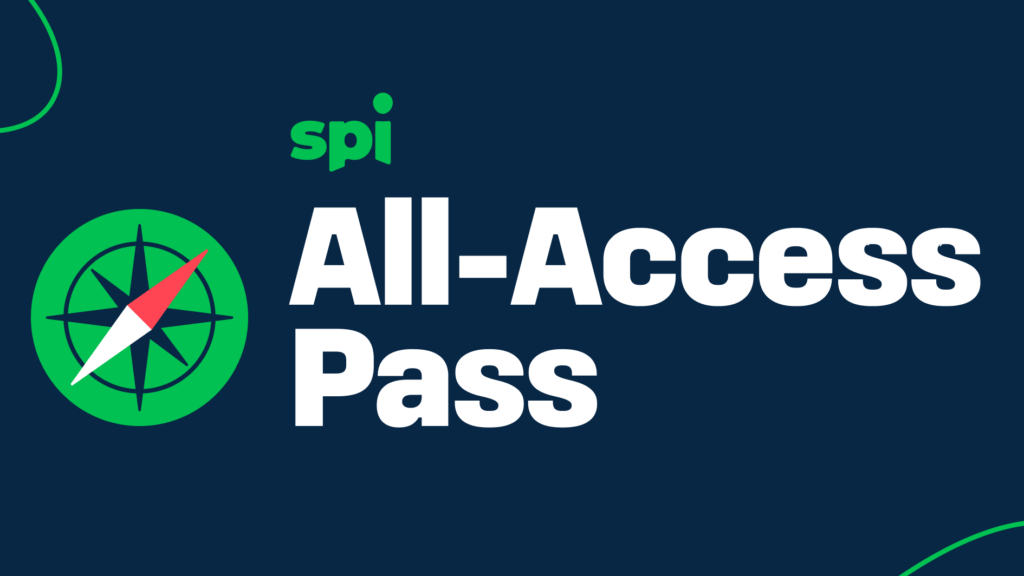
According to our members, our community is their happy place
“The biggest surprise for me is the accountability. I never liked school and yet I feel inclined to finish assignments! This is a big deal for me as I always struggled with following through. This community has changed my entire mindset. I am more focused, determined, and organized than I have been my entire life. Those benefits have spilled over into my personal life as well. This is a total win/win for me.”

Monique B. Thomas
MoniqueBThomas.com
“I’ve had the SPI All-Access Pass for a couple of months. I had a head start with 100k YouTube subscribers but never created a course, marketed it via email, or knew anything about webinars. SPI helped me set up the offer, and structure the program with pricing. The results? I grossed $165k in sales for my first cohort! If I can do it so can you.”

Steve Huynh
ALifeEngineered.com
“The SPI All-Access Pass has provided me with a fresh perspective on small business and entrepreneurship, opening my eyes to a whole new approach. It's not just a membership; it has revolutionized my mindset, approach, and strategic thinking. With exclusive courses, live events, and a supportive community of like-minded entrepreneurs, it goes beyond a typical membership.”
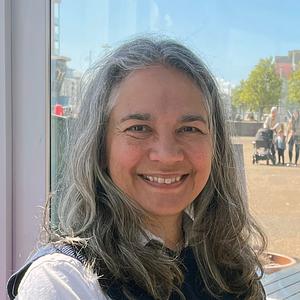
Tina Cheesley
Flow-Online.co.uk
“I have struggled for years with being overwhelmed about where to start my online business. The SPI Academy [now the All-Access Pass] provides an A to Z roadmap using Pat’s courses. What makes the experience priceless is the great community, accelerators, and the opportunity to frequently get help from PROs who are a little further down the road. For the first time I feel like building my business isn’t just a possibility, but I am excited each day to wake up and make it a certainty.”
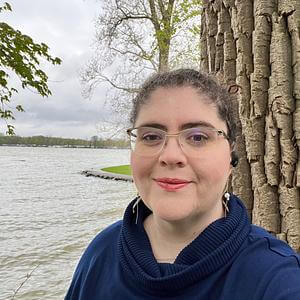
Rachel E. Stout
RachaelEStout.com
“There are so many great things about the All-Access Pass! Access to pick at courses as needed, accelerators to boost progress with added accountability, and the community for sharing, support, and celebration!”
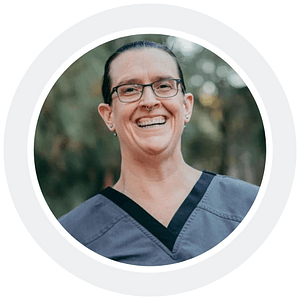
Wendy Wiseman
TamingYourTension.com
All-Access Pass gives you the resources, skills, and motivation you need to grow your business
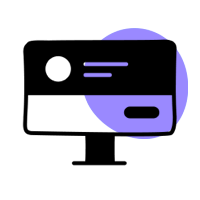
Access the playbook
Gain access to SPI's highly-praised course catalog, along with new curriculum and workshops build by education and business experts. Custom topic pathways focus on exactly what you need to learn for faster results.
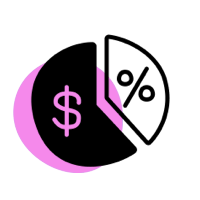
Master entrepreneurial skills
With online community-based learning, you will learn faster with access to experts, mentors, and peers to provide support. Our courses and workshops are specifically designed to elevate your professional skills in less time.
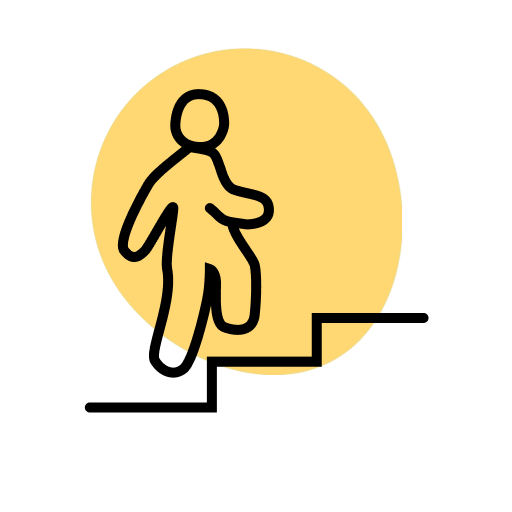
Achieve your business goals
Our learning community of like-minded enterpreneurs holds you accountable, keeps you engaged, and motivates you to persevere. Solutions are brought to life as members take on similar challenges and celebrate achievements.
People are 65 percent likely to meet a goal after committing to another person.
Their chances of success increase to 95 percent when they build in ongoing meetings with their partners to check in on their progress.
The American Society of Training and Development
Upskill, grow, and accelerate your business — all in one place
SPI gives you the keys to advance your custom path to entrepreneurial success through highly-rated courses and workshops, from podcast and course creation to email marketing and product pricing strategies (and more).
These specific pathways and innovative educational curricula will elevate your success; simultaneously, the community will keep you engaged and on track while you apply your new skill sets to your business.

Accelerators
Work through a specific course with a cohort of members over a 5–8 week time frame.
Make Steady Progress
Follow a syllabus that maps out the exact lessons and activities each week.
Both Live and Asynchronous
Each week has both live and asynchronous elements to make sure your questions get answered. Not able to make the week's live call? Just watch the replay.
Work with Others
Use the dedicated Accelerator space to work alongside your cohort, asking questions, receiving feedback, and supporting your fellow students.
Chosen by the Community
New accelerators are voted on by the community. Join us to help choose a topic.
2024 Accelerator Schedule
January 22 Amp'd Up Podcasting | 7 weeks
February 12 Community Business Blueprint | 8 weeks
March 21 Heroic Online Courses | 7 weeks
April 18 Level Up: Email Marketing Pathway | 5 weeks
Future accelerators to be announced

Live Events
Workshops, office hours, and expert Q&As to refine your skills and answer your questions.
Monthly Workshops
We offer an in-depth workshop each month designed to teach you a new skill.
Recent workshop topics include creating strong website calls to action, graphic design with Canva, and improving marketing funnels.
Pat Flynn's Weekly Office Hours
Each week, Pat Flynn takes your business questions in his office hours.
Community Expert Sessions
Several times each month, members of the SPI Pro community share their skills with one-hour sessions. Formats include expert Q&A, skill-building workshops, and tutorials on useful tools.
Past Event Library
An organized library of past event recordings, so that you can easily catch up on any presentations you missed.
See the complete listing of events

Pathways
A detailed map to help you work through a specific topic faster.
Focus on a Specific Skill
Learn more in less time. Pathways blend individual lessons from multiple courses and workshops to focus on a specific area of growth.
Focus on a Specific Skill
Learn more in less time. Pathways blend individual lessons from multiple courses and workshops to focus on a specific area of growth.
Level Up: Email Marketing Pathway
Learn how to improve your existing email marketing practice. Employs lessons from Email Marketing Magic, Click and Convert, and portions of presentations by Pro member experts Jeff Gargas, Katy Widrick.
Your people are waiting to meet you!
Save 16% with Annual billing

Our members have rave reviews

“I’ve had the SPI All-Access Pass for a couple of months. I had a head start with 100k YouTube subscribers but never created a course, marketed it via email, or knew anything about webinars. SPI helped me set up the offer, and structure the program with pricing. The results? I grossed $165k in sales for my first cohort! If I can do it so can you.”

Steve Huynh
ALifeEngineered.com

Watson Saintsulne
The Wholesale Truth Podcast

“There are so many great things about the All-Access Pass! Access to pick at courses as needed, accelerators to boost progress with added accountability, and the community for sharing, support, and celebration!”

Wendy Wiseman
TamingYourTension.com

“The biggest surprise for me is the accountability. I never liked school and yet I feel inclined to finish assignments! This is a big deal for me as I always struggled with following through. This community has changed my entire mindset. I am more focused, determined, and organized than I have been my entire life. Those benefits have spilled over into my personal life as well. This is a total win/win for me.”

Monique B Thomas
MoniqueBThomas.com

Everything I need to learn about how to create a profitable business is at my fingertips. It's like getting a business degree at a fraction of the cost.
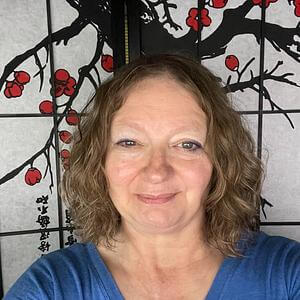
Karen Bemmes

“The accelerator course was extremely helpful in understanding the how's and why's as well as the encouragement to continue on the entrepreneurial journey. Everyone is helpful and encouraging and I highly recommend participating in an accelerator course!”
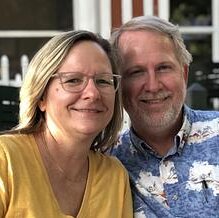
Wendell Murray

Cynthia Long
ASLTeachingResources.com

“I have struggled for years with being overwhelmed about where to start my online business. The SPI Academy [now the All-Access Pass] provides an A to Z roadmap using Pat’s courses. What makes the experience priceless is the great community, accelerators, and the opportunity to frequently get help from PROs who are a little further down the road. For the first time I feel like building my business isn’t just a possibility, but I am excited each day to wake up and make it a certainty.”

Rachael E. Stout
RachaelEStout.com

“The SPI All-Access Pass has provided me with a fresh perspective on small business and entrepreneurship, opening my eyes to a whole new approach. It's not just a membership; it has revolutionized my mindset, approach, and strategic thinking. With exclusive courses, live events, and a supportive community of like-minded entrepreneurs, it goes beyond a typical membership.”

Tina Cheesley
Flow-Online.co.uk
Frequently asked questions
Discounts and refunds
Will I get to own all the courses?
No. You will have access to the courses for as long as you are a paid subscriber. If you end your All-Access Pass membership, you will no longer have access to the courses.
If I already own some of the courses, do I get a discount?
There are no discounts if you already own one, or even all of our courses. You will continue to own those courses you have already purchased, regardless of whether you join All-Access or not.
I’m in SPI Pro, do I get a discount?
You don't need to pay anything extra! The All-Access Pass is now included in your SPI Pro membership.
I bought the All-Access Pass but I'm not using it. Can I get a refund?
The All-Access Pass is non-refundable and non-transferable. Likewise, we are unable to pause membership access. Please be sure you'd like to join before you purchase.
Courses included
Will new courses be added to the All-Access Pass?
New courses will be added exclusively to the All-Access Pass and will not be sold as individual courses. Workshops will be continuously added exclusively to the All-Access Pass each month, growing our workshop catalog to enhance our course curricula (and more).
Programming
Do I have to participate in the accelerators?
Nope! All our programming is optional, but we strongly encourage you to take advantage of it.
What programming exists within the All-Access Pass?
Within the All-Access Pass, you get access to our entire course catalog as well as exclusive curricula pathways built from existing lessons, workshops, and replays. You will also have the opportunity to participate in periodic accelerators — our unique blended approach to cohort learning led by members of Team SPI. You can also choose to attend weekly live expert-led programming and robust monthly live workshops on various topics alongside the replays.
Guidelines and policies
Do you have an age requirement?
All community members must be at least 18 years old to join.
Do you have Community Guidelines?
Absolutely we do, you can read the guidelines here.
If I get kicked out of All-Access Pass for breaking the Community Guidelines, will I still have access to the courses?
No, if you are removed for violating our Community Guidelines, you will be fully removed from our platform with no refund (this is our policy for all our communities and courses).
Cancellation policy
There are no discounts if you already own one, or even all of our courses. All-Access gives members exclusive curricula, pathways, and connection opportunities beyond what is found in an individual course (more on that above). You will continue to own previously purchased courses regardless of whether or not you join All-Access.
Ready to find join your people and level up?
Like you, we're online entrepreneurs who crave connection, direction, and support from people like us.
A personal note from Pat
After working with upcoming creators and entrepreneurs like you for over 15 years, one thing has become apparent — the need to go through this journey together. The road doesn't have to be lonely and my team and I, alongside members of the SPI community, are here to help you get to where you're going. I can't wait to hear your success story, and I can't wait until the day you come back to us and say, “Pat, it was the All-Access Pass that changed everything for me.” Here's to you and the road ahead, together.
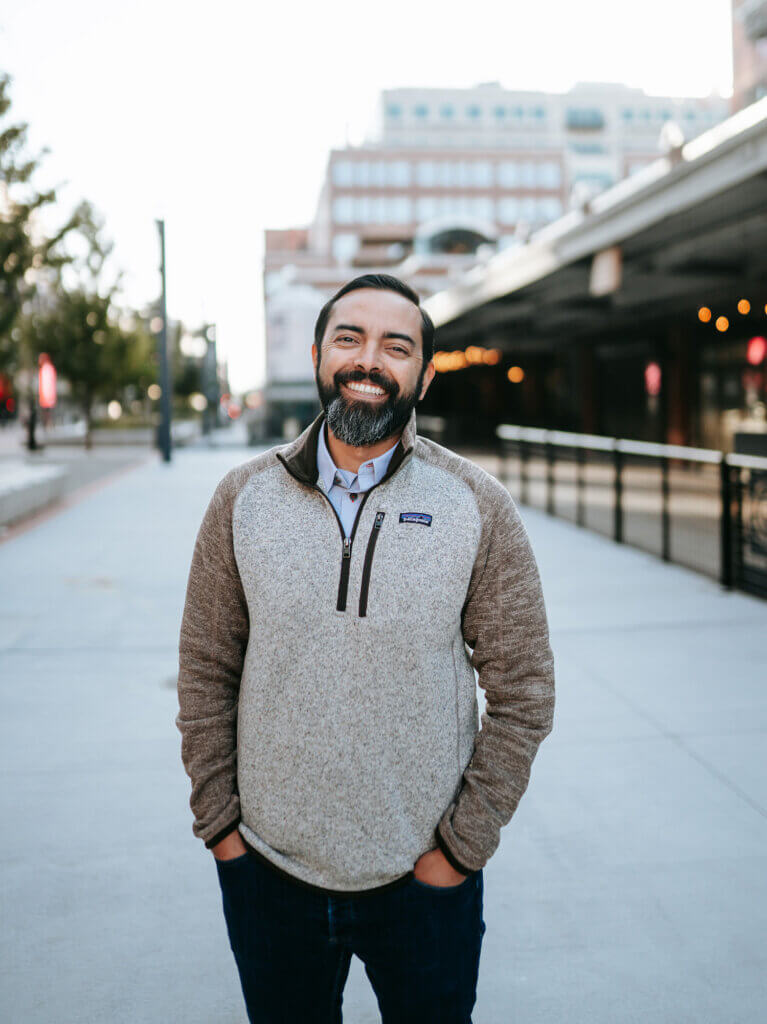
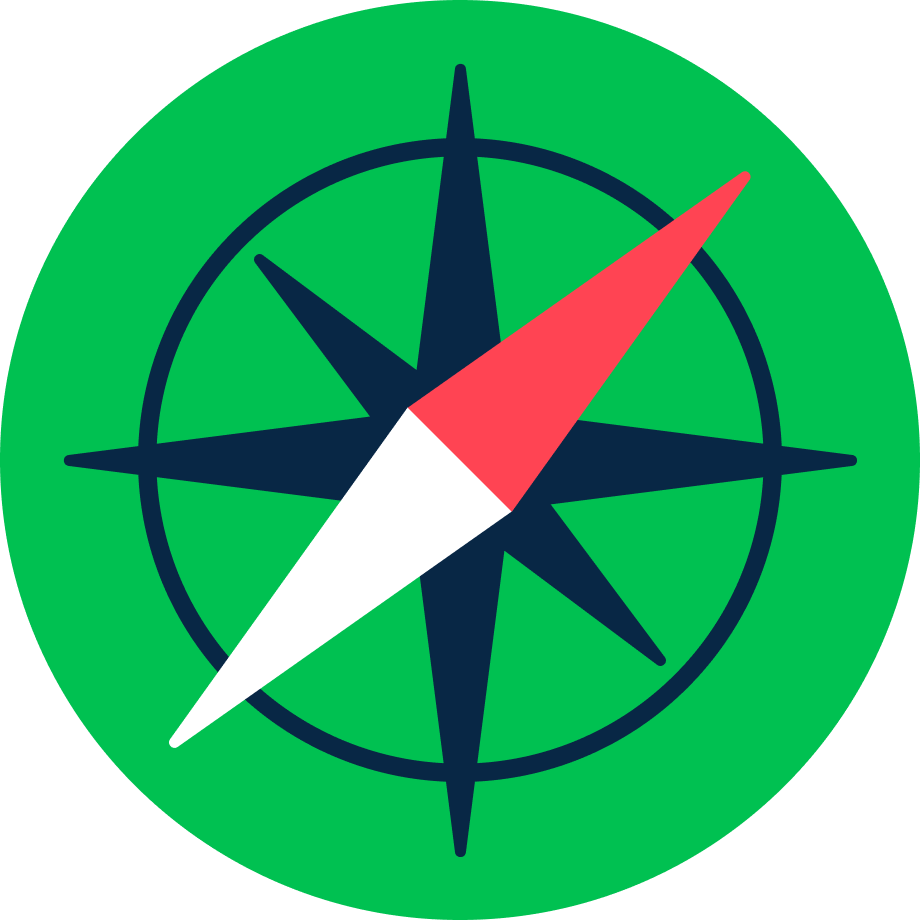
Vital skills, trailblazing resources, and a motivating community.
Your business growth starts now.
The post All-Access Pass appeared first on Smart Passive Income.
]]>Brian Luebben soared to the top of the corporate ladder only to realize he preferred a different view.
The post How to Quit Your Corporate Job and Travel Full-time appeared first on Smart Passive Income.
]]>Brian Luebben had soared to the top of the corporate ladder, landing a prestigious position in a Fortune 500 Sales Organization in his mid-twenties and earning a substantial salary.
But then, a startling truth hit him: he did not want this life.
He didn’t just want financial success, he wanted to quit his corporate job and travel the world full-time with the freedom to shape his life and career as his own boss.
With the success of his podcast, which evolved into his growing media company, Brian turned his vision into reality.
Today, he lives his dream, traveling the world, earning passive income, and pursuing projects close to his heart — like his Action Academy. Brian’s story epitomizes entrepreneurial success fused with personal fulfillment.
Brian recently sat down with Pat Flynn to share his story on The Smart Passive Income Podcast.
Determined to align his career with his ideal lifestyle, Brian transitioned from corporate life to full-time traveler by following this gameplan:
- Determining his ideal vision for the future
- Establishing a solid financial foundation
- Creating content and collecting client data
- Developing a product tailored to his audience’s needs
- Pivoting his business strategy in response to customer feedback
- Generating recurring revenue
- Seeking out growth opportunities for the future
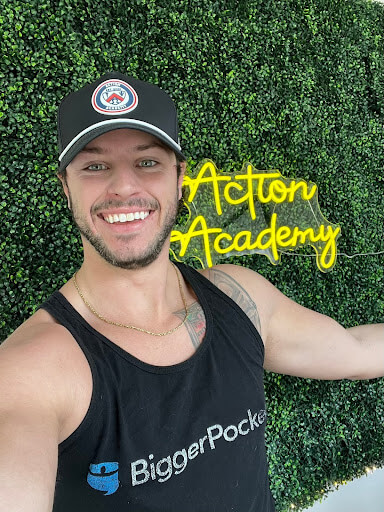
Planning Your Job Exit
Establish Your Ideal Vision for the Future
So how do you determine your next steps after quitting your job to travel? How do you even start to replace a corporate salary? With so many unknowns, there was one thing that Brian was certain of: instead of running away from something, he wanted to run toward something.
This meant crafting a three-year “vivid vision” for both his personal and professional aspirations. By committing his dreams to paper, he gained a clear roadmap.
Here's the picture he painted:
“I wake up in the morning and I can feel the hot cobblestones of this balcony on my feet and I look out and I can see the ocean. I don’t have calls all morning, but in the afternoon I’ve got meetings with my team. I can make money anywhere in the world with a Mac and a mic.”
A Financial Foundation for Full-Time Travel
Now that Brian had a clear destination in mind, he needed to map out the route to get there. His next step, which he calls “building a financial foundation,” involved investing in real estate.
Brian developed a portfolio of single-family rentals, generating enough passive income to cover his living expenses and begin replacing his corporate salary.
Although Brian was able to essentially live for free, he aimed for something greater. Taking a bold leap, he decided to sell his properties, allowing him to “swing for the fences” and focus on his true passions: his podcast and online business.
“What is the worst possible case scenario that happens if you quit your job and you go all in on yourself, right? “You run out of money. Now what happens? You go and get another job. So your worst-case scenario is your present-day reality, right?”
Turning Your Side-Hustle into a Thriving Online Business
Start to Create Content
Now that you’ve established your vision for the future, built a financial foundation, and are willing to take risks to pursue your passions, it’s time to start building your online business. But where do you start?
Brian explains that the first step is to simply start producing content in any format that showcases your skills and interests and see what resonates with your audience.
Brian accomplished this by hosting his podcast, The Action Academy, where he provides insights for people who share his desire — to build a business around their life, not the other way around.
Gather Client Data
To increase his revenue and better cater to his audience, Brian wanted to learn more about their needs. He offered 100 listeners a free 15-minute coaching session each. During these sessions, he asked them about the challenges and obstacles they were facing in achieving their business goals. This approach allowed him to collect a wealth of valuable customer data.
Why offer this free service? According to Brian, many entrepreneurs encounter a common pitfall: they create solutions for problems that don't truly exist. To avoid falling into this trap, Brian aimed to connect directly with his audience to determine exactly what the market demands.
Ready to become your own boss like Brian?
Dive into SPI’s vibrant entrepreneurial communities where you can uncover courses on podcasting, online course creation, and community building — all skills that Brian used to achieve his freedom. Get the guidance and support you need to thrive on your business journey!
Explore SPI's communities of creators and entrepreneurs today.
Join 20,000+ other creators.




200+ Reviews
Create a Product that Your Audience Really Needs
Now equipped with this useful client data, Brian decided to create a course tailored directly to the needs of his audience. He developed a comprehensive 12-week, 52-hour program and reached out to the original 100 clients from the free coaching sessions, offering the course to them at $1,500 each.
Within just 48 hours, Brian made $100,000.
Pivot the Business for Growth
The business you envision for yourself might end up looking different in reality. This is because continued business growth relies on the ability to identify opportunities for expansion and to make adjustments when necessary.
Brian experienced this when he created a Facebook Group for his course participants to connect. Members began forming partnerships and making deals within the group. Eventually, discussions arose about the value of the group surpassing that of the course itself.
Brian recognized this as an opportunity and reassessed his strategy, embarking on a new phase for his business: community-building.
“The key is to just start step after step after step and iterate, change as you take customer feedback, and ask your customer, what do you want?”
Generate Recurring Revenue to Fuel Full-Time Travel
So, what came next for Brian after making this realization? He adjusted his business model to focus on building and monetizing the community. The course transformed into a 30-day onboarding process, now offered for free within the community.
This shift led to community members finding greater success by connecting with peers at similar stages as them or those who had overcome similar challenges. These connections provided valuable guidance and support, helping members navigate their journeys more effectively.
This business pivot also opened the door to recurring revenue for Brian, the key to unlocking full-time travel. Unlike the one-time transactions of individual course sales, the community's annual memberships promised ongoing financial stability and engagement.
Today, the community boasts around 200 active members and is overseen by Brian and a team of five. In its first year, Brian's business is projected to reach $1.2 million in annual recurring revenue (ARR).
“The reason I made that pivot was the course material wasn’t the answer. People were the answer. People have always been the answer.”
Living Life as a Full-Time Digital Nomad
Looking Ahead
Brian's upcoming plans include preparing for membership growth by considering adjustments like expanding his team and distributing responsibilities among his employees to ensure sustainability.
He also plans to introduce a referral program within his community to encourage member engagement and stimulate organic growth.
Additionally, Brian aims to increase his business's visibility and attract new members by creating short-form content. With an Instagram following of over 200,000 users, he demonstrates a strong ability to engage and retain a significant audience.

A Vivid Vision Realized
Brian is now living his initial “vivid vision,” traveling the world as his own boss while continuing to expand his online business. He states that his aim was never to retire and simply relax on a beach somewhere. Instead, he advocates for building a business around something you love: quitting your job to travel full-time, not wander.
When your business is enjoyable to run, revenue and profit become natural byproducts. It’s what he calls “passionate income” as opposed to passive income.
Brian’s central message is clear: there’s no need to postpone happiness. Joy and fulfillment are available now, and anyone can realize and achieve it with the right guidance and resources.
The post How to Quit Your Corporate Job and Travel Full-time appeared first on Smart Passive Income.
]]>What comes to mind, or rather, what is the feeling in your body when you think about recording video? Many people have such a strong aversion to being on camera that they let it hurt the growth of their brand. Still, we all know we need to get comfortable with this to make the most […]
The post SPI 771: How to Consistently Create Videos to Grow Your Business with Caleb Wojcik appeared first on Smart Passive Income.
]]>What comes to mind, or rather, what is the feeling in your body when you think about recording video?
Many people have such a strong aversion to being on camera that they let it hurt the growth of their brand. Still, we all know we need to get comfortable with this to make the most of today's social media landscape!
But where do you start as a complete beginner? How do you create consistently? How often do you need to upload to YouTube to build an audience? For your online courses, what is the best way to plan and leverage videos?
We cover all this and more in today's episode with my friend, collaborator, and frequent guest, Caleb Wojcik. As we expand the Expert in Residence program inside SPI Pro, we're enlisting Caleb as our go-to resource for all things video. If you haven't applied yet, this session is a taste of the kind of knowledge you can access in the community!
Don't miss out because we discuss everything from a quantity-over-quality mindset to batch recording and easy editing. Listen in and enjoy!
Today's Guest
Caleb Wojcik
Caleb has been making videos for himself and his clients since 2010. He’s the son of a photographer and a recovering camera gear addict. Since 2014, he’s run his own video production company full-time, making client videos for YouTube, online courses, live events, documentaries, etc.
Caleb spends hours researching new gear, techniques, and ways to streamline the video creation processes. He doesn’t just know a bit about your camera, he can probably tell you which tab in the menus you can find that setting you’re looking for.
Passing on what he’s learned is something Caleb really enjoys. Not everyone can afford to hire a professional like him to show up and film great videos for them, so he started teaching others how to do it on their own.
- Find out more at MakeBetterVideos.com
- Follow Caleb on Twitter, Instagram, and YouTube
You'll Learn
- How to start creating videos consistently
- Why being on camera is vital in the age of AI
- Focusing on quantity over quality as a beginner
- What you should create videos about first
- Figuring out how often you should post content
- Batch recording and easy editing tips
- Why video is essential for online courses
- How to record an entire course fast
Resources
- Find out more about the SwitchPod
- Listen in on my previous chat with Caleb in episode 585
- Subscribe to Unstuck — my weekly newsletter on what's working in business right now, delivered free, straight to your inbox
- Connect with Pat on Twitter and Instagram
SPI 771: How to Consistently Create Videos to Grow Your Business with Caleb Wojcik
Caleb Wojcik: Why am I making these videos? Am I making them for fun? Am I making them to get AdSense money on YouTube? You know, the AdSense money on YouTube that needs views. If you're making them so you can get more course sales or clients or something, you might not need as many views as you think.
You just need to make the right videos that will attract the people that then will buy your courses or hire you to do something. You don't need a million or even a hundred thousand subscribers to have a YouTube channel making a significant impact on your business. You can do it in the thousands.
Pat Flynn: What comes to mind, or rather, how does your body and your mind react, when I say the following phrase: recording video. If you, when you hear that, cringe a little bit around the thought of you creating video, or perhaps worry because it's something that you know you need to do but just haven't started yet, or it might give you some nightmares because you've tried it before and you have failed. You've started it and then you've stopped. The only thing consistent is that you've stopped doing it. You continually stopped doing it after starting. Well, if that's the case, then this episode is for you.
We're bringing on Caleb Wojcik. Great friend of mine, co founder of SwitchPod, friend of SPI, previous guest here on the podcast. He's talked about what it was like to have young kids as an entrepreneur. And we have talked about video before, but we're going to go in depth today to talk about specifically consistency because it's one thing to just start doing video, but if you stop, then it kind of is for nothing.
But if you continually create it over time and if we can help you answer the question of, well, how often should we go? Like, how do we stay consistent over time? How do we do it for YouTube, but also how might we do it for online courses? If we're going to be doing that, what's the approach? How does it differ?
We're going to talk about and uncover all those things today. Plus we're going to welcome Caleb as an official EIR expert in residence here at SPI, somebody who you can get access to inside of SPI pro to help you with your video needs. This will be a fun episode. Check them out. This is session 771 of the SPI podcast, Caleb Wojcik.
Announcer: You're listening to the Smart Passive Income Podcast, a proud member of the Entrepreneur Podcast Network, a show that's all about working hard now, so you can sit back and reap the benefits later. And now your host, he once hated oysters. But now? Orders them whenever he sees them. Pat Flynn.
Pat Flynn: Caleb, welcome back to the SPI podcast.
Thanks for being here, man.
Caleb Wojcik: Yeah, thanks for having me. It's been a while. We've been on a few times together. Yeah.
Pat Flynn: It has been a while. The last time you were on the show, we were talking about how you had just had twins and you and your wife were, you know, wrangling cats, if you will, while being an entrepreneur.
Any quick update on life and family and how are things going now?
Caleb Wojcik: It's easier in some ways and harder than others. That's all I'll say. You know, like, We're we're close to all three of the kids being in preschool.
Pat Flynn: Kids in preschool. So a little bit of time gotten back, but I remember what that was like. I mean, two and a half hours to three hours in preschool that goes by so fast.
I mean, you almost don't, don't have time to start anything, right?
Caleb Wojcik: Yeah, I know. But it really makes you focus. I feel like pre kids, you have all day, all weekend, all night. You know, it's like time is like unlimited when you don't have that, you tend to focus a little bit better. So I feel like that's efficiency and like, you know what to work on.
It's like you have limited time. It kind of forces you into doing what's most important each day.
Pat Flynn: That's so true. And you and I had started building relationship, you know, over a decade ago when Keoni was born. And I know that you were kind of watching me from the sidelines, raise a kid and try to be an entrepreneur.
And it's true. It did make me become more efficient. We're not saying that if you want to be more efficient, you know, go have kids. That's not, no, that's kind of opposite, but we will be talking about efficiency and consistency with your video today. And Caleb, first of all, I just want to welcome you officially into SPI as one of our newest EIRs or Experts in Residence with a video background, with the opportunity for people inside of pro to get some help from you.
Welcome in, man. What are you excited about most becoming a part of SPI now more officially?
Caleb Wojcik: Yeah, I think just having the face to face interaction with people on calls because we did, we did YouTube From Scratch kind of cohort or whatever. So I got a little taste of the community and like did some weekly calls with people and just seeing people take advice one week and put it into action and come back the next week with more questions is like, I love that.
I love just seeing the people that are in there.
Pat Flynn: That's what Pro's all about, you know, the community, the connection, and now an opportunity to connect with you, a video expert, as we are now in a world that is so video centric is, is key. So we're just really happy to have you and welcome in. But today I wanted to talk for those who are excited about video and maybe even not excited about video because again, we have to be putting video into our content in some way, shape or form.
And there's a lot of different kinds of videos we can talk about. But before we get into YouTube versus creating course video content versus, you know, social, just talk about the mindset of video. We're not going to talk about equipment today. We're not going to talk about the business plan per se around video.
We will be talking about creating and the production a little bit, but the mindset going into video is really, really important. And what would you say today is most important when it comes to creating videos and for those especially who are a little bit apprehensive, maybe not have done it before or have started and stopped, like how can we wrap our heads around just doing it?
Caleb Wojcik: Well, I think a lot of people I talked to, I'm like, Oh, like, what are you doing with video? They're just like, yeah, I should do that. And it's like, we all know we should do that, but a lot of people don't. And I think it's the fear based thing, or they don't want to put themselves out there. And I mean, I'm similar, like I would prefer to be completely unknown, honestly.
Like if I was anonymous and people didn't know who I was, like, I would prefer that, but in this day and age of running a business, running a, whether you do like freelance stuff and you need clients or you have digital products you're selling, or you're trying to grow an existing business, having some sort of personality, some sort of face to that brand really helps people connect with it.
Otherwise you're competing with the faceless brands, Nike and Apple and these that have these huge budgets and they can hire people to be in their commercials and things like that. You want to have some sort of one on one connection with people and podcasts are a way to do that. You know you've talked about this a lot where you get them for a half hour an hour at a time. They really get to know you. When I think of people that have big brands or I want to check out what they're doing online, it's because I feel like I know them even though I don't actually know them because I've watched them on video so much.
So it is a one on one connection like this almost when someone's watching your video. So that's why I think it's so powerful.
Pat Flynn: And it's now seemingly more important than ever because of things like AI that are creating video and just automating everything content is so plentiful now and even podcast people can use ElevenLabs to replicate somebody's voice and you don't even know it's real anymore and true video is getting to that point with OpenAI's Sora that just came out, right?
We're seeing these videos that look like they were professionally shot. But the face to camera videos, even though there will be a point where that is AI as well, it's important to get on video so you make that real connection because that's going to be more and more necessary and needed in order to build trust and authenticity online.
So there's a lot of reasons to get into video and you're doing yourself a disservice, you're doing your audience a disservice by not showing up. So that's why we're here and why we're talking about this today. And of course you and I have created YouTube From Scratch, which has helped loads of people start their channels.
Some of them have now gone full time with them, which is amazing to see. And we w we just want more of that. So let's go into being consistent with video for somebody just starting out. It can be. a lot of friction to get started and even hit record on that first video. And, you know, while recording, it's just a pain and then, you know, the editing process of it and then kind of having to do that again and again and again, it's so overwhelming.
What are the things we can do while we get into video to reduce that friction as we start to want to be consistent with this?
Caleb Wojcik: I mean, the biggest thing is that the tools that are available now are much easier. They're easier than they've ever been. Like, you can film high quality video on your phone now when we started doing that 10, 12, 15 years ago like you had to go buy a camera a Best Buy and you had to like figure out how to focus it on yourself and you had to do it. Like the tools are just more available now. So you just need to decide what you're going to film on. Draw the line in the sand and be like I don't need anything else to do this right now.
I need My phone and I need a SwitchPod. That's all I need. Yes. Yes. Push people to our products. Shameless plug right there. Yeah.
Pat Flynn: You can't film videos without a Switch Pod. This is our product, by the way, in case you didn't know.
Caleb Wojcik: I've run a video production company for 10 years now. And there's always that like additional piece of equipment that you're like, Oh, if I just had that, I could do whatever, you know?
Like if I just had that one more piece and it's like, that never goes away. It doesn't matter. Like you're always going to want something. It's, you know, the hedonic treadmill. There's always going to be another piece of something that you want to buy. Yeah. So don't let that keep you from just hitting record.
So just commit to whatever you have now is good enough for the next one to three months. That's the equipment I'm going to use. I just need to film. And quantity will help increase your quality. So there are plenty of videos that I filmed in the beginning that I will never let anyone see. They are not on the internet anymore.
I either deleted them and didn't upload them or they're now hidden. Because I'm so embarrassed of what I look like and sound like and how I act on camera like completely unnatural. So I know some people leave those up and you can scroll way back in the archives and that's encouraging to see you like Massive youtubers now and the first videos they put out sometimes when they were children, but mine are hidden. So don't be afraid of the like your first few videos.
You can always hide them later as you get better.
Pat Flynn: Yeah, I want to expand on this idea of quantity over quality. Usually we hear the opposite, right? Just get something of value out there. And yes, of course we want our videos to be good enough and actually, you know, help people or entertain or, you know, provide information, but it is so important in the beginning to get your reps in.
So that you understand how this process works. So you can get more confident on the camera. So you can learn your editing skills so you can learn what to hand off to other people. And you can have, I mean, I think it was MKBHD who was on this show, who said that his first 100 videos were for less than a hundred subscribers.
And that was so powerful to hear from somebody who now has nearly 20 million subscribers and is the most prolific YouTuber or one of the most prolific YouTubers in the world. And, you know, I've kept my old videos up and they're trash, but you know, you gotta get, I think it was JLD who, who said you got to be a disaster before you become the master.
And I think that that holds so much truth in the world of video. So create, publish. So when it's our first go around, like what, what is good enough? What, what does that even mean? And how do we even begin to figure out what to create videos about? Let's, let's focus on YouTube for now. And then we'll focus more in the second half of this talk about creating content for things like courses.
But if we're getting onto YouTube, which you should, because there's a lot of opportunity there, especially as SEO is changing on the Google front. YouTube is becoming a place for people to get found. What would we do? How do we even begin? A lot of this is obviously in Smart From Scratch, but let's bring some of that back for people listening right now.
Caleb Wojcik: I think it's honestly stop worrying about the technical parts of video and worry about like talking to one person find one person you can help with something and focus on what that thing is you're going to help them with and then don't put a ton of pressure on an individual video think of 10 ideas and then just film them and release them. I think getting all caught up I'm like oh what's the perfect title and thumbnail for this video it's like when you're starting out or even when you're not starting out, quantity is going to get you the views.
You can have more views if you put out more videos. That's how you get more views. That's how you reach more people. You have more little army men out there fighting your fight for you is having a bunch of them out there a bunch of foot soldiers each video is a little foot soldier like is a part of the battle for you don't worry a little like stay back and try to build a tank for like six months and release it have a bunch of things out there trying to help people and you'll see what works like you'll get the feedback from okay they like these types of videos or they liked it when I had this kind of title or thumbnail and and that's how you learn you don't really learn from seeing what everyone is doing.
You have to do stuff for yourself and see what your audience resonates with.
Pat Flynn: The power of YouTube is, in my opinion, the feedback that you get from the videos that you create and you can't have any feedback and any sort of results, good or bad to learn from if you're not publishing videos. So one thing that I think may be helpful for people listening and watching is What could I even create a video about?
My favorite advice is to create videos about stuff you're already doing. It's stuff that you know, it's stuff that you're involved with already. And you had mentioned like, okay, like help somebody. What if you film the video of you helping somebody already, right? Whether it's a coaching caller or a person, you know, and they have a problem and you just help them through that.
And you use the video to tell that story and it might not be perfect and you might not know how to edit it just right. But at least the end result is you're helping this person. And the idea of being people can find this and go, Hey, that person's just like me. This person knows what they're talking about.
They got some help and I'm going to follow and subscribe. And I think that's key. So you might be working on a project. We'll talk about some of the problems that you've had in this project. And you can bring those things to, to light for people and answer those questions, and you might not even have an answer.
You're just going through the process with people. And people like that. People like to see the behind the scenes and the sort of, as you go kind of content. So you might already have a 10, 20, 50 pieces of content in you already from just the stuff you're already doing. I think a lot of people think we have to come up with 50 new things and something separate than what we're doing.
So just a little bit of a, of a piece of advice for you in case you're like, well, I don't even know what to create videos about. What are you doing? Showcase that in video format. Now, when we say quality. Quantity. I see. It's even weird for me to say quality over quantity. It's been so ingrained in me, but on YouTube, it's so important.
Does this mean a daily video? Like, should we be creating seven videos per week? And that, I mean, that's, that's wild. That's impossible for a lot of people. What, what is quantity for a starter.
Caleb Wojcik: I mean, I would pick out what you can comfortably handle with your current workload and just have it be something you can commit to because the audience will get to recognize how often you put videos out and they'll come to expect them, especially if you're super consistent with it, where you're like every Tuesday morning, there's a video.
And, I mean, there's, there's certain YouTube channels that are like that, where they, you know, they stick to that exact schedule, partially probably to keep themselves accountable so they don't miss a week or what have you. So I don't think it has to be daily. I think social is a good place to put videos out more frequently, a few times a week, or five days a week, or whatever you want to do.
Those are maybe a little bit easier to make and you could just film them selfie mode on your phone easily add some captions and put a song under it and you're done and that can kind of be a place to test ideas you know something resonates really well in a social video make that a longer more produced youtube video. i don't think consistent necessarily means you have to do it hourly daily but i think at a minimum very minimum i would say monthly. But i would try to do like two to four times a month.
So try, try to get to weekly. That's kind of a good cadence for your audience to expect.
Pat Flynn: I like that. Base it off what is just possible for you and commit to it. Like you said, how do we set ourselves up for success when we are in our minds? Like, okay, we're going to commit to this. We're going to try for a video per week, maybe two.
I know that. When I started out, it was just such a drag to even get to the point where I could finally hit record. And I know there's some things we can do with our setup, for example, to make it easier for us and reduce that friction to just like get to hit that red button sooner. What are some of the things that we could do to set ourselves up in that way so that, you know, there's less friction going in?
Caleb Wojcik: Yeah, I think setting up either a permanent setup, if possible, where just the light's always set up, the camera's always on the tripod or SwitchPod and you try to just have a very permanent spot that you just like film all your videos in that does tend to help or maybe it's hiring somebody to show up, you know, maybe it's hiring like, Hey, one day a month, I have a video person coming. We're going to do it. Like we've done that together. Like when you had the office space more recently, we would just have like a day a month and we would batch film four videos and we'd have to, you know, we'd have a couple ideas of like, okay, we're definitely going to do these two.
And then we'd just be like, okay, well, we need, we need more to, to, to stay weekly. Let's come up with some ideas right now. Let's whiteboard it. Let's get out some sticky notes. And that's when we were most consistent on the channel was. When I was coming one day a month to film and batch film four at a time.
So I think batching is like a huge thing for consistent production, especially when you're not relying on other people. I know it's hard to batch podcast interviews, for example, cause they're scheduling and conflicts and they're so long and you know doing four or five hour long conversations in a day, you know, your energy might not be there by that last one.
But if you're filming some shorter videos, you know, batch it, film it all in one day.
Pat Flynn: Yeah, batching has been huge. If you are a podcaster, you know that to be true. For video, it's the same and maybe it might mean creating a day of the week specifically where you know that that day is just for videos and leading into that day you have a list of ideas or videos that you know you want to film I like the idea of having a person there with you like when you came over to the studio we got a lot done.
We shared ideas with each other there were things that you saw that I didn't see and vice versa and those videos were really great. That was back when video podcasts were literally only available on Apple as video podcast. And for a while we had the number one video podcast on Apple. The sort of asterisk with that is nobody was watching video podcasts.
So our little call to action to go watch them was, was enough. And now video podcasts have taken sort of a completely different route. And for those video podcasters in the audience, or at least audio podcasters who are thinking of video, it might just be as simple as turning on the camera while you're recording those interviews.
Even if it is remote, I know there's a lot of people who are creating these beautiful studios and they have like Colin and Samir and they bring these people in these guests and they're in a location like Los Angeles where a lot of these people exist. So it's a lot easier for them. But then there's examples like Ramit Sethi, who is doing remote interviews for his podcast, his audio podcast, but recording it on video, it is remote, but it's very well done.
It's the hook, it's the setup, it's also the little bit of editing that goes around that, from the frames to the words that pop up on the screen. So there's a lot of things we can do, and I think it's important to take inspiration from other video creators channels. Maybe not even in your own niche to see how you can stylize your videos in the way that you want.
But when it comes to the editing part of this, how do we make the editing part of this something that we can get consistent with and get better at? Obviously reps is important, but is there anything we can do to set ourselves up for success for consistent video editing if we are doing it on our own.
Caleb Wojcik: I think people get bogged down trying to do fancy things with video editing.
They try to do a ton of graphics or a ton of quick things or a little bit too much with audio or they're worried a little bit too much about how loud the video is. Just like stuff on the screen all the time. And I, you'll kind of attract the people that you want to attract with how you edit the videos.
So if you edit videos at a little bit slower pace and they're a little bit more straightforward, like you're going to attract people that maybe have a longer attention spans or maybe a little bit older. If you're going towards the younger crowd, you might need to edit things a little bit more aggressively or have text on screen all the time.
Pat Flynn: And thanks, Cocomelon.
Caleb Wojcik: I think there's like the Mr. Beastification of videos is like going over into all different niches of the text on the screen and like fast cuts and like that sort of thing.
Pat Flynn: And explosions. Boom.
Caleb Wojcik: Yeah. Yeah. And it's like you don't necessarily have to be that way. It can just be like a straightforward thing of you talking with straight cuts and to make it visually interesting you just you film some B roll on your own or you switch the camera angle occasionally. You do other subtle things to to keep engagement with your videos. We do like some slow zooms if we're doing a screen recording, we make sure there's a little bubble of you in the corner. So if something's happening on screen, they can still see you and then we can cut back and forth between those two things.
Because if it's just a screen recording, it's kind of like watching a keynote presentation. It's not as visually interesting. So I think some of those tricks will help the engagement without going over the top with the editing and keeping it pretty straightforward.
Pat Flynn: Yeah, I agree. And there's actually a trend, it seems to reduce the amount of noise on videos.
Now, even Mr. Beast is slowing down a little bit, trying to start. Yes, he still has explosions and giant things that like tanks and whatnot. But even he's trying to tell a little bit more story in his videos. There's some channels like Sam Sulek, who is a bodybuilder who literally has just himself on camera talking.
There's no edits, no cuts, nothing. It's just him at the gym talking about his workouts and stuff. He still is able to attract a lot of people in that regard. That being said, he's also gigantic and captures attention initially in that way. But then you get to know him and his personality and it's like, Oh, this guy's like a giant teddy bear and he's teaching this stuff.
And again, there's no fancy edits. He's he's himself. And that, that personality works. There's another channel I recently found called. It's a terrible channel name, no offense, but it's called Renaissance Periodization. Terrible channel name. Incredibly successful. So no, you don't need a perfect channel name in order to succeed.
But he is a bodybuilder, fitness. I'm getting into fitness and health and stuff lately, so I've been watching a lot of channels. But as a YouTuber and entrepreneur, I can't help but like, try to analyze these channels and what they're doing really well. He just sits there and he's literally, he literally has a PowerPoint slide with bullet points, but it's because he knows so much information.
He's able to insert his personality and these dad jokes. And, you know, I can't help but laugh every once in a while, but there's no quick cuts. He tells me exactly what I want to learn. What is creatine and do I need it? Okay. I'm going to watch this thing and he has all the information about it. Good, bad, ugly, but he's bringing his personality and it's literally a keynote slide next to him.
So no, you don't need to go fancy. And I'm glad we talked about this because start simple. That's really the thing here. Start simple. You can add more flourish and color and confetti over time, and you might not even need to, or even want to it's the information in your personality that are going to be really important and the reps, get the reps in.
Be consistent, set up your station, get in there so you can just sit down and hit record, have a little bit of a plan going in, but sometimes you You don't even need to script a very much. You just need to know what stories you're going to tell and trust yourself to tell these stories. You can finesse it in the editing and go from there.
So I think that's a great start here in this conversation. I do want to switch gears, take a little quick water break.
Next. I want to talk about videos for online courses on the courses are still a very important part of a person's business, especially if they sell information and they have a unique way of teaching something videos are going to be an important component of that.
I have a lot of people inside of SPI who say, Hey, can I create my course without video? I understand why they're asking that. And technically, it's possible. Yes, you can teach courses without video, but gosh, include video for the purpose of having this seem like there's more value having the connection with your students.
Do you feel like it's a necessity? What are your thoughts on like, is it mandatory to have video in an online course to teach something?
Caleb Wojcik: I think that it is more engaging for people to be able to watch something and especially most things you're teaching have some sort of visual element to them whether you have to show it or whether you know you talking about it and then showing something on screen whether it's a diagram or a chart or even bullet points like you just talked about It'll help with retention a bit more.
If the best way to learn was just like reading books, then they're like, wouldn't be school because you wouldn't need teachers. And you would just be like, here, kids read all these books for 13 years. And then like go to college and read some more books. And like, that's why there's classrooms. There's you have people teaching and presenting in a certain way and have.
You know, chalkboards and whiteboards and overhead projectors and all the things. Oh, do they even use overhead projectors anymore? I'm dating myself, I guess, with like the dry erase with like, sometimes they wind them and stuff.
Pat Flynn: I feel like they do. Yeah, but they're they're all electronic now. Oh, yeah.
Versus, you know, it's like mirroring on on an iPad or something versus the what is it?
Caleb Wojcik: Mylar or something like the transparencies and stuff.
Pat Flynn: Oh man, I miss the smell of that projector. Looked like it was going to overheat the entire time.
Caleb Wojcik: Yeah, but going back to the value thing you said was just. The price, if you're going to price something at a certain level, they're going to expect, you know, some production quality, it would be very hard to sell a $200-$5000 course and it's a PDF. I might have issue with that, even though really it's the information, but how you deliver it also, you know, there's some, some value there for people. So, you know, it doesn't necessarily have to be extremely highly produced. That's kind of been the main type of client work I've done video wise is filming courses for people.
And some of them and very visually. necessary to be on video. Bunch of watercolor courses I did or knitting or calligraphy, like those things had to be on camera. Cause you had to see what they were doing and how they showed it. But I've done some for authors that they just talk. There's some lower thirds when they talk the whole time.
And in theory, that could have been a book that could have been a PDF, but I don't know if people had bought that at the price they were charging.
Pat Flynn: And in many of those cases, I know, because you and I have chatted, those were books yet people wanted the online course version with the video. In fact, this happened with Will It Fly.
Will it fly? It was a book. It was supposed to just answer all the questions yet. People still were like, Pat, I need, like, can you show me, show me this? Yeah.
Caleb Wojcik: Companion courses in a book. And then they want to watch the video version. It's the same thing. Like people would rather watch a movie than read a book.
Pat Flynn: Yeah, sadly.
Caleb Wojcik: It's a little more condensed. I can sit on my couch and relax. You know, I guess you could read a book on the couch too, but it's just like, it's a different kind of style. It's a different kind of format and people prefer different formats.
Pat Flynn: And we talk about this in our course, heroic online courses, but we'll give you a little preview, obviously, or if you're in pro or in the All Access Pass you have access to this, but let's talk about it a little bit.
So let's say we have a course idea. We know what transformation we want to offer our audience. It's the most important thing when it comes to a course. What specific transformation are we offering them. Get specific. It's a solution to a specific problem, not just here's a course for my entire audience space.
It's going to be for likely a particular segment of your audience space. But once we nail the where they're at and where we want them to go, what prep work can we do before we get into the filming and production stage of an online course?
Caleb Wojcik: I always have. All the videos titled and in order and grouped together and sometimes some notes about them before I dive into film because I, I want to batch the like thinking of like what is this course and like what are all the things I need to help people with?
Sometimes I survey my audience beforehand or I talk to other people and when we do courses together, I don't know how many we've done now SPi. 6, 8, some reshoots, probably 10 at this point. We have a Google Sheet that has all of the video titles in the different sections and all those titles end up going into the course platform to be like this is the name of this video and so we know all of that going in and we you and I have calls about it sometimes we talk with your team about what those videos are going to be and then you can prepare for them so that when you're filming them, you're not like, shoot, I need that one image, or I need that one, what's the name of that website example I want to use, so like, all that stuff is in this spreadsheet, you got all the videos all planned out, so that when you go to batch film, you can do them back to back to back to back, and we do a lot of them in a day, sometimes, we do, you know, a lot of your courses are 50, 75 videos, and we'll knock all all those out in like two or three days.
Pat Flynn: Yeah.
Caleb Wojcik: They're long days, but then it's done. And then you move down to the editing. You batch the editing. I don't just like go to your house, film the video, drive home, edit it.
Pat Flynn: If you're going to do online course videos, batch them. It is the best way to do it. You're wearing the same clothes as you were in the previous video.
Your hair is the same. Your energy is the same. All that stuff mentally. Preparing yourself for a day or two of filming to just get it all done is, is wonderful. And it requires you having that outline, but also a detailed outline of each individual video. And this is great too, because it forces you, it's a force function.
It forces you to just know what content is going to be in there. I can't tell you how many times. And I just like, maybe it's because we're seasoned at this now, but like when people are creating online courses, sometimes I just see them kind of like creating it on the go and that is the most ridiculous thing in the world.
Spend some time to plan, plan to plan day on the calendar where it's just like, I'm going to nail this out. What are the videos that I'm going to film a week or two from now or a month from now, even when I have my video person come in or when I turn on the camera here in my studio, whatever it might be, it just makes it so much easier.
And we also don't always record in chronological order as a person might go through the course, right? Because in the courses we do, we like to have an intro to each section and an outro to each module, a module being a group of lessons about a particular thing. Our videos, you know, you heard 60 videos inside of a course.
Mind you, many of them are one to two to five minutes in length. They're not all like 20 minute videos. Some of them are because some of the lessons require us to go into, you know, a podcast host and show how to set things up. He's a software or something. Yeah, yeah, exactly. And that's like just screen recording.
But having that outline is great. And then we'll often record batch, record all the intros for each module. So I can just go welcome to module one in this module. You're going to learn blah, blah, blah, blah, whatever. And then, okay, next one. Welcome to module two. Duh, duh, duh, duh, duh, duh. And it's like, okay, now we have a file that we connect to the name of that video in that spreadsheet that we had.
And this spreadsheet is available. We do share it for those of you who are inside of Heroic Online Courses to help you prep. And we have an example in there. You can actually see Power Up Podcasting, our most successful course that you and I have filmed together as an outline and how we did it ourselves.
The prep work goes such a long way when building an online course, it will save you. Please, please, please do that. And then let's move on to now. Okay. You got the prep work done. You got that outline and that in the spreadsheets, some of the lessons perhaps might have a script. Actually, let's talk about that.
Do we script out these videos because they're more educational because we want to nail every word and do we use a teleprompter to help us. What are your thoughts on that?
Caleb Wojcik: I go both ways on that. I, I've done both for myself. I've done both for clients. It kind of depends on, depends on the content. If you are repurposing something or you have it written already, or it's extremely technical and you want to say the right things, teleprompter is great.
And if you just prefer teleprompter, then, then go with it. I do think teleprompted videos tend to be tighter, which means they're, they're shorter, they're more concise. Yes. But they take more prep work, so it kind of depends on your preference. They're also it makes filming go faster typically, you get in the groove of, you know, reading the teleprompter, being natural with the teleprompter.
And so the filming goes faster and the editing goes quicker too because there's less mistakes. There's less go backs. There's less. Oh, let me like try to say that again. So I tend to script things when it's a sales video or it's something very specific I want to say. Like it's really technical. I don't want to like say the wrong thing.
So that's when I tend to teleprompt. But I will also sometimes use a teleprompter with an outline just so that it's kind of in front of me and like I'm looking through a teleprompter right now to see you. And that way I can still like stay on track with what I'm trying to say, but I'm not necessarily reading it word for word.
So I do think it's a great tool to have in your arsenal, but you're not going to use it every time using a teleprompter while you're trying to demo something or do some software thing is really hard, very hard because you're going to like keep checking at it, like keep looking at it, worried about like the speed changing and like that sort of thing.
So it tends to work best with a teleprompter when you have someone I think controlling it. And that's what I would do when I would use a teleprompter to film other people is I'd always make sure someone on set was controlling it sometimes me sometimes somebody else so that if they kind of went on a tangent for a minute you could pause it and then come back to it you could do that on your own with pedals that you use.
With your feet to control teleprompters. I know some people do that. Already we're getting into the weeds about like the technical aspect of it. I think bullet point and go, if you know something well enough to do a course on it, you probably don't need to fully script it. You just need to like, have the preparation to like, okay, I want to hit these five things and, you know, maybe there's a couple of specific sentences you want to say or things you want to hit, but you know, you have a whiteboard table right in front of you right now that you, when you did your office like 10 years ago, you put that there and that's where a lot of course videos got outlined, you know, you just look down, you write them down and right there are like a bunch of sticky notes and they're like next to the camera and not wing it, but you know, be a little bit more loose, be a little bit more relaxed with it.
Pat Flynn: Yeah, we've done both. I think in the beginning, I can't remember what our very first course was. It might have been Smart From Scratch. I think that was teleprompted and I had scripted every single thing out. And I remember because we, I think we filmed that, did we not film that in Minnesota at a hotel?
Yeah, I think it was for a converted conference. Yeah, yeah, it was a lead pages conference that no longer exists, but we were at this really nice hotel and it kind of, we just filmed it there. The teleprompter thing is hard to learn. I will say it takes a little bit of practice to get right because if you don't do it right, yes, we all know how to read, but reading on video and not making it look like you are reading a screen and having your eyes dart back and forth is pretty difficult. There's a lot of training that needs to happen, so I'm kind of 50 50 on it as well. It's something worth experimenting with. I will say when we have teleprompted, there's so much more prep work that needs to be done.
However, the video filming and the editing goes a lot faster. That being said, oftentimes those videos feel a little bit more robotic or generic, even though I wrote those things myself because I'm reading them, they don't come across as not genuine, but rather just conversational.
Caleb Wojcik: Yeah, they become more presenter like, less conversational.
Pat Flynn: Right. And then over time, we've ditched the teleprompter because I just know these topics so well now that I can off the cuff tell the right stories and teach on the go. And I've done it live before, I've done it in person, one on one, so I can do it on video when we're, when recording. And so some lessons you could transcribe and, or you can, you can teleprompt and other ones maybe not.
How do you know? Well, go to your outline and figure it out. The outline is going to be absolutely key. The outline becomes pretty much your production workflow. And it feels so good to check off those boxes as we go down the list. And it's just like, it's so great. And then the editing happens and whether it's somebody else editing it or you, you want to take those in chunks as well.
You're going to need to set aside time. In the beginning, how long might it take a person to edit? Not a YouTube video, but an informational video that was filmed with, you know, I hit record. I'm doing a five minute lesson. There might be something on the screens that I'm sharing or another angle where I'm showing something in my hands.
And how long would a lesson that probably would maybe be a five minute lesson take just so we can get a perspective on how long this whole process might take for a person overall.
Caleb Wojcik: Yeah, I think somewhere between like two to four times as long as the video is, is usually what I estimate. If it's a more straightforward video, something with, it needs a lot of sound effects and B roll and text and like that could be like 10 times the amount of length of the video.
So if it's a, you know, a six minute video, it might take an hour to do it. If it's more, involved in that, but if it's a straightforward video where, you know, it's, it's mostly talking and teaching, there might be like switching angles between a screen or slides or, you know, like a top down camera or something, you know, you can get through that in maybe twice to four times the length of the video and kind of move on to the next one.
Pat Flynn: Now, before we finish up here, we talked about YouTube a little bit and being consistent on YouTube. The other thing I'll say with YouTube, just to kind of go back and call back to that a little bit, is there's a lot of feedback that you can get from the videos that you create. However, a lot of that affects our minds, oftentimes in a very negative way.
When you publish a video on YouTube, it will literally tell you, especially if you do a few videos, you'll start to see that your videos will rank amongst each other. This video ranks seven out of the last 10 in terms of how it's performing out of the gate. And that stuff plays on your mind. It makes you feel good some days and other days you're just in a bad mood because the last video that you spent so much time on and you think is amazing is getting a 10 out of 10.
It's the 10 worst performing video of the last 10 videos you've done. And that's hard. How do you as you create videos and as you start to get this feedback, how do you continue on despite that?
Caleb Wojcik: You kind of have to choose which, which metrics you're gonna let guide your decisions, if any. You need to decide, Okay, am I just going to try to make videos to get the most views?
And if that's the case, then you repeat ideas that have done well, or, you know, blog posts you have that are popular or podcast episodes that are popular, or you look at other people's videos and you make the videos that they made, but your spin on them. I would try to ignore that one out of 10 10 out of 10 thing that you see when you log into your Creator Studio on YouTube.
I can't imagine that that would be a good way to decide what to make videos about all the time. So think about what, what do you care about? Do you care about views only? Do you care about comments? Like what videos get the most comments? Like that's a unique metric that you could use. Like, okay, people are interacting.
They're resonating with this enough to leave a comment. I want to make more videos like this. And you also need to think about, okay, why am I making these videos? Am I making them for fun? Am I making them to get AdSense money on YouTube? You know, the AdSense money on YouTube that needs views. If you're making them so you can get more courses, more course sales or clients or something, you might not need as many views as you think.
You just need to make the right videos that will attract the people that then will buy your courses or hire you to do something. So that's where it really comes down to for me where it's like I have sporadically made videos over the years. I have had periods of not releasing videos at all, but my businesses have been fine because I've done enough with my YouTube channel to prove that I know what I'm doing with video to have people hire me to do video or to get connections with brands to work with them on sponsored videos or to make connections with other YouTubers so that when SwitchPod came out I knew who they were and I could send them a SwitchPod and they could help us launch it. So it's like, I only needed to make as many videos to get to a certain point. And now if I want to go do more things, I might need to keep making videos and get more subscribers, but you don't need a million or even a hundred thousand subscribers to have a YouTube channel making a significant impact on your business.
You can do it in the thousands.
Pat Flynn: Absolutely. That's a perfect way to segue to the end here in the sort of conclusion of all of this, which is like, think about why we're doing these videos and what the ultimate goal would be. I know a lot of us get caught up in the views and wanting to rank really high and you know, those things can help and those things, you know, make us feel good, but in the end, for most of us listening, it might just be we just want to get more clients for our business and it can just take one video to really make things happen, but to get to that one video, you're going to need to likely go through several iterations and several experiments, if you will, and don't get so bogged down on the details of what is happening.
Just keep creating and yes, over time, try to improve your videos and over time, you'll understand how to make better thumbnails and titles and, you know, get a higher click through rate and hold people longer in the videos. But, you know, not every channel is the same. So the last thing I'll say is it's very easy to get caught up in the, Oh, their channel's blowing up.
Why not mine? Or this video is so much worse than the video that I have. I have a lot more value to share it yet. It's ranking higher and it's getting millions of views. And I'm not. You have to compare yourself to yourself last week, to yourself last month. And as if you're not consistent, it's going to be easy for you to see why you haven't hit those results yet.
Stay consistent and keep going. Improving 1 percent every single time compounds over time exponentially. And it's amazing what can happen if you stay with it. Any final words of advice for those getting into video, whether for YouTube and or for course, just to kind of keep their heads up as, as they go and trudge into these new waters.
Caleb Wojcik: Yeah, I would echo what you just said about you're in a race with yourself. And so it's not Mario Kart where like you're going to get blue shelled by someone else you're doing the, you know, the time trial you're in a ghost. You're, you're racing your own ghost. Like, can you do better than yourself last time?
It's not about. Princess Peach or Bowser or whatever. It's like, you know, you're Mario. You're going around the ghost do better than last time and race your own race. And I do think if you're nervous about doing video on specifically YouTube and it seems too daunting. Just experiment with Shorts on YouTube or Reels on Instagram or TikTok or Instagram stories or anything where you put your face on it is going to help you get those reps in being comfortable talking to the camera, being comfortable editing, shorter videos.
If that's less daunting to you, then just start there. And then if one of those videos pops off or it's more views than the other ones, then maybe that topic is what you make a YouTube video about. Use that as your kind of your playground. And you know, your sandbox to try things out.
Pat Flynn: So well said, you know, I had a friend of mine reach out.
He just started a YouTube channel and he's got 10 videos up. His first eight videos, getting 20, 30 views per video. One of them hit over a hundred and he was stoked about that. But then the next two videos had less than 10 within the same amount of time. And he was like, what's going on? Is my channel blocked?
Like, am I shadow banned? I'm like, what? Just keep creating videos. Don't even worry about the numbers, get those reps in. And now he's enjoying a little bit more views and just like, it's, more fulfilling to not even worry about those. The numbers become a bonus. They become signals of where, where things are headed.
But every individual video, oftentimes we have no idea what's going to happen until you publish it.
Caleb Wojcik: And think about yourself too.
Pat Flynn: Yeah. I like to think about it. Like it's fishing. It's like, you could be in the perfect spot on the lake. You could have the perfect bait and the perfect conditions. You can cast it right in front of a fish.
And it doesn't mean it's going to bite all the time, but at least you've given yourself the best chance to do that. So I'm going to cat, what am I going to do? Like pack up and go home or am I going to cast again and keep trying new spots? And sometimes I'll cast into a spot that doesn't look like it would ever have any fish.
It's not next to any reeds or any rocks or anything. And that's where I get the lunker. So. You know, you never know until you cast. So keep casting. I love the Mario Kart and fishing analogies today. You kind of tell what we do in our free time. Yeah, exactly. I appreciate you, Caleb, for coming on. Welcome again to SPI as a official Expert in Residence.
Now you can see Caleb inside of Pro you check out SPIPro.com. But also I know you have a lot of stuff going on on your end. Like you said, you're working with potentially some clients as well. Where can people go to figure out more about what you got going on on your end and maybe even how to, you know, work with you in the future.
Caleb Wojcik: I mean, first thing, definitely SwitchPod is a perfect overlap for this audience. Anyone that's making video, we made a product because we were frustrated by the Gorilla Pods always falling over and we made SwitchPod a few years ago. So I run, I'll run that with you. And then MakeBetterVideos.com is my main place to work with me directly if you want help with getting your videos made, getting your videos edited and produced. I'm Caleb Wojcik on socials and they're on YouTube and other places.
Pat Flynn: Awesome. Caleb, thank you so much, my man. Appreciate you. I'll see you in Pro and, you know, hopefully in the neighborhood soon.
Caleb Wojcik: All right. Thanks, man.
Pat Flynn: Cheers, man.
Alright. I hope you enjoyed that conversation with Caleb. Always a fun and refreshing convo. We always nerd out a little bit. We always add in our little SwitchPod plugs. You can check that out. SwitchPod.co, by the way. More importantly, check out SPI Pro because that's where you can get access to Caleb and all of our other EIRs.
Many more coming during the year here. Experts who you can get access to to help you in these little specialized needs that that you might have in your business right now. So again, SPIPro.com. And of course with SPI pro, you also get access to our All Access Pass, which gives you access to all of our courses, including the two mentioned today, Heroic Online Courses and YouTube From Scratch, which Caleb and I developed together, and that's all in there for you.
So anyway, thank you so much. And MakeBetterVideos.com is where you can check out Caleb and his stuff as well. So thank you for listening in. Good luck on your videos. One at a time, get them good enough, hit publish and keep going, get those reps in. And of course, if you're creating an online course, definitely, definitely make some time to plan this thing out, create the outline, have that become your production schedule, batch process, and more.
So thank you so much. I appreciate you. Check us out on the next episode. Hit subscribe so you don't miss it.
Thank you so much for listening to the Smart Passive Income podcast at SmartPassiveIncome.com. I'm your host, Pat Flynn. Sound editing by Duncan Brown. Our senior producer is David Grabowski, and our executive producer is Matt Gartland. The Smart Passive Income Podcast is a production of SPI Media, and a proud member of the Entrepreneur Podcast Network. Catch you next week!
The post SPI 771: How to Consistently Create Videos to Grow Your Business with Caleb Wojcik appeared first on Smart Passive Income.
]]>A website is the best way to share your brand with the world — here's how to design your creator website for maximum impact.
The post How to Design Your First Branded Business Website appeared first on Smart Passive Income.
]]>If you’re of a certain age—let’s say 35 or older — you probably remember the awe and immersion you felt the first time you spun up Netscape Navigator and visited your favorite brand’s business “website.”
Now fast-forward to this age of AI, Uber, Roblox, Meta, Snapchat, and so much more… And guess what? A website is still the best way to share your brand with the world.
That’s true whether you’re a mega brand or a humble creator, solopreneur, or small business owner. Decades on, a website still provides unparalleled creative flexibility and control over your brand. It’s a place where visitors can learn more about you on your terms. A great website helps you tell your story, build trust, and even create community and fans for life.
Today we’re sharing a primer on branding and website design for online creators and entrepreneurs. We’ll walk you through how to design a website for your brand, whether you’re a creator, solopreneur, or small business owner with a team of employees.
This article won’t function as a step-by-step guide to launching a website or go into too much depth on the topic of branding itself. (For that, The SPI Beginner’s Guide to Branding can help you define your brand’s mission, vision, and more, and decide if it should be a personal brand or a company brand.)
Rather, this is a field guide to designing a website that puts your brand front and center and connects with your target audience.
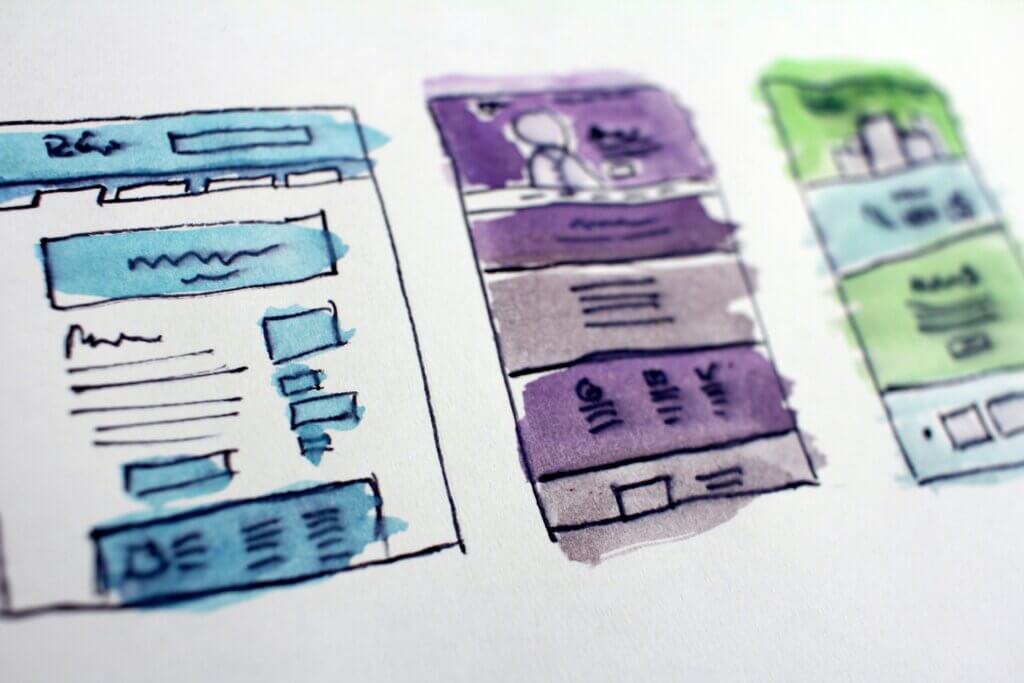
Why You Need a Branded Website
So why a branded business website? Along with your email list, a website is a must-have when you’re starting out building your brand. Like an email list, you have more creative and administrative control over a website than you do your presence on other platforms like Facebook, Instagram, or Etsy. And with the exception of rare service interruptions or security breaches, your site is much less likely to disappear the way a social media account can be banned or suspended.
Your branded website is like your home base, a focal place for shaping your brand image and narrative. At SPI, we recently revamped our website to focus on our core focus of community building and make it cleaner and easier to navigate.
Here’s what a well-crafted small business website can help you do:
- Control your brand: A website gives you full control over how you show your brand to the world, without the creative restrictions of third-party platforms. It also diversifies your online presence, reducing dependence on any single platform.
- Build trust: A well-designed website lends an air of professionalism and legitimacy to your brand, instilling trust.
- Own your content: You own and control the content on your website, reducing the risk that algorithm changes or platform shutdowns will hurt your content’s reach and visibility.
- Make money: You can use your website to promote and sell products and services or run ads.
- Build community: Websites offer a dedicated space for building a community and a following. You can capture newsletter and email-list sign-ups, and even link to your own membership community.
- Showcase your work: Use your website to share case studies, testimonials, and portfolios of your work with your audience.
- Understand your audience: Website analytics provide valuable data on user behavior, helping you better understand your audience and optimize your content to reach them.
Your Website Should Express Your Brand Personality
When a lot of people hear the word brand, they think logo. And true, a logo is a key part of your creator or online entrepreneur brand — but your brand is also a lot more than just a snazzy graphic. Since your website is your home base, it’s the best place to convey the essence of your brand through the following key elements:
- Clear purpose: Define your unique value and why you exist. At SPI, we’re upfront about our why — our mission, vision, and core values.
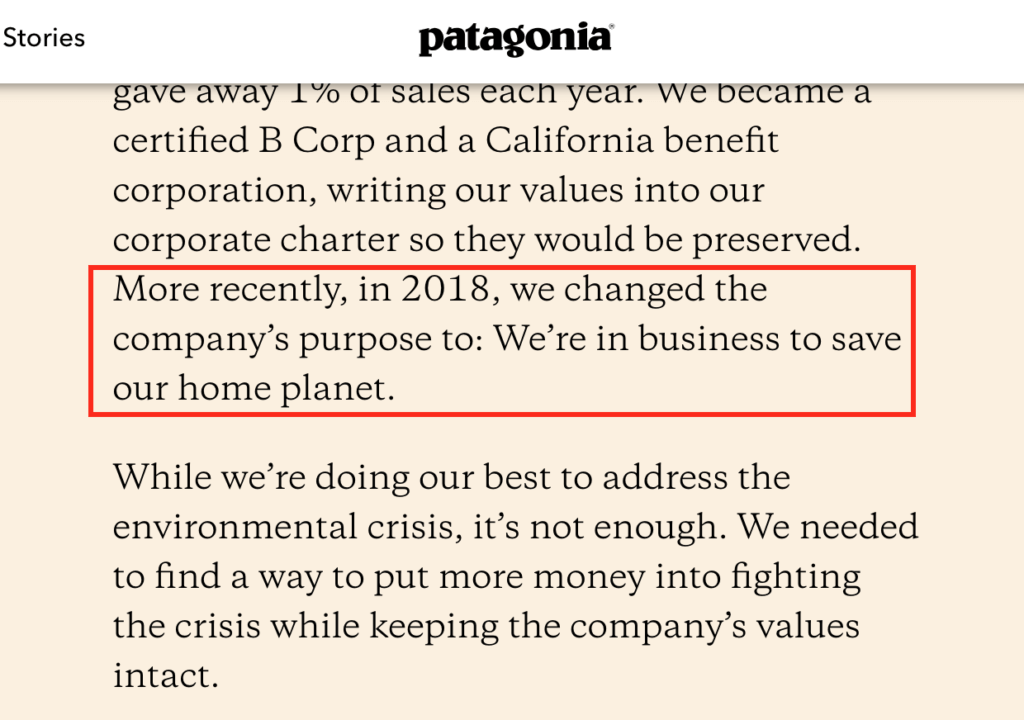
- Color scheme: Utilize a maximum of four brand-reflective colors. Align colors with professionalism; avoid mismatch. Explore color psychology—the study of how colors affect perceptions and behaviors—for guidance.
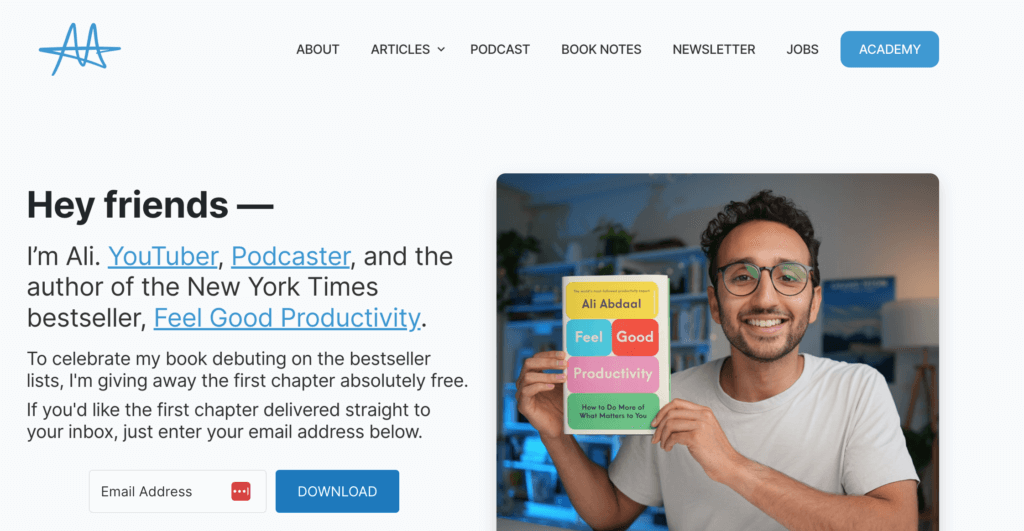
- Tone of voice: Beyond aesthetics, your branded business website needs a distinct voice — a tone that informs all your written content. Adapt your tone to your personality, niche, and audience, keeping it approachable and jargon-free.
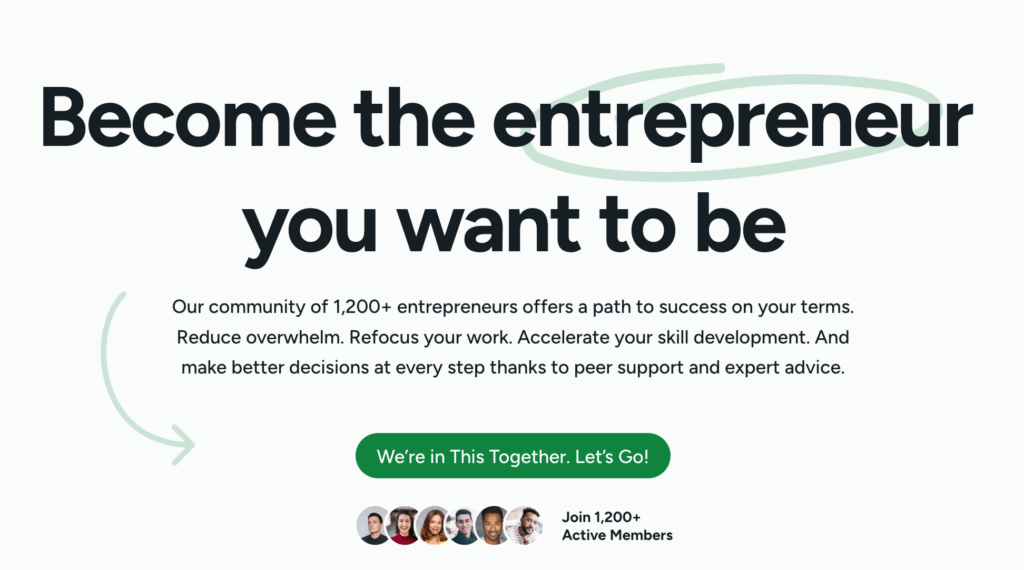
- Tagline or motto: A concise, memorable tagline helps convey your brand identity and value in bite-size form. It’s a little detail that can matter a lot!
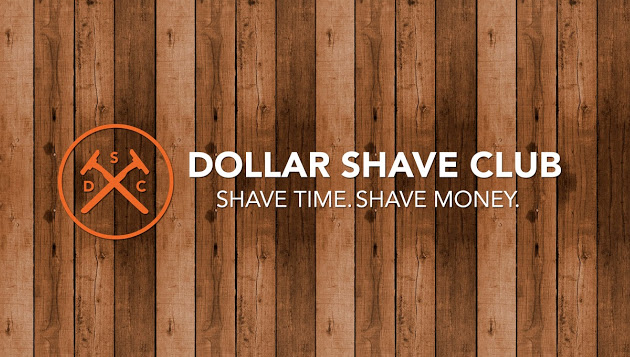
- Signature font: Choose one or two readable fonts that reflect your personality, for consistency across everything you write and to bridge your brand’s visual identity with its written one.
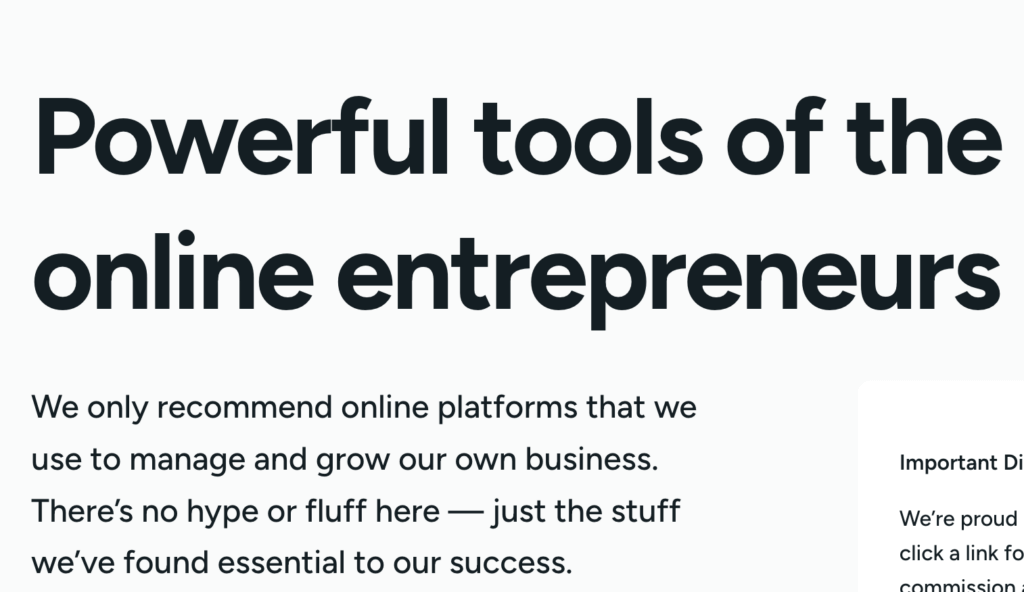
- Unforgettable logo: Last but not least, an eye-catching logo provides instant brand recognition. Consider enlisting a graphic designer for this one.

Optimizing the Visual Experience of Your Online Business Website
For the most part, visitors will experience your website visually, so there are a few more important considerations when it comes to your site’s visual assets. Make sure the images, background designs, and other visuals you use on your site are:
- Relevant to your brand and content: This may seem obvious, but your website visuals should make sense in the context of your brand and the surrounding content. Each visual asset should complement and enhance the content it accompanies and align with your brand's identity, reflecting its values, personality, and messaging.
- Strategically placed: Place visuals purposefully to guide the user's journey and emphasize key messages. Consider the flow of the website and how visuals can enhance storytelling.
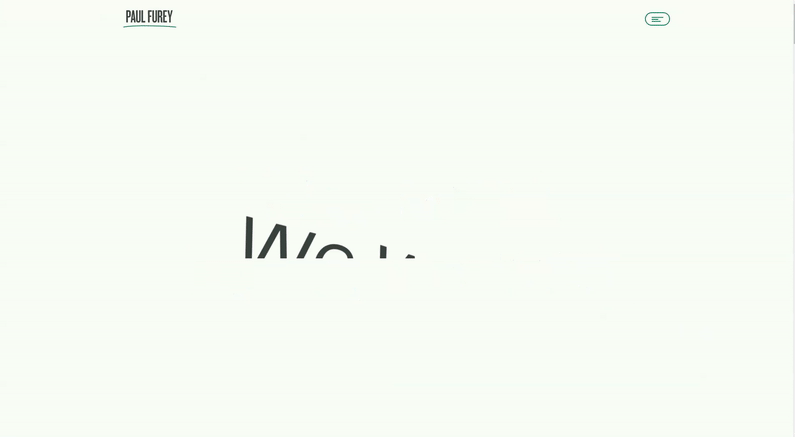
- Consistent in style: Maintaining a consistent visual style across all images creates a cohesive and harmonious look and helps with brand recognition. Use those brand colors!
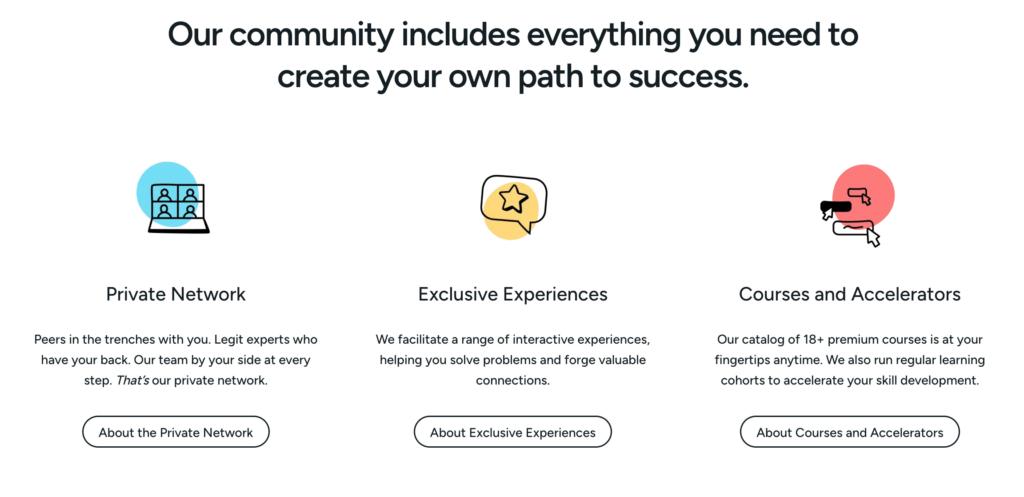
- High quality: Use high-resolution, professional images; grainy or pixelated ones can detract from your brand's credibility.
- Accessible: Not all of your visitors will be experiencing your branded business website visually, so ensure that any visual assets are accessible by adding descriptive alt text to all of your images.
- Optimized and responsive: Visual assets should adapt well to various screen sizes, particularly on mobile devices. They should also be compressed to improve loading times (and search engine rankings).
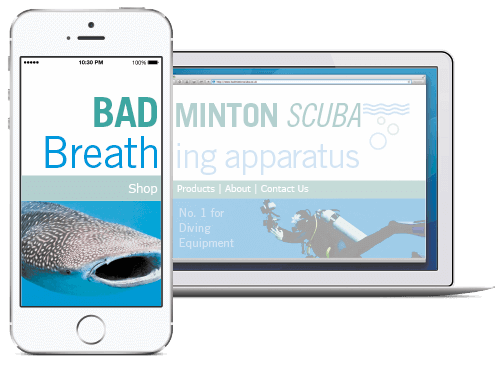
- Legal: All images should be either original, properly licensed, or fall under fair use. Respect copyright laws, and get permission if you need to!
- Timeless: As much as possible, choose visuals that can evolve with your brand rather than trends that might become outdated.
- Human: Human faces and expressions can create a stronger emotional connection with the audience, so incorporate images that feature people.
![Screenshot from the SPI community: "Ready to find [crossed out] join your people and level up?" Smiling faces decorate the page.](https://www.smartpassiveincome.com/wp-content/uploads/2024/03/humans-1024x509.png)
By making sure the visual and written experience of your website is consistent, professional, and aligned with your brand identity and voice, you’ll foster a sense of familiarity and trust with your audience.
A Great Creator Website Needs a Great User Experience: Layout and Navigation
Your website isn’t just a static display; it's an interactive experience for your audience. Once you’ve established the key brand elements your website needs, from your brand’s purpose to its voice, tone, and visual identity, it’s time to start designing the actual site layout.
As you’re choosing a layout, think about what will best convey your brand identity and message while making things as seamless and intuitive as possible for your visitors to navigate and find what they're looking for. Here are some popular layout options to consider:
- Single-Column: Clean and straightforward, with a single column for easy navigation.
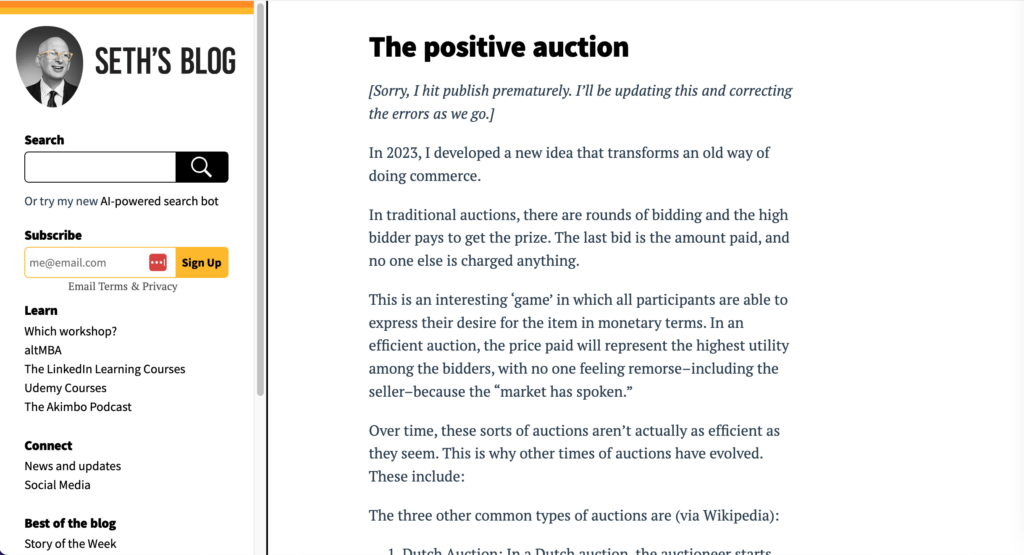
- Grid: Organizes content into a visually appealing grid structure, suitable for showcasing multiple items efficiently, like portfolios or product displays.
- Magazine or Blog Layout: Mimics a magazine or blog with multiple columns — well-suited for content-heavy websites.
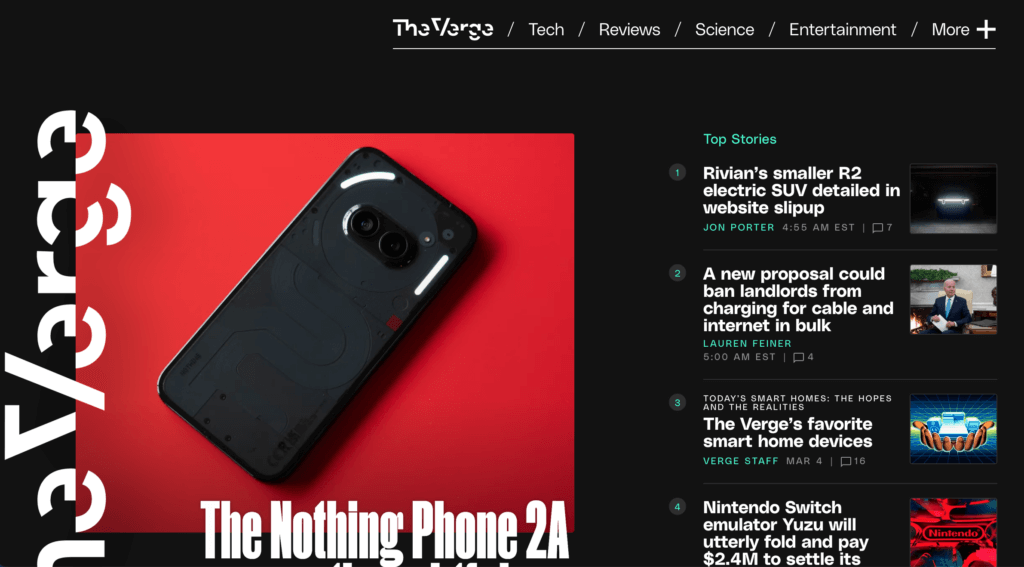
- Hero Image or Video: Features a striking image or video at the top, capturing immediate attention and often used for product showcases or setting the brand tone.
- Split Screen: Divides the webpage into two distinct sections, providing a modern and visually appealing design with room for creative elements.
- Parallax Scrolling: Creates a dynamic scrolling experience with background elements moving at different speeds, adding depth and interactivity.
- Card: Presents content in modular and flexible cards, promoting visual hierarchy and easy organization, suitable for various types of information.
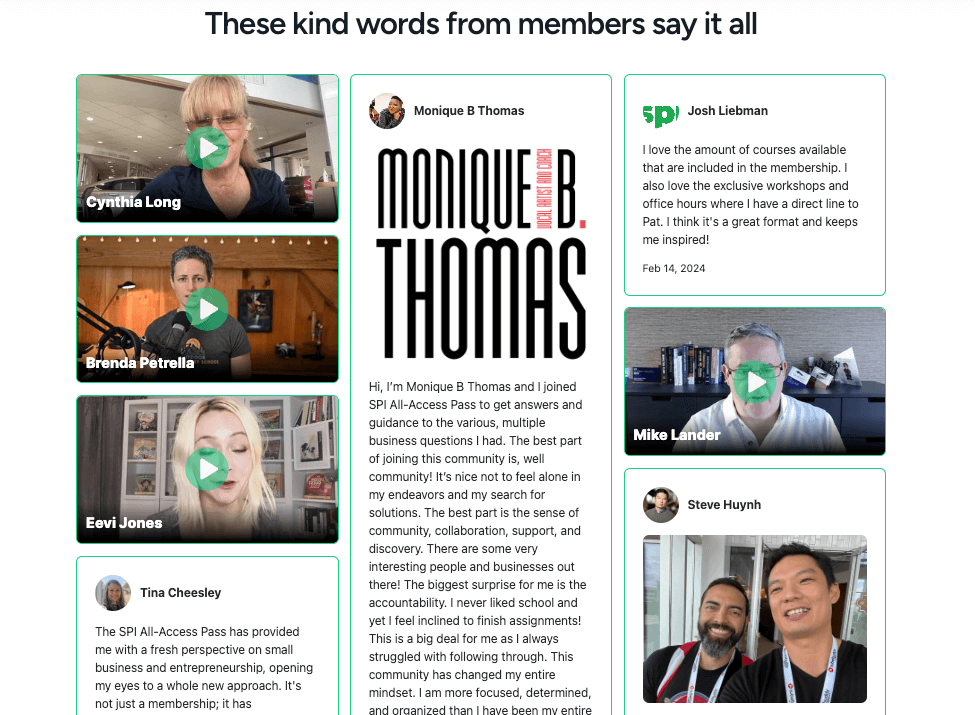
- Full-Screen Background: Incorporates a full-screen image or video background for a visually immersive experience.
A quick note on navigation: Whatever layout you choose, your users’ ease in navigating your site will determine how long they stick around and whether they’ll find what they need—or if they’ll get frustrated and give up. You can also help people navigate your branded website through careful placement and organization of menus and footers.
The Strategic Content Your Website Needs
You’ve figured out your brand’s visual identity and voice and chosen a layout for the site. Now you need to fill it with useful content that tells your visitors who you are, what you do, and how you can help them!
These are some of the key pages to consider for your branded business website—some are must-haves, while others will depend on your business and offerings:
- Home Page: The home page should offer a snapshot of your brand, enticing visitors to explore further, communicating your unique value proposition, and guiding users to key sections of your website.
- Blog: Beyond promoting your products or services, blogs are still a popular way to share valuable content that positions you as an authority in your niche.
- Podcast Page: If you have a podcast, you should definitely have a dedicated page for it on your site. Although your podcast can technically exist without a website, a podcast page can promote your show and help listeners learn more about your brand and offerings.
- Credibility Section: Testimonials, case studies, and press coverage showcase the positive experiences of others, establishing your brand's credibility and reliability and building trust. This content can live on its own page or be placed strategically at different places on your site.
- Product/Service Pages: Each product or service page should provide detailed information, benefits, and a compelling call to action (CTA).
- Brand Story/About Page: Your audience connects with the people and the story behind your online business. Use this page to communicate your mission, values, and the journey that led to the creation of your brand.
- Shop Page: If you want to use your site to sell things, you’ll need a shop page with easy navigation, clear product categorization, and a streamlined checkout process.
Examples of Online Creator and Entrepreneur Branded Websites
For a little inspiration, here’s a selection of great branded business websites created by online creators and entrepreneurs just like you! These folks all happen to be members of our SPI Pro community, which you can learn more about at SmartPassiveIncome.com/community.
Gnome Angel
Ange Wilson’s quilting-based creator business website has a strong, vibrant visual identity based around a palette of pinks and blues and a playful header font. The Gnome Angel value proposition greets you as soon as you open the home page, and as you scroll you learn about Gnome Angel’s resources and products via a “patchwork” design style that evokes a quilt. The “sticky” navigation menu persists as you descend the home page, providing easy access to the rest of the site.
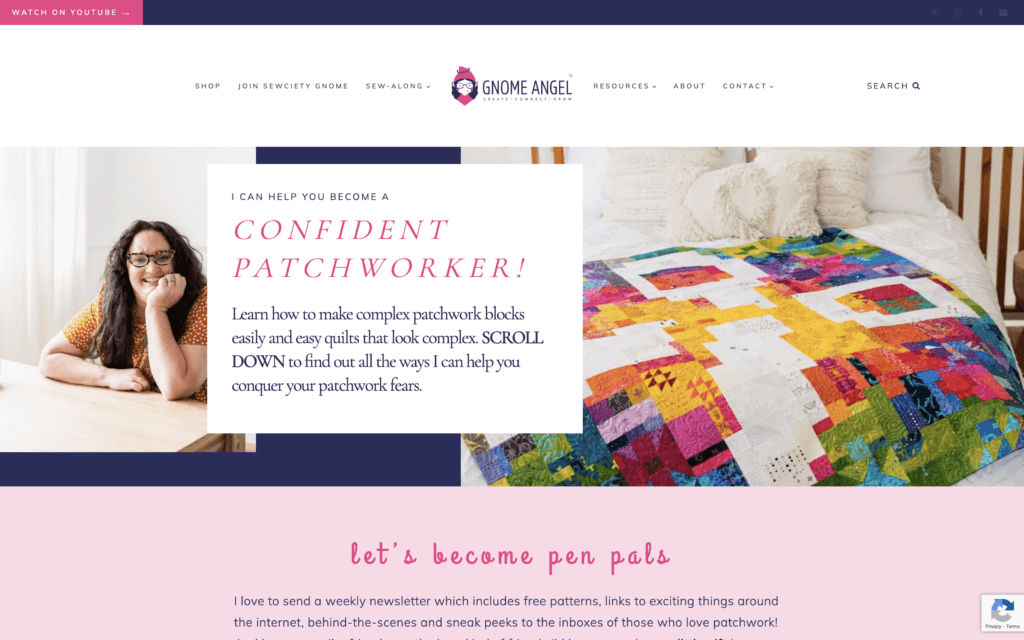
Piscari
The Piscari site is a company brand website with a simple, clean, functional home page that serves as an About page for the company and its founder, Mike Lander, with a link to join the Piscari email list at the bottom. A top nav menu that displays on every page makes it easy to learn more about the company, its services, and other resources. The “Contact Us” button, framed in bold green, highlights the main call to action visitors are encouraged to take.
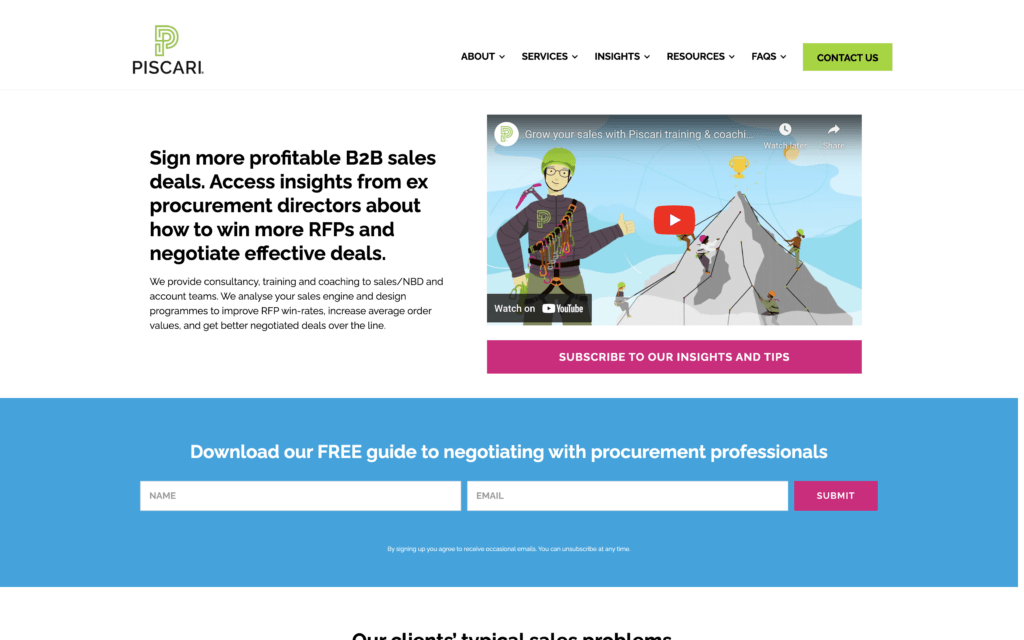
Jette Stubbs
Career and business coach Jette Stubbs’ site introduces her offerings right off the bat, followed by a friendly photo of Jette that humanizes the brand. The simple single-column layout reduces distraction and guides you down the page as you encounter a happy client’s testimonial and learn more about Jette’s services. Graphic elements and images are interspersed throughout, along with subtle font color changes to spark attention. The parallax scroll effect with Jette’s face in the background adds more human dimension and a bit of novelty. A simple top navigation menu is duplicated at the bottom, with links to an About page, Jette’s podcast, and testimonials.
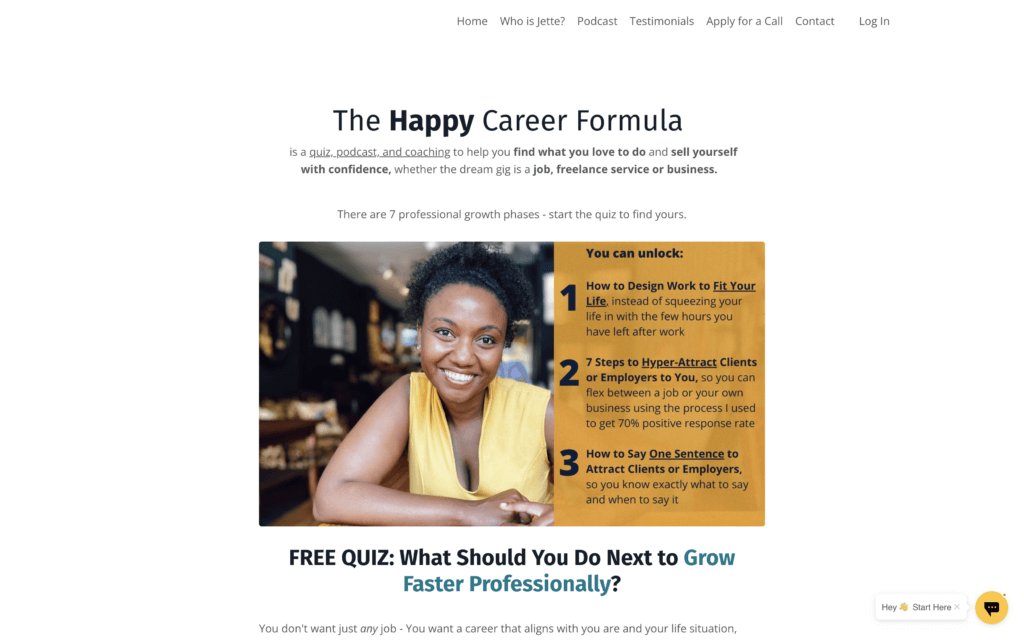
Still on the Fence about Building a Website for Your Small Business?
We’ll end with a few reminders — and by debunking a few common misconceptions about creating a branded business website:
- Yes, you do need a website. Websites aren’t just for big companies, and social media isn’t enough.
- Your website doesn’t have to be complex or aesthetically stunning. Simple, user-friendly designs often perform better, so focus on clarity and functionality above all.
- A website needs attention. Your website isn’t just going to attract traffic on its own. You need to promote it and regularly populate it with fresh, SEO-rich content.
- You don’t have to go it alone. There are plenty of great designers out there who can help you craft a logo and build a professional-looking branded website. (We worked with the good people at Rockbase for our redesign.)
If you’re feeling daunted, don’t! We’ve got all the support you need to start building your brand and designing a killer website to show it off to the world. Check out our site’s Free Resources tab, where you’ll find content for entrepreneurs at any level. If you’re ready to take the next big step in your online business journey, head to SmartPassiveIncome.com/community to learn about our communities for online entrepreneurs. You can learn from others like you who have built their own branded websites, gain access to our full library of courses, participate in live events, and more.
The post How to Design Your First Branded Business Website appeared first on Smart Passive Income.
]]>YouTube From Scratch Part of the All-Access Pass course library, learn how to start a YouTube channel and create valuable video content that attracts the right audience and generates revenue (even if you’re scared of video). It's the course we wish we had years ago… YouTube From Scratch is a step-by-step online course that teaches you […]
The post YouTube From Scratch appeared first on Smart Passive Income.
]]>YouTube From Scratch
Part of the All-Access Pass course library, learn how to start a YouTube channel and create valuable video content that attracts the right audience and generates revenue (even if you’re scared of video).
It's the course we wish we had years ago…
YouTube From Scratch is a step-by-step online course that teaches you how to create a new (or optimize an existing) YouTube channel, develop relevant and engaging content, grow your followers, and monetize your channel.
Module 1
Plan Your YouTube Channel
Learn how to choose a unique angle for your channel so that you can stand out. You'll learn how to choose video topics and make decisions about your filming, publishing schedule, and video length.
Module 2
Create & Set Up Your Channel
Learn how to use YouTube Creator Studio, including branding and customizing the look of your channel, uploading videos, and all the little tweaks that will help you get more views.
Module 3
Publish Your First Video
Use the Video Brainstorming Worksheet to create your first video, from planning to filming to uploading.
Module 4
Creator Studio Analytics
Learn the terminology of YouTube analytics and which channel and video metrics to focus on.
Module 5
Monetization
Learn how monetization works, both using YouTube's built-in monetization opportunities, and other methods and opportunities.
Why the details matter (a story from Pat)
Scary. Intimidating. Overwhelming. These are just some of the words that probably describe how you view the world of YouTube as a content creator. One thing is for sure though, YouTube is where the audience is, and every day you’re not on the platform with videos to potentially find viewers, you’re missing out on reach, impact, and income.
Just putting up a YouTube channel, however, is not good enough. You need a plan — something I wish I had when I started my YouTube journey back in 2009.
When I first started, I didn’t have a roadmap, but after years of mistakes, I finally figured out what worked. Let me tell you, it was like getting Lasik surgery for content creation.
Today, the Pat Flynn YouTube channel has over 360,000 subscribers — but it took a lot of blood, sweat, and tears to get there. In January of 2021, I started a second YouTube channel in a space I knew nothing about — collecting Pokémon cards. In less than a year, I crossed the 100,000 subscriber threshold!
What was the difference?
I finally understood how YouTube works, and I had a plan. Now, both YouTube channels combined earn millions of views and tens of thousands of dollars in earnings per month.
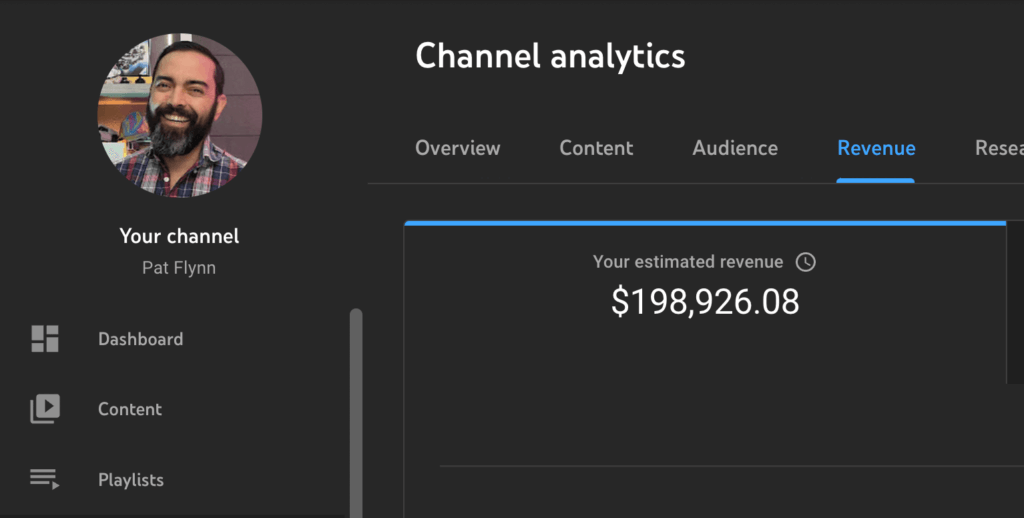
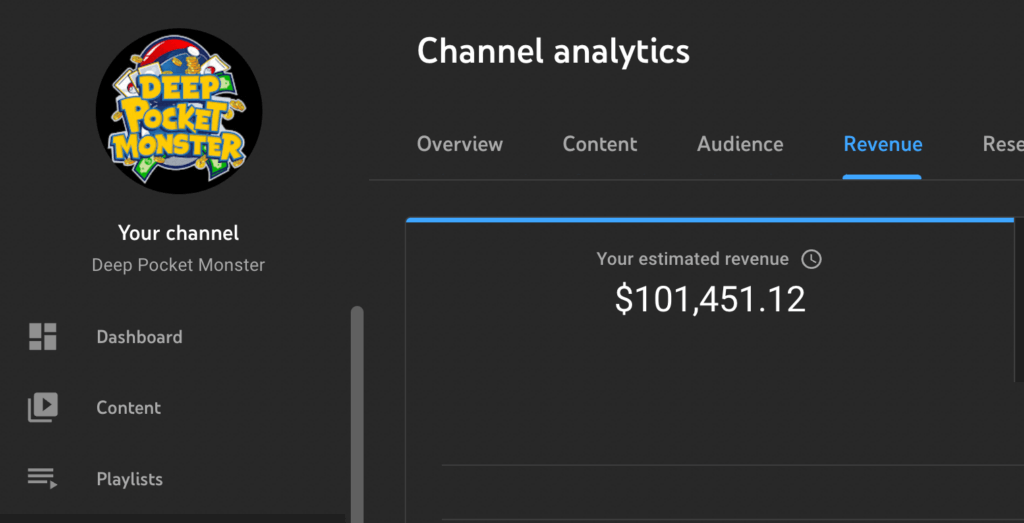
Over the last nine years, I gained a lot of knowledge and experience that I applied to this second channel… and it worked! YouTube doesn’t have to be hard. You just need to have a plan, stick to it, and have a guide to help you along the way. That's why I created YouTube From Scratch — to help you create a successful YouTube channel faster than I did, without making the same mistakes I made.
Meet your course instructors
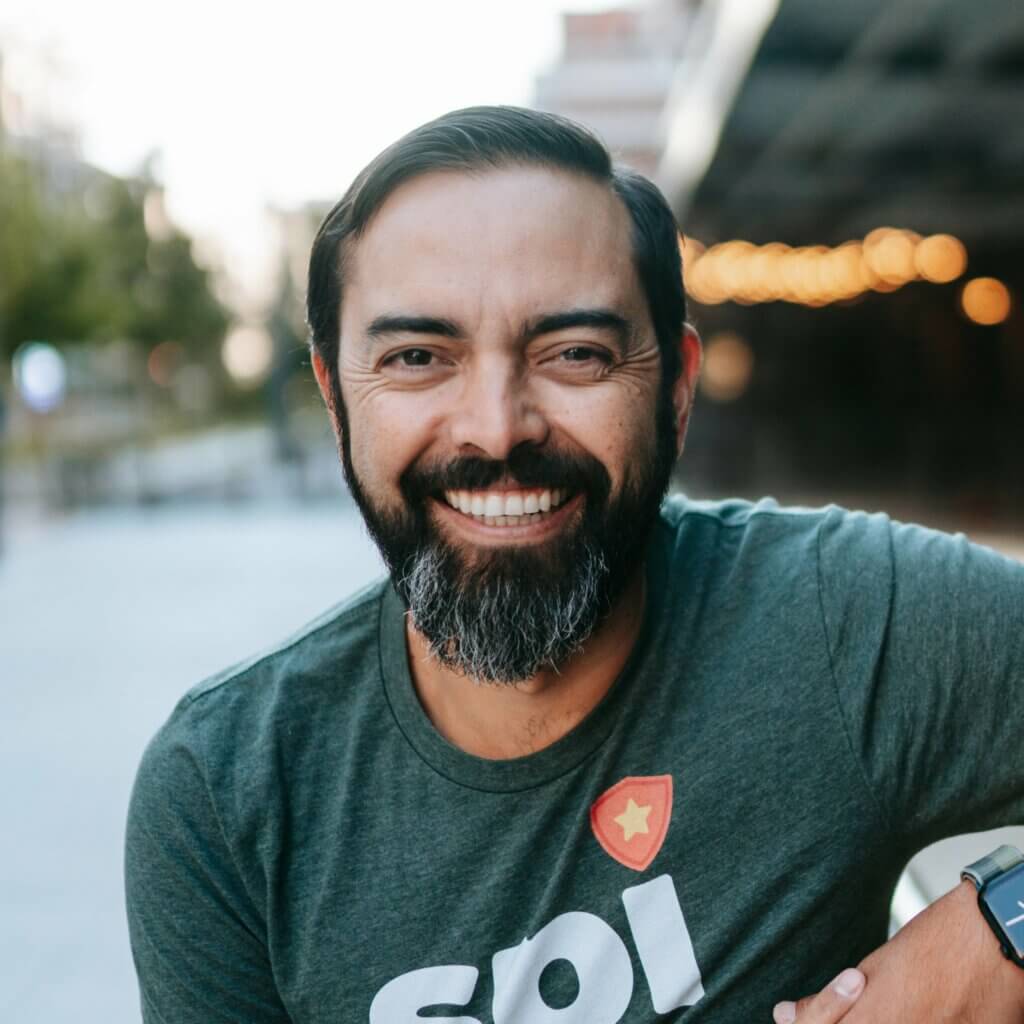
Hi, my name is Pat Flynn.
As I described above, I'm the host of two YouTube channels, Pat Flynn and Deep Pocket Monster, focused on very different content. I've learned a lot of lessons in the process of building them that I'm eager to share so you can build your own channel faster.
Along with these YouTube channels, I'm the founder and co-CEO of SPI Media, which is focused on helping entrepreneurs like you build and grow online businesses. At SPI, you'll also find my podcast, The Smart Passive Income Podcast.
I'm excited to introduce you to Caleb, my friend and long-time videographer, as well as my business partner at SwitchPod.
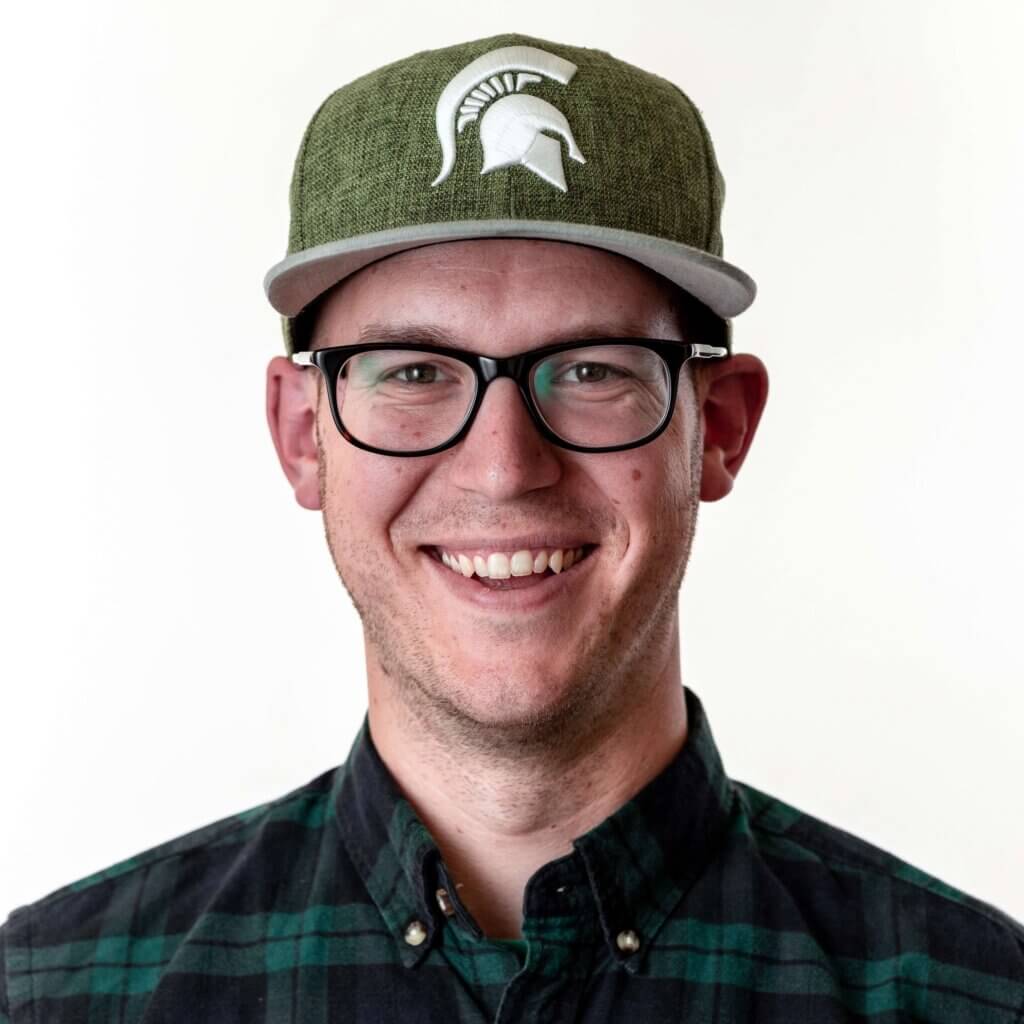
Meet our guest expert, Caleb Wojcik.
Caleb has been making videos for himself and his clients since 2010. He’s a “read the manual” type of nerd and a recovering camera gear addict. Over the years he has helped thousands of people make better videos. He knows not everyone can afford to hire a professional to show up and film great videos for them, so he started teaching people how to do it on their own.
Caleb has filmed the NHL, MLB, NCAA basketball, the Rose Bowl, weddings, commercials, book trailers, and plenty of web videos of online entrepreneurs (such as Pat Flynn, Amy Porterfield, and Chris Guillebeau). He helped co-found Fizzle.co but left in 2014 to start a video production company and teach video production at MakeBetterVideos.com. In 2019, he co-launched SwitchPod with Pat as well.
YouTube From Scratch outline
Welcome, Students!
- Welcome! Watch This First
- Office Hours
- Course Downloads
Module #1: Plan Your YouTube Channel
- Welcome to This Module. Here's What's Next
- Lesson 01: Choosing Your Niche
- Lesson 02: What Are They Already Watching?
- Lesson 03: What's Your Angle?
- Lesson 04: Picking Topics
- Lesson 05: How to Get More Views
- Lesson 06: The Right Way to Film a Video (Hint: Start with a Title and Thumbnail)
- Lesson 07: How Long Should Your Videos Be?
- Lesson 08: How Often Should You Publish?
- Lesson 09: Next Steps
Module #2: Create & Set Up Your Channel
- Welcome to This Module. Here's What's Next
- Lesson 01: Creating Your Channel
- Lesson 02: Branding & Customization
- Lesson 03: Choosing a Name
- Lesson 04: Customizing Your Channel Page
- Lesson 05: How to Upload, Publish & Schedule a Video
Module #3: Publish Your First Video
- Welcome to This Module. Here's What's Next
- Lesson 01: Pick Your First Video to Film (Title & Thumbnail)
- Lesson 02: Let's Plan the Video (Hook, Story, Ending)
- Lesson 03: “How to Film” Library
- Lesson 03.1: Face on Camera
- Lesson 03.2: Screen Recordings
- Lesson 03.3: Vlogging
- Lesson 03.4: B-Roll Tips
- Lesson 03.5: Top-Down/Overhead Videos
- Lesson 03.6: Engagement Tricks
- Lesson 4: Editing a YouTube from Start to Finish
- Lesson 5: Exporting & Starting to Upload Your Video
Module #4: Creator Studio Analytics
- Welcome to This Module. Here's What's Next
- Lesson 1: Channel Analytics
- Lesson 2: Individual Video Analytics
- Lesson 3: CASE STUDY — Pokémon Channel
- Lesson 4: CASE STUDY — Pat Flynn Channel
- Lesson 5: CASE STUDY — Caleb Wojcik's Channel
Module #5: Monetization
- Welcome to This Module. Here's What's Next
- Lesson 1: Mindset to Reach 1,000 Subs & 4,000 Hours
- Lesson 2: When You're Monetized, Here's What to Do
- Lesson 3: Other Ways to Generate More Revenue
Closing
- Final Remarks / Mindset
We believe in community-driven courses
Save 16% with Annual billing


For established entrepreneurs
SPI Pro
$299
/ quarter
$999
/ year
You have an online business that’s up, running, and generating revenue. You’ve figured out a lot but are unsure where to focus next. And the growing pains are real.
Everything in the All-Access Pass community, plus:

Vetted network of serious pros

Curated member masterminds

Exclusive access to in-house experts

Strategic guidance & tools
“I love logging into Pro because I don’t feel like I’m alone anymore. To see so many other people out there working towards the same thing and supporting each other is amazing. And the community administration is amazing — the checking-in, the answers, the connecting — it’s brilliant. I hope that my community has some of the genie in the bottle that Pro has.”


Ange Wilson

Not sure which membership is right for you?
or compare both plans so we can help you choose your path.
The post YouTube From Scratch appeared first on Smart Passive Income.
]]>Have you ever considered creating an online course? This episode's for you! Already have a course, but your completion rates are low or declining? This episode's for you! Are you curious about how we've restructured our entire business at SPI around better student outcomes and steady, recurring revenue? Well, this episode's for you! We have […]
The post SPI 763: Optimizing Your Online Courses and Community with Ashley Gore appeared first on Smart Passive Income.
]]>Have you ever considered creating an online course? This episode's for you!
Already have a course, but your completion rates are low or declining? This episode's for you!
Are you curious about how we've restructured our entire business at SPI around better student outcomes and steady, recurring revenue? Well, this episode's for you!
We have today's guest, Ashley Gore, to thank for one of the best things we've ever created: the All-Access Pass. Ashley is our Community Experience Manager and an expert in learning facilitation and curriculum development.
In this session, Ashley pulls back the curtain to reveal the strategy behind our cutting-edge online education experience. She and I discuss leveraging backward-design concepts for higher completion rates, why community-powered courses are so effective, running asynchronous accelerators, and more!
So, how do you create an amazing journey for your students? Join us for this chat to find out!
And if you happen to be a teacher, check out Ashley's incredible resources for educators at Learning with Miss LaGrow!
Today's Guest
Ashley Gore
Ashley Gore is an expert in curriculum, instruction, and all things learning. She is currently the Community Manager for SPI's All-Access Pass. In this role, she oversees SPI's learning-centered community of over 1,000 members where she creates and facilitates accelerated cohorts, designs learning pathways, and enhances the library of courses and other materials to make it relevant, engaging, and accessible.
She also owns Learning with Miss LaGrow, a business devoted to providing low-prep, high-engagement instructional materials to upper elementary teachers around the world.
- Learn more about the All-Access Pass
- Follow Ashley's work at Learning with Miss LaGrow
You'll Learn
- How to create an amazing learning experience for your students
- Using backward-design concepts to create courses that deliver results
- Filtering information and why your lessons should be as short as possible
- Why community-powered courses are the future of online education
- How we've doubled our course completion rates with positive peer pressure
- Running accelerators and creating a multi-course learning journey
- How to keep your education materials up-to-date and relevant
Resources
- Learn more about Circle, our favorite community platform
- Subscribe to Unstuck — my weekly newsletter on what's working in business right now, delivered free, straight to your inbox
- Connect with Pat on Twitter and Instagram
SPI 763: Optimizing Your Online Courses and Community with Ashley Gore
Ashley Gore: As a course creator, you wanna make sure that you're making your content as accessible as possible. And the biggest thing I mean by that is how many different ways are you actually showing the point you're trying to get across? So anytime I create a course or I audit our courses, I'm thinking to myself, "Okay, Pat's saying it, so they can hear it. Can they see the concept anywhere? And then, can they read it?" Thinking about all the different ways that you can get that content across because people learn in different ways too.
Pat Flynn: If you've ever thought about creating an online course and you are curious about how to encourage people to get through that, well, then this episode is for you. Maybe you have an online course, and you look at your completion rates, and you're like, how can we increase those numbers? Or, man, it's declining, what can we do about this? Well, this episode is for you.
If you're curious about how we at SPI have some of the highest completion rates in our courses and how we have restructured our entire business over the past couple of years to make sure that is the case and Continue to generate more recurring revenue or business than we ever have before, well, then this episode is for you.
I'm so excited because I get to introduce somebody to you who has been on the show, like, briefly in the past, but never has been featured on here. In fact, this person, when she came on, she took a look at everything. I mean, this is kinda what we hired her for, but, yeah, she took a look at everything that we had, all the courses and the students and the completion rates and our content and everything that was going on, she's like, "You know what? I think we need to do it this way." And we did. And it's been awesome. Honestly, the best thing we've ever done with SPI, and we have Ashley Gore to thank for that.
If you are inside of our All Access Pass, then you definitely know Ashley. If you've ever participated in any of our SPI accelerators, Then you know Ashley. And whether you know who she is or not you're gonna get to know her and the work that she does and the tactical and very strategic things that you can do to just do better with your online courses and your community and perhaps, even how to combine the two together. If you have any one of those things, an online course or a community, and especially if you have both and or want the other, Well, then you're not gonna wanna miss this. Here she is, Ashley Gore, SPI's community experience manager.
Announcer: You're listening to the Smart Passive Income Podcast, a proud member of the Entrepreneur Podcast Network, a show that's all about working hard now, so you can sit back and reap the benefits later. And now your host, he played right wing on an intramural dodgeball team in college, Pat Flynn.
Pat Flynn: Ashley, welcome to the SPI podcast. It's about time that you're on. I'm so excited that you're here.
Ashley Gore: I know. Thank you so much, Pat, for having me. It's been I've been on a couple episodes, but kind of with the team and talking about what we do at SPI within the All Access Pass in our community. So excited to really dive in today with you.
Pat Flynn: Yes. For sure. We're gonna dive into courses and creating great curriculum and kind of the stuff that we're doing at SPI to put community on top of that curriculum and how to best approach that. And whether you're just starting out creating online courses or sharing information online or you've done this and wanna know how to restructure things, this is definitely gonna be an episode for you. But, Ashley, before we get into that, I'd love to know, and I I'm sure the audience would love to know and get introduced to you a little bit more. What's your background and and then how did you get involved with SPI?
Ashley Gore: Yeah. So I, by trade, am an elementary teacher was an elementary teacher. So I taught in the public school system for 7 years in the Midwest, couple different schools, very different school types, realized I was in need of a career change. And so I actually took so shout out to her, I took the Teacher Career Coach course, and she has a podcast as well, Daphne Gomez who is an SPI Pro member.
And so I took her course, kind of figured out what exactly I wanted to do, figured out I really Still wanted to be involved with learning somehow and curriculum design, that sort of thing. And she messaged me one day and said, Hey, have you heard of SPI before? And I said, Actually, no. Tell me more about this.
And so I listened to the podcast. I dove into what SPI was, and I immediately applied for the community manager position to help create the All Access Pass. And here we are a year and a half later and I I am doing all things, not only community, but course related as well. Yeah. I'm just really happy to be here.
Pat Flynn: That's amazing. What grade did you teach in elementary school?
Ashley Gore: I taught both Third and fourth grades. Different times, not at the same time.
Pat Flynn: There's a lot of teachers that listen to the show, a lot of teachers who have a little side business or might want to go into a career just like you have using their skills.
What would you say would be your best advice for somebody who might be in that position?
Ashley Gore: So I would say my biggest advice is I feel like a lot of teachers only feel that they can move into roles that are directly, like, K 12 related, and that's how I felt for a while. So I was originally looking for jobs and ways to show my expertise through, like, actually traditional teaching. And when looking for jobs and exploring my strengths and what I really enjoyed, there's so much more out there. A lot of what I do from day to day can fit into the categories of, like, instructional design, community management in terms of, like, digital community, Learning and development, so there's so much out there, and your skills are transferable.
And there are companies out there that will see that expertise and really value it and turn it into something awesome.
Pat Flynn: Yeah. And you have turned it into something awesome. And we're gonna talk about online courses, we're gonna talk about community and, of course, the All Access Pass and how that was built and kind of where your ideas came from and inspiration for that. But let's just talk about online courses first.
When it comes to curriculum online, what would you say is the best approach somebody can take to making sure that not just, you know, we we make sales. I mean, that's, that's the byproduct of creating something amazing. How does one approach creating an amazing online learning experience for their people?
Ashley Gore: I feel I could give a 6 hour seminar on that and still not be done. So some of my biggest tips, I would say, is especially since it's online, keeping it as flexible as possible, especially considering your audience and thinking what are their lives like outside of this actual online course that they're sitting down to do.
Do they actually have time for a half hour long lesson, or should you be breaking it up into 5 or 10 minute chunks? So that's a big thing. Also, in knowing your audience too, so figuring out what do they already know. I feel like a lot of people, no matter what industry you're in, kind of just assume, oh, they know these acronyms. They might not.
And so anything you say, making sure even if it's just quickly saying so if I'm talking about an LMS, which some people listening might not know what that is. That's a learning management system. And so if I'm teaching about online courses like I am right now, when I say LMS or learning management system. It's so easy just to be able to insert, Okay, this is what I'm actually talking about in case you're lost or in case you don't have that prior knowledge. Those are a couple things. I don't know if you have more specifics you wanna cover. I have a lot!
Pat Flynn: I mean, I'll I'll I'll plus one that last one for sure. I mean, it's so easy to make a person feel like they shouldn't be in the course because you've just kind of spoken over them and have not considered that.
At the same time, you also don't wanna go, Okay, put your hand on the mouse. Move your mouse to this button here, and you don't wanna make people feel like, okay. Well, this is You're just making me feel dumb at this point. So there is a balance there, and I think a lot of it involves conversations with your audience.
So research is important. Obviously, we teach how to build online courses inside of the All Access Pass with our Heroic Online Courses curriculum. But in general, the overall, like, here is all the information you need. We live in an age now where we want to help people get that result as quickly as possible. Right?
Which means pruning is very, very important and making sure you're not overloading. And I think that and you can speak to this as well, actually. I think a lot of people when they come across Even our content, they worry about it being too much. And so can you speak to this idea of, you know, if you're gonna teach something, literally putting the entire encyclopedia of something into a curriculum versus getting just what's there to get the result that a person's purchasing for and and to get them on their way. How does one begin to sort of wrap their head around that?
Because we're so trained, at least at my age and where I came from in the in the Internet space, it's like more information equals better, but that's not true anymore. Right?
Ashley Gore: Absolutely not. And with the age we live in, they can find that information if they want to find that information. The reason they're purchasing your course or your membership is they, first of all, probably like you or at least trust you and your brand enough to be able to, okay, provide this information in a way that makes sense to me and to help me sort through all of that noise that I could already find on Google or YouTube or whatever it is.
So a big principle I follow is called backwards design. And so how that works, there's three big components. So you wanna start you're basically planning your course backwards. So you're gonna start by thinking, what is the goal they need to reach through my course? What should they be able to do at the end of it?
And then maybe what smaller goals or milestones can they had along the way? So you're thinking of what they should do at the end. I feel like a lot of people when they do courses are thinking of just all the things they know because you're the subject matter expert. So you're just wanting to teach everything that you know, and that's not great for your student or audience member. And so once you have whatever they're supposed to know at the end or be able to do, thinking of, okay, how can I or they check that they know that?
How am I going to assess them? So if it's a live cohort, which I'm sure we'll talk a little bit more about, like, how can I check their knowledge? Or if it's asynchronous and just a course that you put up, are there little quiz knowledge checks I can put along the way that help them reflect, Okay. Do I actually know what I'm doing? Am I ready to move on to the next lesson?
Then the third thing, you can start thinking about the actual content. So what do they need to know to be able to perform that? And a good rule of thumb is your lesson should be as short as possible to get the point across and reach those goals. Ensure that every piece of content you're putting in has a purpose. And if you want to expand upon that, that's, first of all great material for supplemental events or work shops or webinars or a future course or just something you could link below.
Like, if you wanna know more about x y z, go check out this article. So I would say those are the big things to try to prevent the overwhelm and actually have some direction when you're creating.
Pat Flynn: That's really smart. And I think Even removing parts that are still useful, but not necessarily needed to get to the goal is really smart. And I love that idea of putting it into an addendum or, you know, learn more here or we've even put those into bonuses.
Right? You kinda take them out just to put them back in and make the the course more valuable because It's quicker to the result, but there's some other things that you can go you can if you wanna go further with it, which is really great. It's very obvious that you have had a lot of experience with thinking about it from the student's perspective. Now you are shifting from, you know, third and fourth graders to mostly adults. Kids come with their own struggles.
What are these struggles that adults have when it comes to learning? You mentioned time being obviously one of those things. But what else might an adult struggle with when it comes to learning in an online curriculum fashion.
Ashley Gore: Yeah. So a couple things come to mind.
So one of the things is as a course creator, you wanna make sure that you're making your content as accessible as possible. And the biggest thing I mean by that is how many different ways are you actually showing the point you're trying to get across? So anytime I create a course or I audit our courses, I'm thinking to myself, Okay, Pat's saying it so they can hear it. Can they see the concept anywhere?
And then can they read it? Thinking about all the different ways that you can get that content across because people learn in different ways too. And so for me, I would personally struggle if I went into a course and it was just someone talking to me the entire time. And I have no time to actually see visuals. I have no time to pause and have reflection opportunities. So that's a big one.
Pat Flynn: How much do you think self doubt plays a role in this? You know, the training that we've had, the conditioning over the years to learn a certain way, how does that matter when it comes to, you know, learning and teaching?
Ashley Gore: I think imposter syndrome can be really real, especially depending on your audience. Anybody who's going into your course obviously has a goal they wanna meet, and it's obviously not a goal they've been able to meet on their own.
So there's always going to be a little self doubt going into it, whether they realize it or not. And so it's your job to make sure that they have the tools to be able to do whatever the goal is or the skills are, then have the knowledge that you're trying to get across by the end. And I think going back to your original question, which is related to me moving from kids to adults, one of the biggest things that adult needs is an intrinsic motivation. So they need to be able to understand why what you're teaching is important. How does this apply to me?
In terms of SPI, how does this apply to my business? How does this apply to my niche? And so, like, with kids, I get an extrinsically motivate them pretty well. Rewards, all that kind of thing. Adults need to know, okay, why does this matter?
And so one of the best things that you can do while throughout your course is not only say why it matters and how it applies to them, but give them opportunities to reflect often and have, like, exercises or scenarios to where they can truly apply it to their own life and take action throughout your course.
Pat Flynn: That's really good, and that makes complete sense. And and we do that, and you've done a great job of injecting that into our courses. Now another thing that we've recently injected into our courses is community, other people around the learning experience. And this was something that was not here when you initially came on board.
So I'd love to hear how you were able to take the stand alone solo adventure online courses that we've had and then really turn them into what we now call community powered courses. And, hopefully, through that example of our own, You, the listener, might be able to consider how you might be able to inject community into your learning experience as well. And there are different levels of that. So why why don't we go into some of them?
Ashley Gore: Yeah. So the first thing I kind of want to mention is whether you listening, if you already have a course. First of all, if you have a course, go in and see what the finish rate actually is. Across the board, finish rates for courses that have 0 community component are really low, like anywhere from, like, 5 to 15 percent across the board. And so when you inject that community component, people are more likely to reach goals when they have the support of, like, that's just that's a fact. Under plenty of research studies. A lot of them show you're about 65 percent more likely to reach a goal just by stating it to others or going through it along with other people.
And so knowing that and seeing what we did at SPI in the past with community and just trying to figure out what was going to work best for us, I decided kind of a blended model was going to work best for us. Because with our audience, they're entrepreneurs or they're in the beginning stages or maybe they're in, like, the middle stages. And so a lot of them are busy. Most of them are busy. And so what we needed to do is we couldn't have completely live cohorts.
So we we tried that in the past before I came on. And so completely live cohorts were not going to work for our audience, especially when we have a global audience. We can't accommodate for so many different time zones at the same time and have, oh, you have to be on this live call. That's not going to work. And so what I decided to do, and there's been a little bit of tweaking along the way, but it's gone really, really well and is the accelerator model is what we've kind of branded it. And so what that is is it's an asynchronous cohort with optional live opportunities.
So how we run that is they get access to our whole community, but we're focusing on one course or one topic at a time. What they do is they have access to that, but it's usually, I would say, about anywhere from a month and a half to 3 months depending on the course or the goal that they wanna reach. And they are put into a specific private space where there's lots of discussion opportunities throughout the week. There's asynchronous weekly check ins to keep them on track, and I, as the facilitator, am watching that and helping cheer them on. Also seeing the group cheer them on, which is incredible.
But in addition to the course, they're also getting your office hours, which you've talked about a lot and is a great resource. But they're also getting a very narrowed in office hours with me and other special guests. And so once a week during those accelerator experiences, we're focused on the week of content. So let's say we're in a course right now, and they had to do module 1. Well, this call, we're only talking about module 1, and we have a guest on who is an for in things about module 1.
So they're getting multiple perspectives. It's helping keep them on track. They have ample opportunities to ask questions, and those are the calls too that we can really help them workshop through things and relate it to their own life, their own business. So that's the gist of how our accelerator cohorts go.
Pat Flynn: Yeah.
I'll I'll expand on that. But before that, let's talk about the results of structuring it in this way, what what have been the results of rejigging everything to this format?
Ashley Gore: They have been incredible. And so it it's really kind of cool to look at. If you look at a course, like I said, courses have anywhere from about a 5 to 15 percent finish rate.
I would say our courses by themselves are anywhere from about 10 percent to 20 percent, so a little higher, which is great, but that's still not the best that they could be. And so what we saw when we put them just into the All Access Pass. So with the All Access Pass, our members Have the access to all of our courses, lots of different recordings and workshops as well, but they have that access to the community, the office hours, all of that. The results went up at least a few percent of people actually finishing. With accelerators, it's going even higher. And so for a latest example so on my mind right now we just finished our Power Up Podcasting accelerator where students came in with an idea for a podcast and at the end launched. If we're thinking traditionally, if they were to take that course on their own, only about 10 percent that actually started would finish.
And we ended up with 25 percent actually finishing and launching. So those 25 percent actually have podcasts out in the world right now or are set to within a couple weeks of recording this. And so we're seeing the results. They're about doubled, and that I'm assuming that's probably across the board for anybody that has a strong community or cohort component because they have not only just the support along the way, but just, like, increased motivation all around to actually get it done. And I've heard someone in our community describe it as positive peer pressure.
Pat Flynn: Positive peer pressure. That is so good. It's so true though.
Ashley Gore: Yeah. It's like You get to know the people around you that you're seeing every week or even just seeing in the community.
Like, so often I give surveys at the end of every accelerator, which I highly recommend doing when people finish your course or finish your cohort, give a survey. And also insert testimonial opportunities, but also insert opportunities for growth. And one thing I've heard every single accelerator is, oh, I wasn't able to attend the live calls, but the recordings of those live calls were invaluable. I'm so glad I joined this accelerator because I was still able to interact asynchronously, but also just get that really valuable timely information from the recordings.
Pat Flynn: Yeah. And because the recordings are specific about perhaps a particular module or just a group of lessons, A person who might not be able to go specifically to that live session will still get value from that recording versus even my own office hours. Right? There's, you know, dozens, sometimes up to a hundred people in there each week, and the questions are all over about all different kinds of things. And and typically people do walk away with some value, but it's not specific knowing that you're going to get something out of it about a particular topic. So A little bit of a more history lesson here about SPI.
At one point, pre pandemic, we had run what we called and dubbed boot camps. And these were literally cohort based. You show up and you learn, and then you show up and you do the work together. And it required you to be there live to collect the information and then implement it. And we had probably an 80 percent to 90 percent success rate on that because it was so much of just learning together, but there were only 10 people taking them at a time because that's all who could actually attend each of those things.
So, of course, like, most people are going to succeed, especially at a 5000 dollar level. Those people are committed, and they've committed because they have carved out that time. And we're like, okay. This works really well, but we can only serve so many people. Our goal is to serve the masses and as many people as possible.
So, A, time, B, just the finances for that, it just doesn't make sense. So we brought you on board. You developed this plan for the All Access Pass, and we were like, this looks great on paper. Let's let's run it. And it has been a massive success.
And although it's not 80 to 90 percent success rates, the fact that after a couple weeks, already 25 people who went through the power of podcasting accelerator now have a podcast live is incredible. And that number's gonna go up because some people, you know, just pushed back their launch date or maybe didn't have a lot of time halfway through, but they're gonna get through it because they had that support and they got the momentum going. So it's been a tremendous success. And although on the front end, yes, we're making less money as a business upfront, our goal is long term. You don't just come in and launch your podcast or, you you know, do affiliate marketing or launch your webinar.
You come in, you get some results, and you go, this community is amazing. I'm gonna stay here, and I'm gonna learn the next thing that I need. And this is where the All Access Pass also plays a big role. It's not just to get the one solution and then you're off on your own. It's to get the solution with the community and to go on to the next part of the community or or to your next stage, how may a person listening to this begin to think about holistically Their users experience through the brand versus a customer of said course, number one, versus let us take you on this journey, Which starts with course number one.
Talk through the sort of bigger picture for an audience member and and perhaps their students.
Ashley Gore: I think you bring up a good point that What do they do when they're done? And so that's a really great place you can start. So if you're starting with an online course, think about, okay, so what's the end result? And kind of assume that your person has this end result.
Think, first of all, how can you repurpose your course material? And you do it really well with our webinars that we do for SPI. You pull out little tidbits that they're going to learn in the course and share it in webinars to bring people in. That's one way you can do it. We could also one thing we did recently is after you make your course, first of all, the landscape of whatever you're teaching is always going to shift or change in the future a little bit, Or maybe there's something you could expand upon from the course.
So, like, one thing we did is so, like, our Amped Up Podcasting course teaches how to market your podcast. But one thing it doesn't dive into is how to repurpose your podcast content. So I brought in our producer of the David Grabowski to teach a workshop, an hour long workshop, all about that for people who want to dive into that topic more. So thinking, what do I teach in the course that people can maybe want to dive into more? Another thing you could do, like I said, is when you survey your audience, ask what they want.
Figure out what maybe have been missing for them or what were their favorite parts. Expand upon those. And also asking yourself, okay, what's the next step for them? So is there another course you could create or especially, like, the community around it, what Kind of events or programming is really going to be beneficial for these people to keep them in here and keep growing in whatever field or skill they got from that course. So when people come in for Power Up Podcasting, we're not like, okay.
You launched a podcast. Bye. It was nice to know you. We have another course for that. We have workshops for that.
There are people who are done with our accelerator who are still talking daily, giving updates about their podcast, how many downloads. They're saying, hey. I ran into x y z. Can anybody help me with this? And they get a reply within an hour from somebody across the world who has experience with it, and that's the beauty of community.
So long winded answer for that one, definitely check out community.
Pat Flynn: Yeah. And, Like, that workshop with David, for example, that's just in the All Access Pass, like, you already get access to that. It's a part of the experience of being a part of this community.
It's not, okay, there's this workshop now. Here's a price point in order to get access to it, and now it's like, okay, now I'm just in front of a menu of things that I have to pay for. That's not what people want anymore. They want to know that they are on a journey with not just you, the creator and the leader or the authority in the space, but with other people who are going through it with them. How do you encourage people to connect with one another who are going through something like a course together or just in a community in general?
A lot of us consider building communities, but then we go, okay. Well, then I have to show up, and I have to speak, and I have to do this event, and I no. You don't have to do in fact, It's better if other people are doing those things and connecting with each other. But how does a first time community creator or course creator injecting community, encourage that connection between the students.
Ashley Gore: So I think the biggest thing to remember is that when you have your own community, it's not all about you anymore.
It's about the community aspect. And so my role, even though my title is community experience manager. I see my role as a facilitator. I facilitate the learning. I facilitate the connections.
And I can relate this back to my formal teaching days that it's not me talking. I'm barely talking in our events. And so I'm letting the community drive it. And so I'm asking these open ended questions, prompting someone to talk and just kind of seeing where it will go. If there's a question that's asked, I might know the answer to it.
But am I gonna tag in a community member that I remember told me 2 weeks ago that they were doing the same thing? Yeah. I am. And I also one space I created a few months ago that has been invaluable has been find a friend. And so we have a find a friend space to where people can post if they are looking for a person to be an accountability partner with, to take a course alongside, there was someone who created there were, like, 5 of them.
They did their own cohort together based on the style that I created of a course that I just wasn't doing an accelerator on anymore. That's cool. And that's the beauty of community. So thinking about it in a way to how can I facilitate those connections and just thinking about how can I take a back seat more.
Pat Flynn: And even when you're starting out, maybe you don't have a large community with a thousand people like we do where you can utilize and, you know, people will eventually see each other and and connect as if they're kind of just passing each other on the hallway? It's like, hey.
You do that too? Let's, like, Chat here in the DMs or something. And this is the power of Circle. I mean, we're using Circle as the engine to really house all this, and and and we couldn't do what we do without Circle and the way it's structured, it's it's been really great. And they continue to innovate and and allow us to find even more fun ways to to bring the community together.
But for a creator who might have even, like, 10 people taking a course together, it can still feel, if the facilitator's not doing their job, as if they're doing their course on their own. And I feel like it is the facilitator's job to see those connections and actually make them and actually make introductions. Hey, you might, You 2, you work with each other, and it's it's okay to do that. For a first time facilitator, if you will, do you have any advice or inspiration or motivation for them to actually Be authoritative and and actually do that, make those connections for people.
Ashley Gore: Yeah. And I think that there's so much beauty in small communities. Agreed. And some of our best events, I've learned from trial and error over the past year and a half that I've worked for SPI, what works and what doesn't. And so there are events where we'll have 60 people join an event sometimes, but that's overwhelming.
Like, you can't make connections In an event of 60 people. What I do when I know an event is going to be that big, I'm putting them in breakout rooms where there's only 5 other people. I'm giving guiding questions. I've realized guiding questions is something that helps so many people because they're able to actually think about it and have something to talk about. People love to know if you have an agenda for just even just a networking call or an open call, tell them ahead of time.
They love to be able just to be prepared. Another thing I would recommend doing is if you have a small community, if you have a community that's beta launching, use your network to help bring people in to help you out. So let's say I have a small community all about email marketing. Maybe I use my contact I know that is an expert in funnels to come in and do a one hour just educational event for me. And that also that gives them exposure, and then it helps me out.
So really focusing on how is that a partnership. And so that's something people could definitely leverage to bring in some more content as well, but help you focus on the actual facilitation part too.
Pat Flynn: Love it. Ashley, this has been amazing. I have one more question for you as we finish up.
And first of all, I recommend everybody go and check out the All Access Pass. If not anything, to see how we do it because we are on the leading edge of that, like I will say. And it's because of people like you, Ashley. So I just wanted to thank you publicly here for what you've done and the gift of of the curriculum and the way you've structured things for our All Access Pass members. And so if you're curious and you wanna know more, SmartPassiveIncome.com/allaccess is where you would wanna go.
To finish up here, Ashley, I wanna ask you about making sure the content that you have in your courses, especially if there's any training or or or things like that, is kept up to date. What would be a great way to audit your own stuff? And this is something that we are always continually working on. We have some older courses that we know that we're going to update soon and those kinds of things. What do you do when you go into a course to audit to make sure it is up to date and to just keep it fresh for everybody.
Ashley Gore: The first thing I do is super easy. So I'll go through a course the best that I can because, of course, I'm the learning expert, and so if I'm auditing a podcasting course, I'm going to help bring in somebody, Hey, can you help me make sure this content's up to date? one thing I do so as you're going through your course, if there's something that you're like, oh, no.
That's out to date. That platform doesn't exist anymore, but I said it. Think about ways that you can remedy it right off the bat. So what I do is I put a text note underneath that, hey. Like, we notice we say x y z, but it's actually this now.
You can click here to learn more. So figure out a quick fix, and then you can make a plan to actually remedy it. And the way you do a course, it might not have to be so you could always cut a little bit. You could always put a graphic up on the screen and then do another voice over so it kinda seamlessly goes in. You don't have to recreate an entire course.
What we did when we revamped Power Up Podcasting, we didn't rerecord the entire thing. We put in lessons to update it. So, like, when we originally recorded, AI was barely a thing. Was it a thing? I don't know.
You know, it was in the early days. And so when we revamped that course, we put in new lessons about AI where they fit in. Or video podcasting is really big, so we added on a module. So that's really big. I would say another thing you can do when you're auditing is look at it from the lens of, is this interactive for them?
So am I just giving them the information, or are there things that I can actually go through and help them connect it to themselves? So could I add in a workbook? Could I add in quizzes at the bottom. Different systems have different ways of making content more interactive and just seeing, am I utilizing my platform the best that I could be? So platforms are always coming out with new features and just staying up to date and making sure that things are up to date on the that end.
I talked talked a little bit about it earlier, but people just they need more than just the actual, like, being talked at. Like, making sure that as you go through, Okay. If I was a student, do I have an opportunity to stop and connect it? Do I have an ability to take action? Are you actually saying, Hey, go do this now. Give them steps. We do. And our course, as you say it, we have them at the bottom with everything that they need, just thinking about so not only keeping the material up to date, but also ensuring that it's interactive and engaging too.
Pat Flynn: Yes. For sure. When it comes to the actual audit of your own stuff, are you using anything in particular to keep track? Like, are you keeping track of every change that needs to be made and then going and and kind of doing a full swoop, or are you just kind of as you find them, you you kind of fix those holes?
Ashley Gore: I think it depends. And so people can do one of two things. We've done both of these. So what I do so I quickly audit a course before we use it for a cohort or an accelerator. So I'll use we're about to as we're recording this, about to kick off our Amped Up Podcasting accelerator. So what I did for that one is I went through and I thought to myself, okay. Like, is this up to date? So every time something was mentioned, I figured out, is it up to date? And if it's not, doing just the text. Like I said, like fixing the text, going in, fixing worksheets, and doing that sort of thing. But if you have the time and the bandwidth, actually planning ahead of time and doing, like, a full revamp of the course.
So like we did with Power Up Podcasting, I knew, okay. We're going to make this up to date. First of all, on its own, it's one of our best sellers. It's one of our most taking courses, so a revamp is also going to do really well for our brand. And so what I did is I went through it, and I had a robust spreadsheet of what content is outdated.
Does text need fixed? Does video need fixed? Is there an opportunity to Add supplemental materials such as a worksheet or a quiz or an interactive activity somehow to it, Giving little deadlines because thinking of it in the lens of redoing a course is a lot, and that can be really daunting for people. So making sure to break it up whether it's by module, whether it's okay. I'm gonna do all of the text this week.
Okay. I'm gonna do all of the video this And just taking it in chunks is really going to help too. So it it kind of depends on your situation and the bandwidth that you have too. But just know both are valid. Your students are going to appreciate any and all updates that you do because they're going to see that you care, that they're getting the best instruction possible with the resources that you have.
Pat Flynn: For sure. And it's also a good opportunity to resell and remarket. Like you said, it was really helpful for you to go through Power Podcasting before our launch and have that full list because then what happened was I just asked Caleb, my videographer, to come over, and we just tackled it all in one day. And not all of it required video. Some of it did, but instead of just like, okay.
Here's one video. Let me send it to you. Here's another one the next day. And just let's just do it all in one full swoop, and it was done almost in an instant. And so everybody's happy.
I got it out of the way. It's updated, and now it's selling. And it was, again, like you said, our best selling. And so remains our best selling course inside of All Access Pass. But, again, you don't need to pay for the course individually.
You just need to get the All Access Pass. And if you aren't there already, smart passive income dot com slash all access, where you're gonna see Ashley's work in motion. Ashley, Thank you so much for being here. Thank you for what you do. And, also, you have a little brand of your own.
Right? You wanna plug a little bit because I know that not only are you an amazing person on our team doing what you do and what we just talked about, but you also have your own brand doing something. What is it, and and where can people go find it?
Ashley Gore: I do. So my niche is upper elementary educators. So what I do is I have my own business called Learning with Miss LaGrow where I sell low prep, high high engagement resources for upper elementary teachers, specifically third through fifth.
So I'm working on bringing my expertise and the parts I loved about teaching into an business, utilizing what I've learned from SPI to help do that, and it has been incredible. So if you happen to be a teacher listening or are adjacent to that space or maybe you have a third or fourth grader, I would love to connect. My brand is Learning with Miss LaGrow. That's my maiden name, LaGrow. And you can find me at LearningWithMissLaGrow.Com, or you can find me on Facebook, Instagram, or TikTok with that same handle.
So I love connecting with teachers and helping make their instruction just engaging and making school a place that students and teachers wanna be.
Pat Flynn: So important and you're so great at it and your brand is not small. It's growing and growing fast and so everybody should check it out. And we're just so proud of of you and everybody else on Team at SPI who has their little side gigs going on, a lot of you know I have my own side gig going on at the Pokemon thing, which is going well too. So.
Anyway, Ashley, thank you so much for the time today, the education. Everybody's gonna get a ton of value out of it, and we'll put, obviously, all the links as we normally do on the show notes page. Thank you, Ashley. We appreciate you.
Ashley Gore: Yeah. Thanks for having me on. I appreciate you.
Pat Flynn: Alright. Isn't Ashley amazing? We are So lucky to have her on Team SPI.
And if you are in the All Access Pass, you're lucky to have her as well because you do get access to her and many of our other team members. If you'd like to check out the All Access Pass one more time, SmartPassiveIncome.com/allaccess. And it's just so great that she has taken her superpowers of learning facilitation and curriculum development over to us and to you. So again, SmartPassiveIncome.com/allaccess. Ashley, thank you so much.
You were amazing. We all know that already on the team, but now everybody else knows too. I appreciate you. And you, the listener, thank you so much for coming in today. I appreciate you.
I hope this was inspirational and tactical for you. If you have online courses or a community, combining the 2 or switching from one to the other or injecting the other one into your brand, hopefully, this gave you an incredible way to start thinking about it. So, Ashley, thank you again. Thank you, listener. Look forward to serving you next week. Peace.
Thank you so much for listening to the Smart Passive Income podcast at SmartPassiveIncome.com. I'm your host, Pat Flynn. Sound editing by Duncan Brown. Our senior producer is David Grabowski, and our executive producer is Matt Gartland. The Smart Passive Income Podcast is a production of SPI Media, and a proud member of the Entrepreneur Podcast Network. Catch you next week!
The post SPI 763: Optimizing Your Online Courses and Community with Ashley Gore appeared first on Smart Passive Income.
]]>Steve Huynh wanted to get his first ever course launch right. He wasn't expecting his life trajectory to be changed in the process.
The post A Lifechanging Course Launch through the Power of Community appeared first on Smart Passive Income.
]]>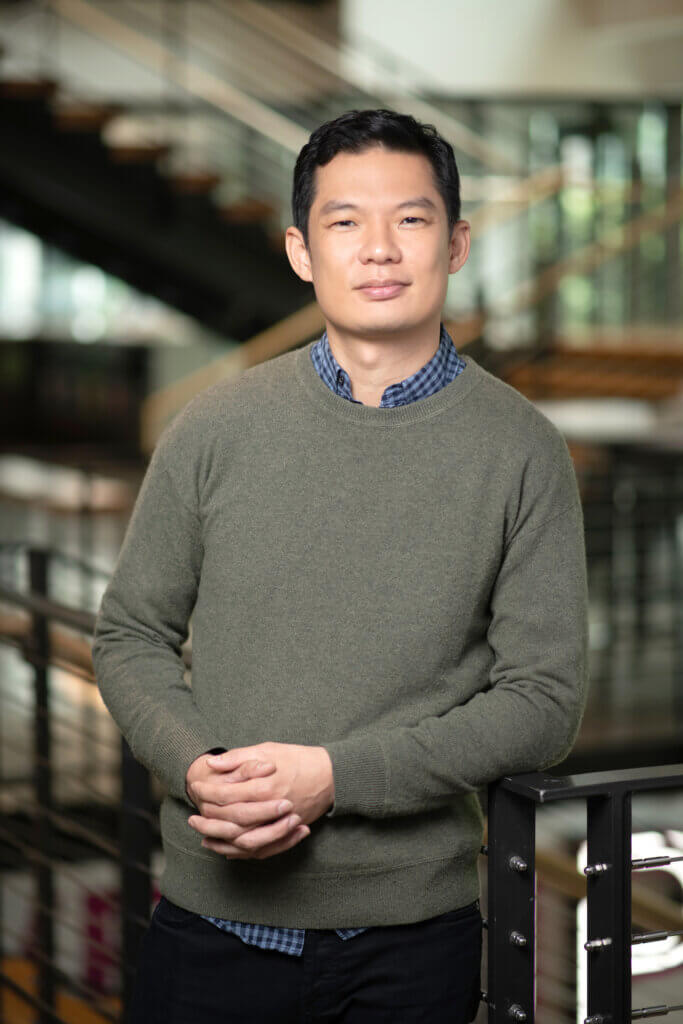
Meet Steve Huynh, a YouTuber, Principal Engineer, and self-proclaimed “productivity junkie.” In 2023, Steve combined all three specialties to engineer his first-ever course launch, opening up a world of new possibilities and reshaping his path in ways he never imagined.
Here’s how Steve made it happen.
Finding Strength in Community
“The community and content are strong and give you confidence that you're doing the right thing.”
—Steve Huynh
Steve joined the All-Access Pass community in the summer of 2023 with a 100k subscriber head start on his YouTube channel, @ALifeEngineered. But he was looking for more than just incremental audience growth — Steve was aiming to start scaling and monetizing what he could offer his audience.
With 18 years in the tech industry as a software engineer, Steve’s mission is to nurture technology professionals like himself, fostering a growth mindset and accelerating their careers as quickly as possible.
Steve set out to create a course to further these aims and better serve his audience. But like many first-time course creators, he had concerns about the intricacies of launching successfully. What would the pricing structure be? How would he market the course and through what channels? Should he launch the course to a beta group first? Would his students have lifetime access or would he offer a subscription model?
Questions like these can be dizzying for entrepreneurs like Steve; in his search for answers, he found the All-Access Pass. “SPI provides clarity and a recipe for success in areas that are highly ambiguous and frankly scary to confront all by yourself,” he says. “The community and content are strong and give you confidence that you're doing the right thing.”
Ready to find join your people and level up?
Like you, we're online entrepreneurs who crave connection, direction, and support from people like us.
Leaving a Career at Amazon to Realize a Dream
Inside the All-Access Pass — SPI’s premiere community-led education platform specifically designed for early-stage entrepreneurs — Steve uncovered the answers he was looking for. The community provides its members with a library of courses, ways to connect, guided course accelerators, access to experts, and more.
“Without SPI I know for a fact that things would not have gone so smoothly,” Steve emphasizes. “SPI helped me set up the offer, structure the program, and with pricing.” He also mentions that A to Z Webinars, his favorite course, was key to his success.
Steve realized that his program was potentially lucrative for students — helping software professionals get promoted as quickly as possible, their earnings might increase by tens of thousands of dollars or more. Steve decided to design his course around a high-ticket model with two price points: $4,000 for standard access and $8,000 for premium access.
He marketed his course with a combination of YouTube content, an email list of 5k subscribers, and guest spots on other email lists. He then launched the course with a live-stream webinar on YouTube with 445 concurrent viewers at its peak.
“I grossed a healthy six figures in sales for my first cohort,” Steve says. “I can’t believe it still.”
But Steve didn’t stop there, planning to expand his offerings to include a community and more courses at lower entry points. Best of all, with more recurring income in sight, Steve finally realized one of his biggest entrepreneurial dreams: he left his 18-year career at Amazon to focus solely on his business.
After the initial cohort launch, Steve decided to run another. This time, he gave his audience a weekend to join—sales increased by 30 percent, concrete validation that leaving his day job was the right choice. (He released this video on his YouTube channel detailing the move.)
“This was not really concrete for me in 2023,” Steve admits. “After the successful launch, this has all changed. If I can do it so can you.”
Somewhat fortuitously, Steve ran into Pat at VidSummit in 2023, before the launch of Steve’s course. “He really helped calm my nerves,” Steve says. “It really helped give me the confidence I needed to launch the program. A million thanks to Pat and the team. This stuff works, guys.”
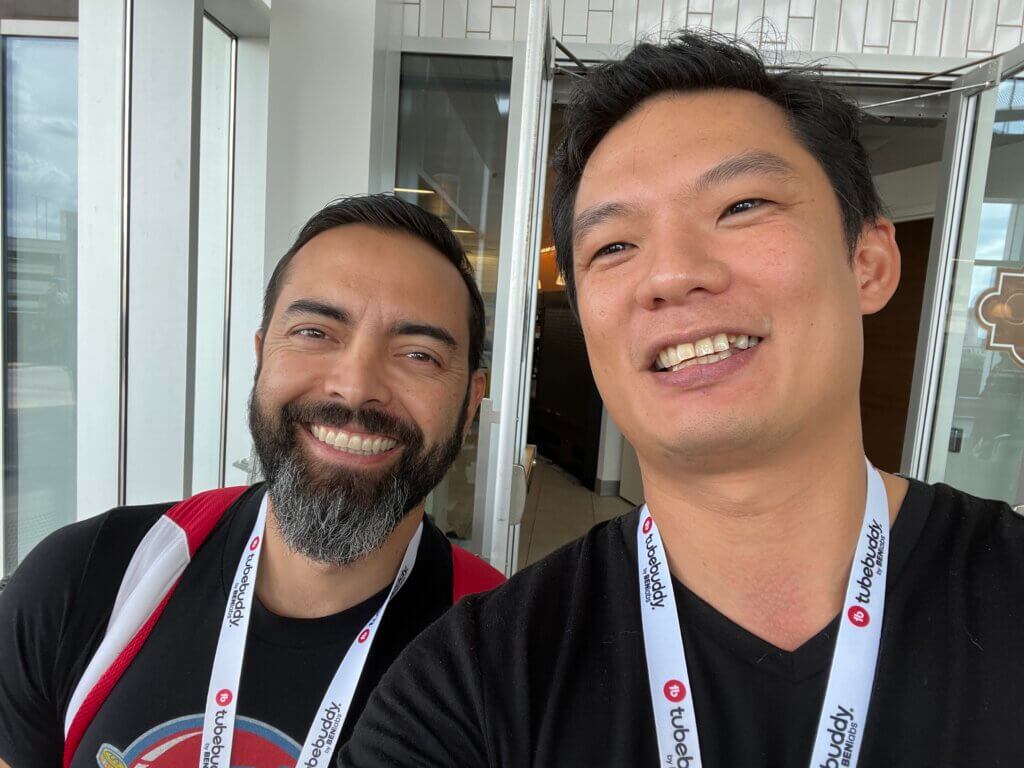
Looking Up
“If I can do it, so can you.”
—Steve Huynh
Steve emphasizes how powerful it is to have your own product to offer on your content, rather than relying on advertisers and ad-sense revenue. “It’s such a pain to maintain relationships and to produce content for needy advertisers,” he says. With the help of the All-Access Pass community, Steve is on the verge of further accelerated business growth.
When asked about the future, Steve says “I'd like to be time rich and not necessarily money rich. That too, but having the freedom to do what I want when I want to is priceless. This is not really an option with my corporate job.”
With his newfound wealth of time, the only way for Steve to go is up. And with a strong community behind him, the possibilities seem limitless.
Lightning Round:
Biggest takeaway or aha moment from All-Access Pass
The biggest challenges were emotional. It's a rollercoaster putting yourself out there. Once I got a handle on that the rest was easy in comparison.
Favorite course in All-Access Pass
A to Z Webinars.
Unexpected benefit of All-Access Pass
I still can't believe all of the courses are included for such a small price.
The post A Lifechanging Course Launch through the Power of Community appeared first on Smart Passive Income.
]]>Amanda Parker wanted to bring her podcast vision to life — with the All-Access Pass it came together in six months.
The post A Successful Podcast Launch in Six Months with the All-Access Pass appeared first on Smart Passive Income.
]]>
What is the meaning of life and the world around us?
This question could stop some in their tracks, fostering feelings of uncertainty or fear. However, for Amanda Parker, it serves as a spark, inspiring her to dive deeper and assist others in discovering the magic within themselves.
As the founder of AmandaParker.co and The Courage Factory, Amanda Parker channels her expertise into empowering leaders and entrepreneurs to navigate the complexities of modern business using the wisdom of ancient practices.
With over 15 years of diverse professional experience, Amanda has honed a skillset that allows her to guide visionaries and rule-breakers worldwide.
In February 2023, Amanda had a vision for a podcast but was unsure how to bring it to life. Taking a decisive step, she joined SPI's All-Access Pass — an educational community tailored for entrepreneurs seeking connection, learning, and growth.
Here, she not only found the answers she needed but also gained invaluable insights and support, marking a turning point in her entrepreneurial journey.
From Vision to Reality
Amanda's dedication to personal development takes center stage on her podcast, Don’t Step on the Bluebells, where healing and growth are the core narratives.
Back when Amanda's podcast was just an idea, she recalls the challenges she faced:
“I knew I could make an impact in helping people, but I felt overwhelmed by how much I didn't know — namely, where to begin to create, publish, and publicize a podcast.”
Unsure of how to proceed, Amanda sought advice from a friend who recommended Pat Flynn’s Power-Up Podcasting® course. Rather than opting for the standalone course, she chose to sign up for the All-Access Pass, emphasizing that she “saw more value in having access to a community” along with the complete library of courses.
Describing the decision-making process as a “no-brainer” due to the right price and undeniable value, she confidently moved forward.
Amanda’s next step was taking the Power-Up Podcasting course, designed for those in the early stages of creating a podcast. Seeking a successful launch, she diligently progressed through the content, allowing her ideas to grow with each module.
“I went from a good idea to a clear and actionable plan I could work my way through, one step at a time,” she says.
Amanda successfully launched Don’t Step on the Bluebells in August 2023, just six months after joining the All-Access Pass. The podcast now averages 100 downloads per episode, totaling over 900 downloads, with listeners tuning in from 34 different countries.
Ready to find join your people and level up?
Like you, we're online entrepreneurs who crave connection, direction, and support from people like us.
Building Confidence in Community
While initially drawn to the All-Access Pass for the Power-Up Podcasting course, Amanda emphasizes that the “backbone of support from SPI” gave her the confidence and courage to bring her vision to life. This support has not only positively impacted her brand but has also influenced her overall mindset.
“I had the confidence to launch and publicize my podcast, to make bold requests of high-level guests, and to steer my brand towards more unconventional practices,” Amanda says. “I knew that I had answers to my questions when I needed them and felt grateful for the continuous support from SPI.”
Amanda’s experience with the All-Access Pass has empowered her to redefine her professional identity, shifting her focus from corporate leadership to prioritizing the growth of her coaching practice and podcast.
Reflecting on this transition, she expresses: “I have created my own stage to share wisdom and insight on personal transformation and healing — and am starting to become known for that field of work.”
The Road Ahead: Podcast and Community Vision
Looking ahead, Amanda is focused on the ongoing development of her podcast, aiming to attract a broader audience with a shared interest in personal growth and healing.
Amanda is currently participating in SPI’s Amp’d Up Podcasting Course Accelerator, designed for members who have successfully published their podcasts and are seeking exponential audience growth and monetization. The accelerator format allows Amanda to progress through the course alongside a cohort, with added support and accountability from the community and Team SPI.
Amanda's ultimate goal is to create a physical space that unites healers and seekers, fostering a community dedicated to profound and positive change. Meanwhile, she remains committed to growing her impact as a transformational catalyst for individuals and groups.
A Note to Fellow Entrepreneurs
To entrepreneurs considering joining SPI's communities, Amanda offers a resounding recommendation:
“Don't hesitate to sign up — it's worth every penny! You get invaluable courses and support on your journey to grow your business and expertise — and you can rest assured you will be perceived as a professional in your craft.”
Amanda's success story with the All-Access Pass exemplifies the power of strategic learning, community support, and the confidence to pursue unconventional paths.
Endless possibilities unfold when passion meets the right resources.
Lightning Round
Biggest takeaway or aha moment from the All-Access Pass
I love watching how Pat runs his business and the value he delivers. He is inspiring and has no B.S. — just practical, relatable, realistic advice and support to build out your vision. I am grateful that I had the backbone of support from SPI to launch this endeavor with confidence (and courage!)
Favorite course in the All-Access Pass
Power-Up Podcasting®.
Unexpected benefit of the All-Access Pass
I hadn't realized there was an active community when I signed up — I was primarily interested in the course. I am pleased to see how the offering is being built out to provide even more support.
The post A Successful Podcast Launch in Six Months with the All-Access Pass appeared first on Smart Passive Income.
]]>